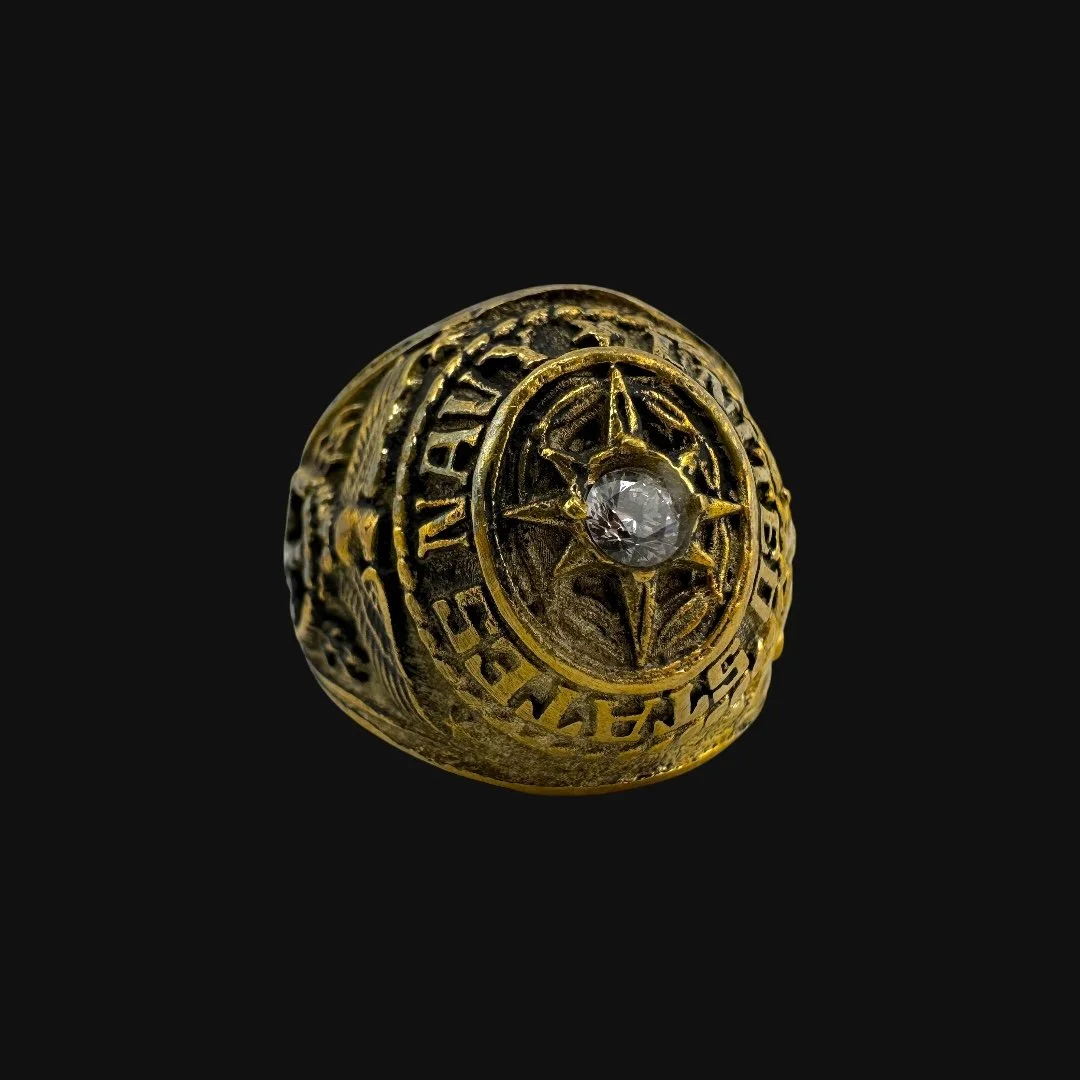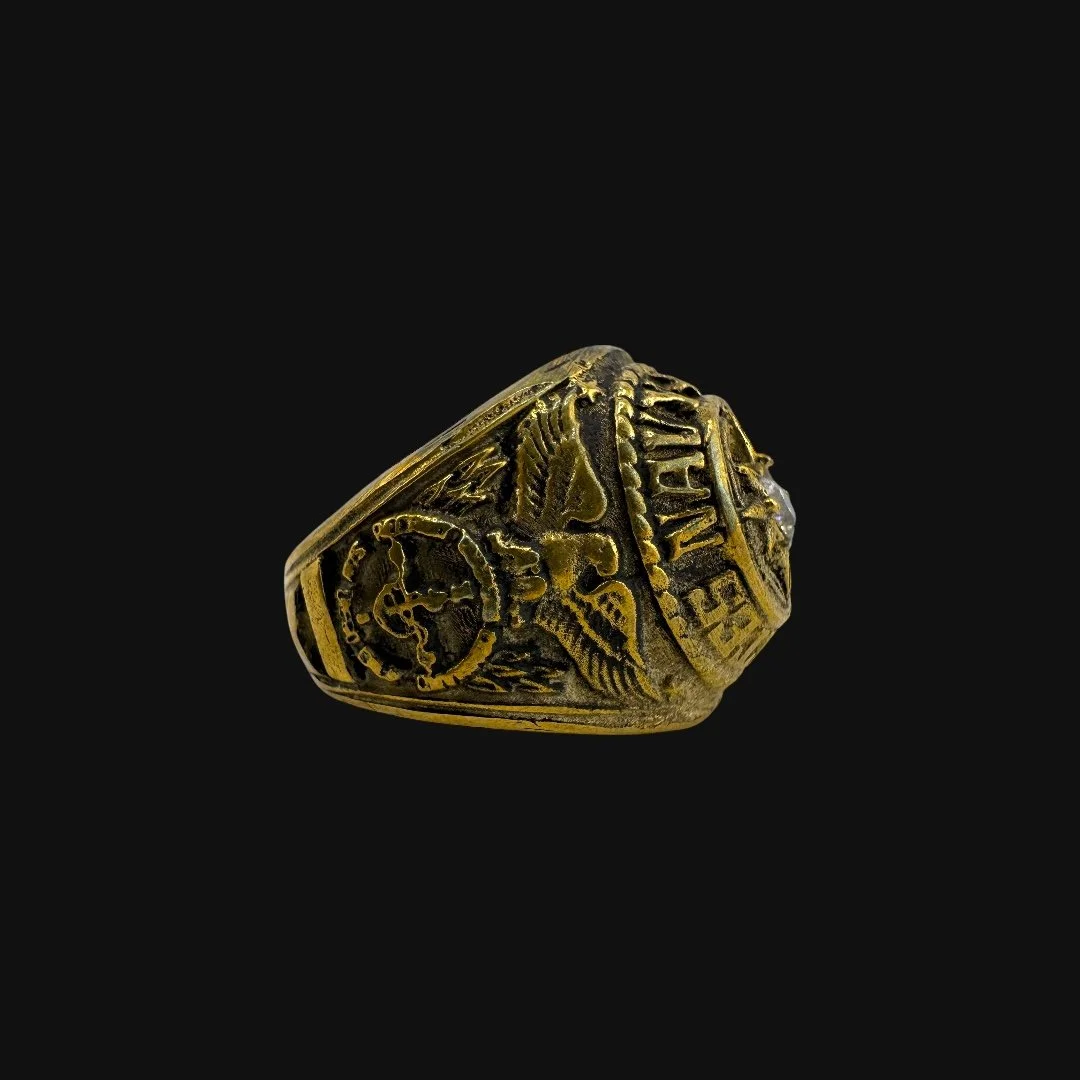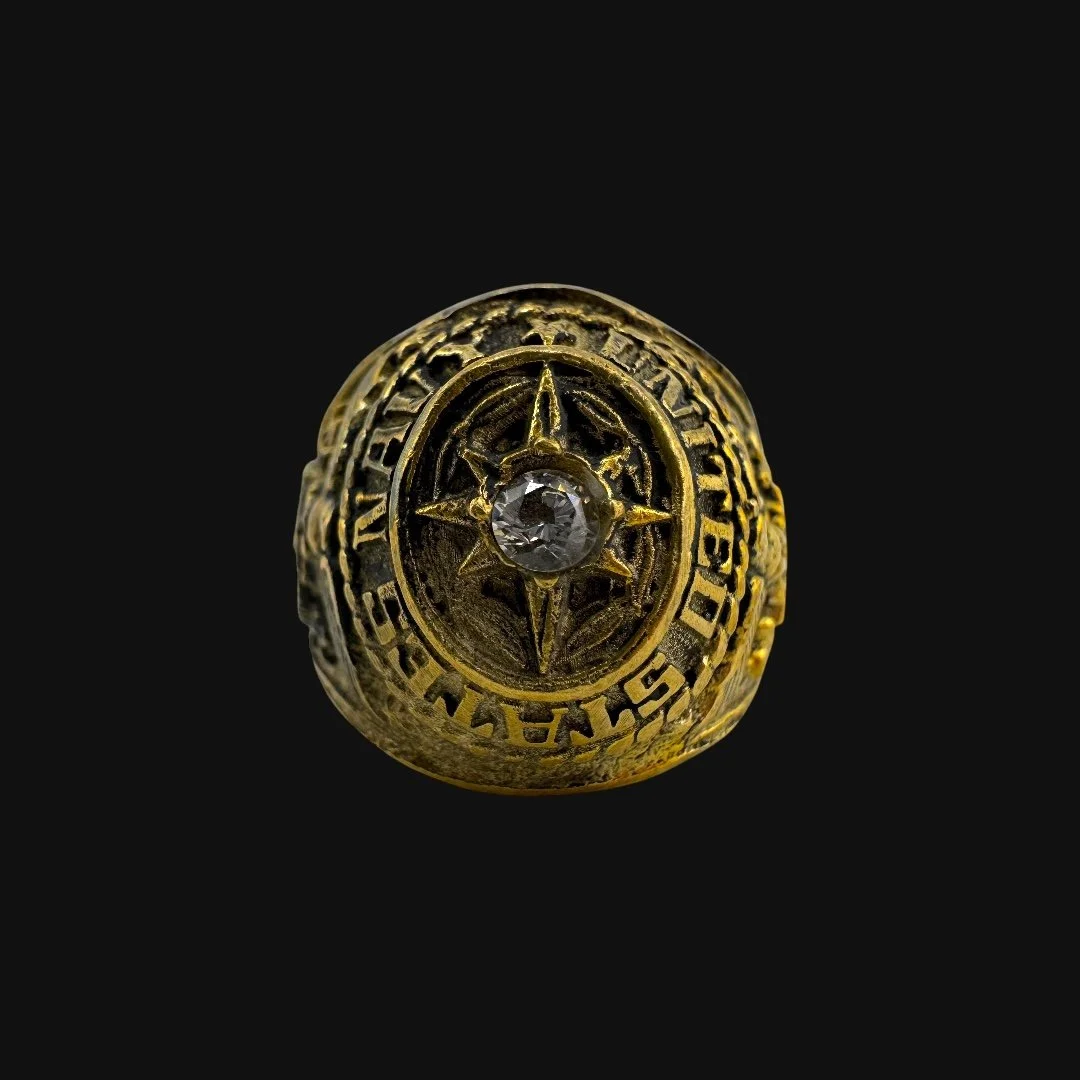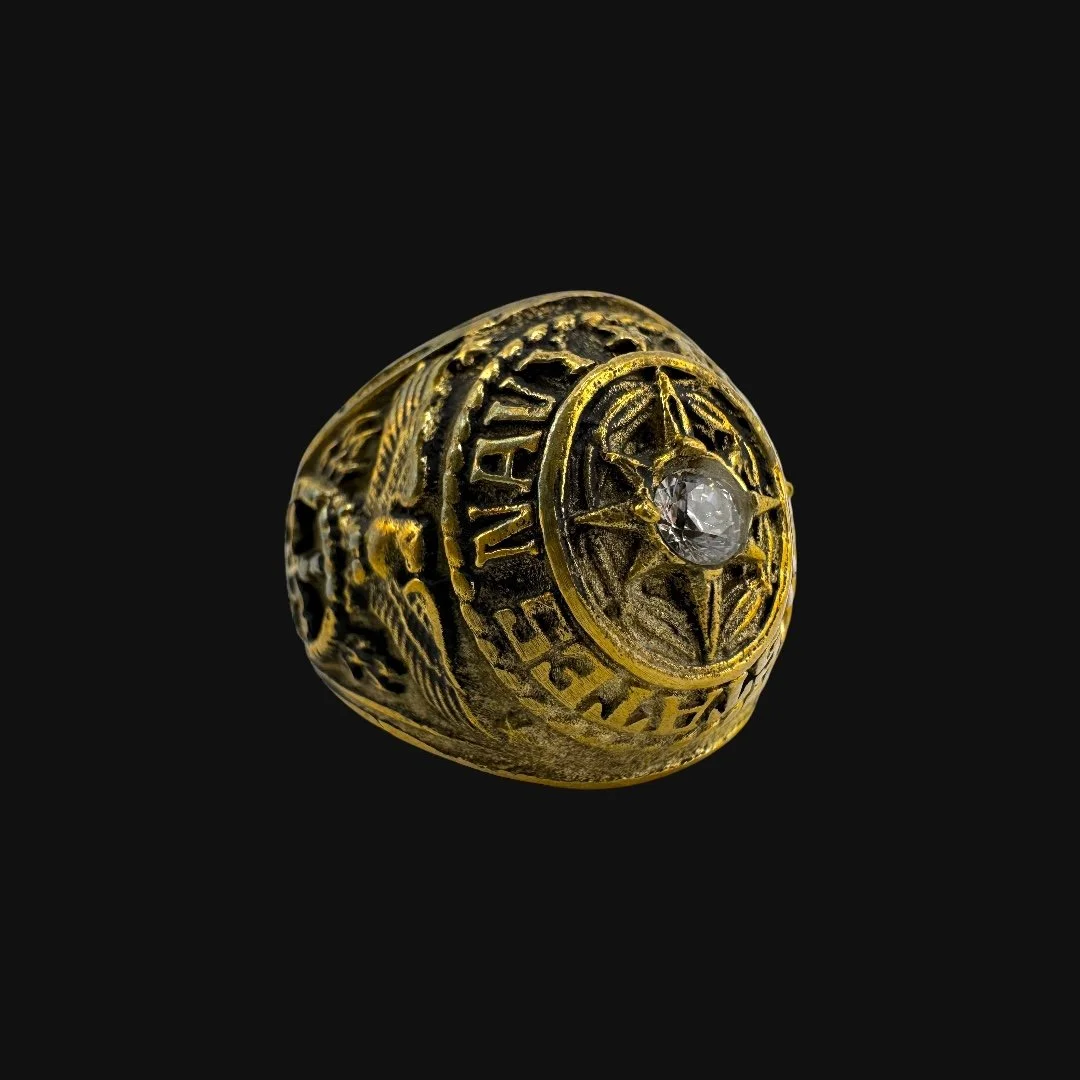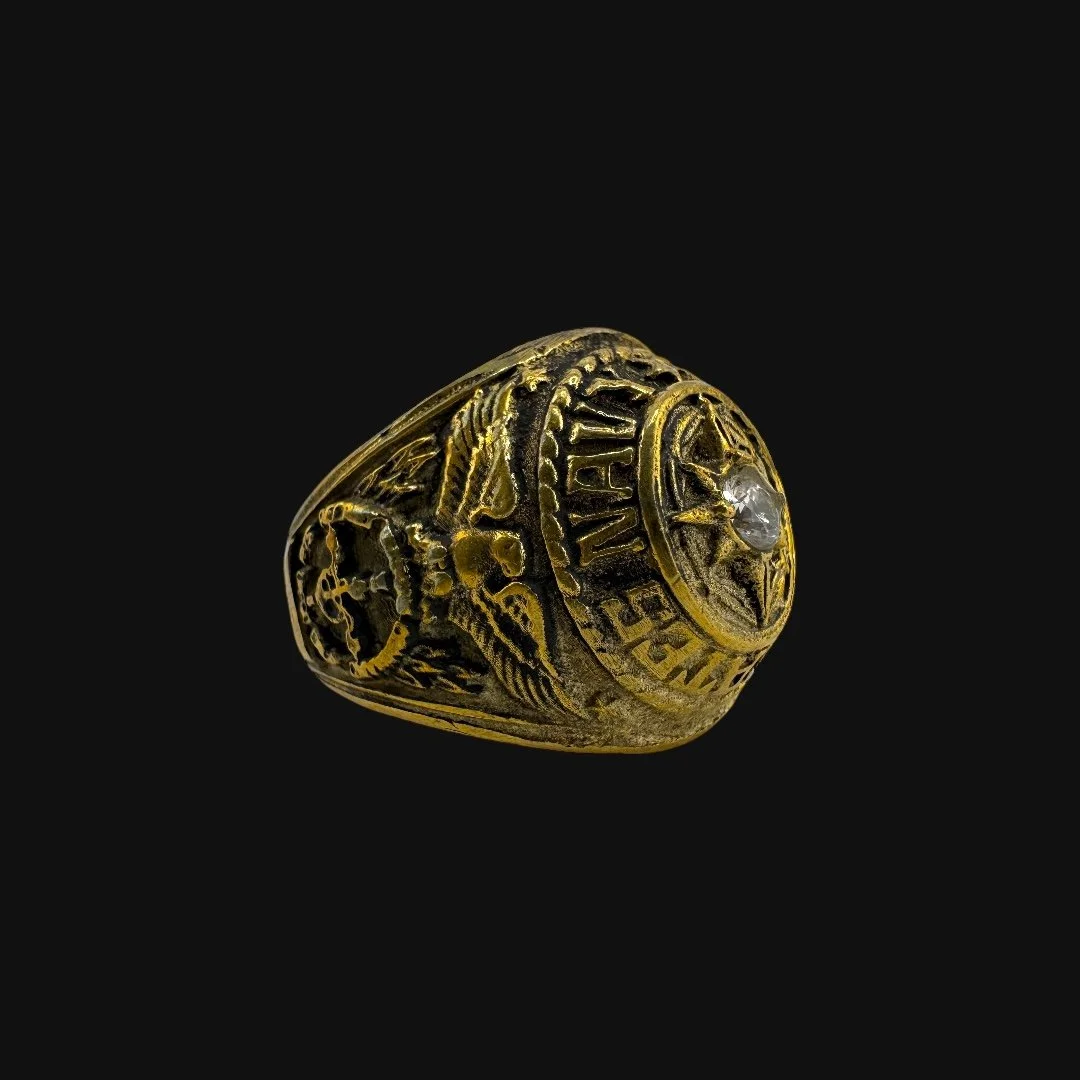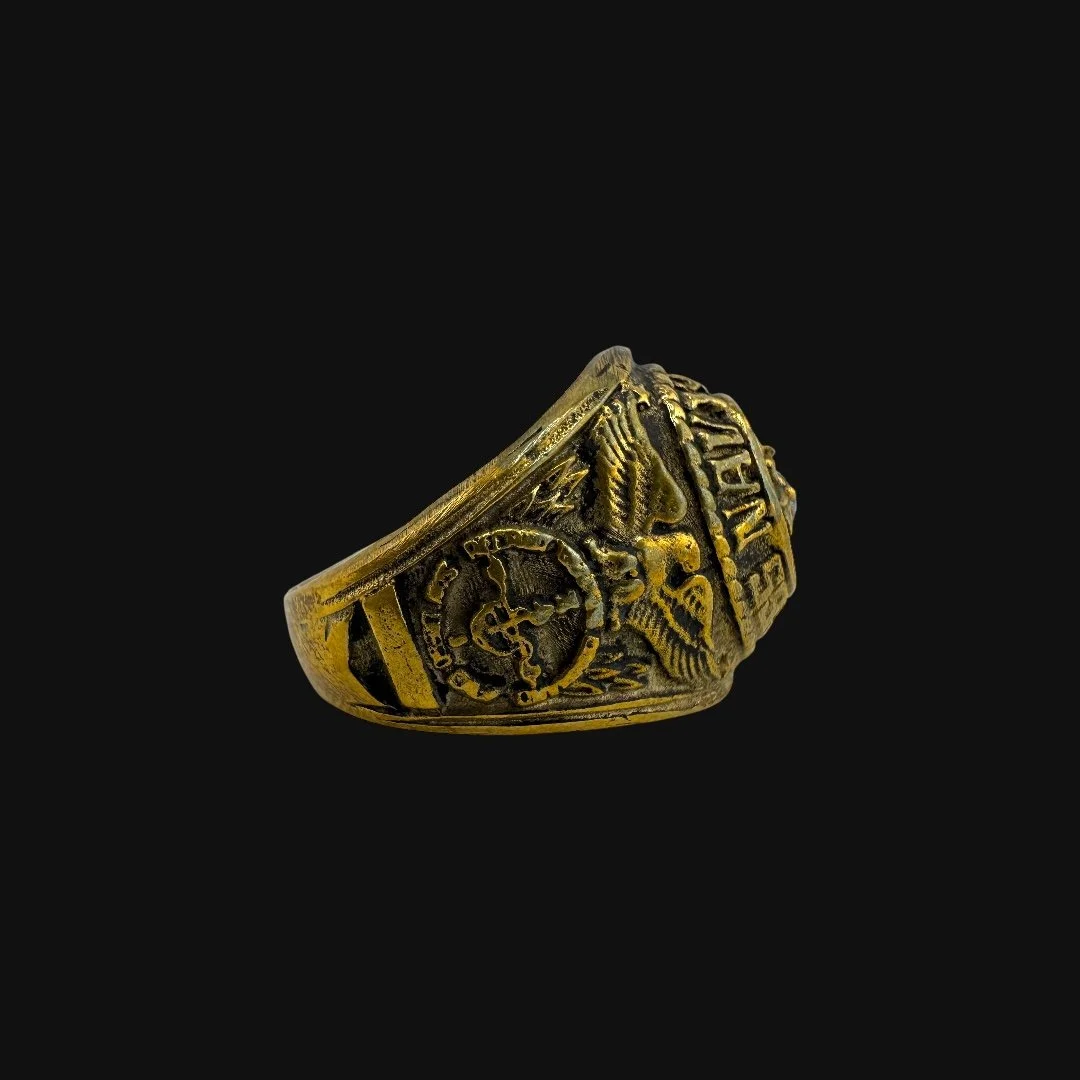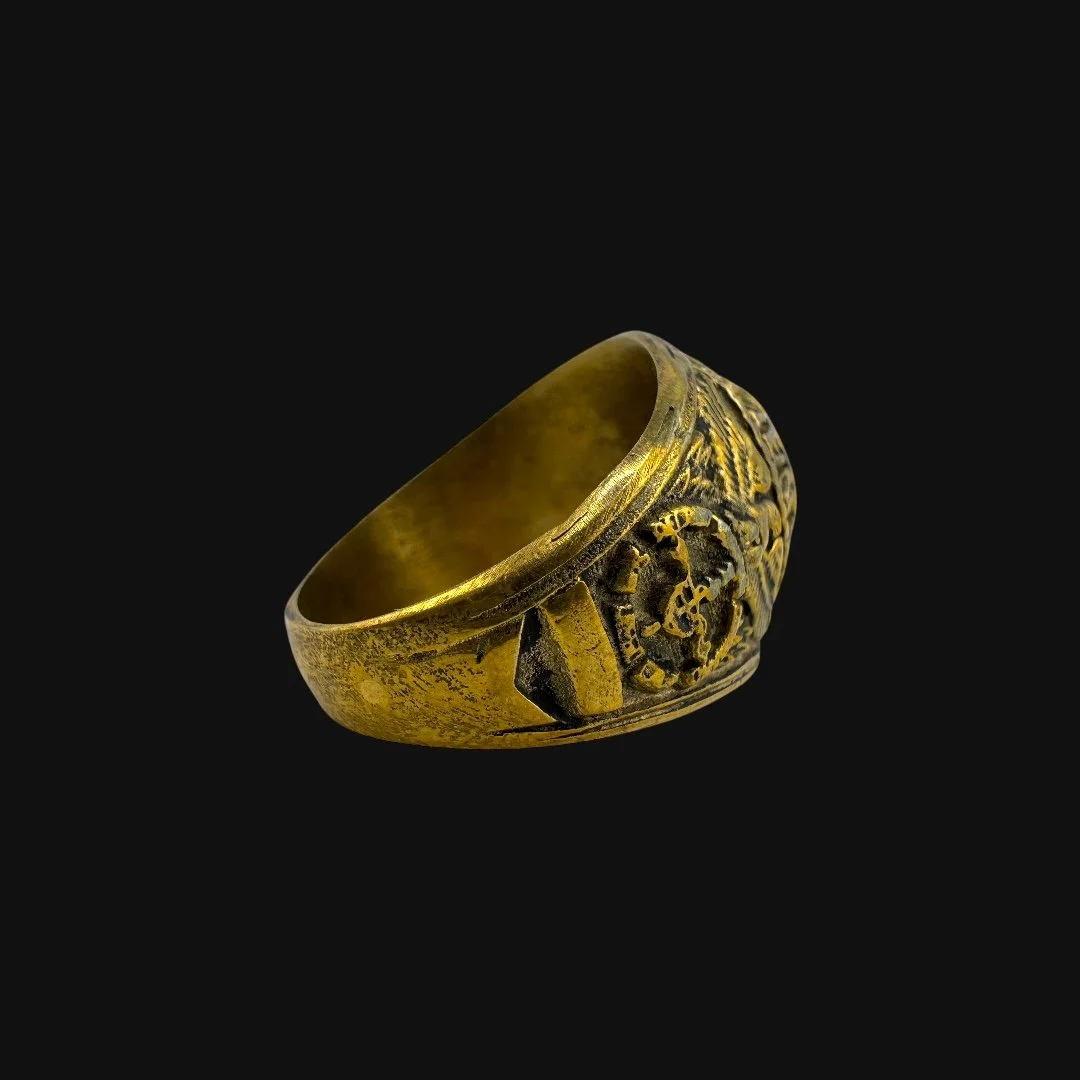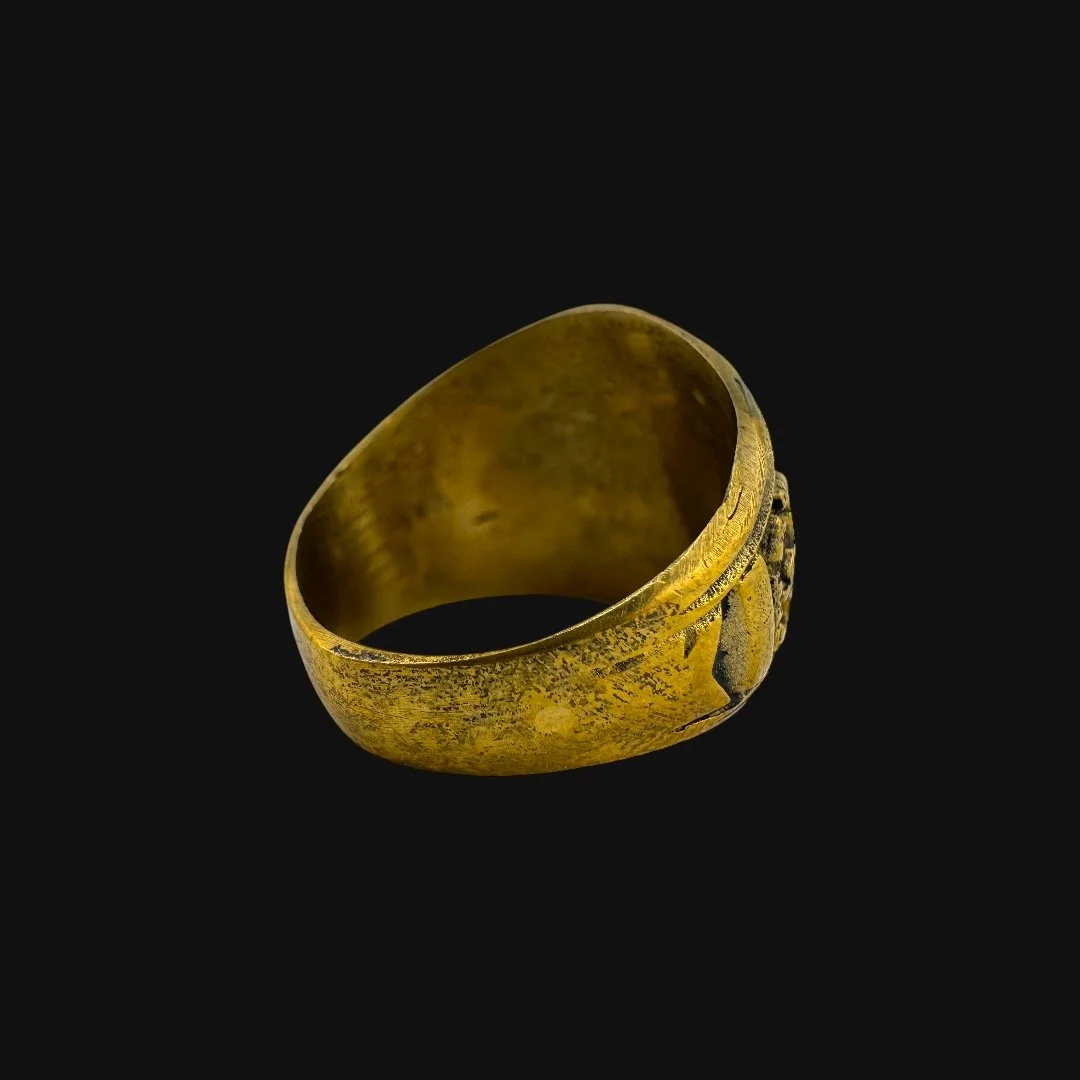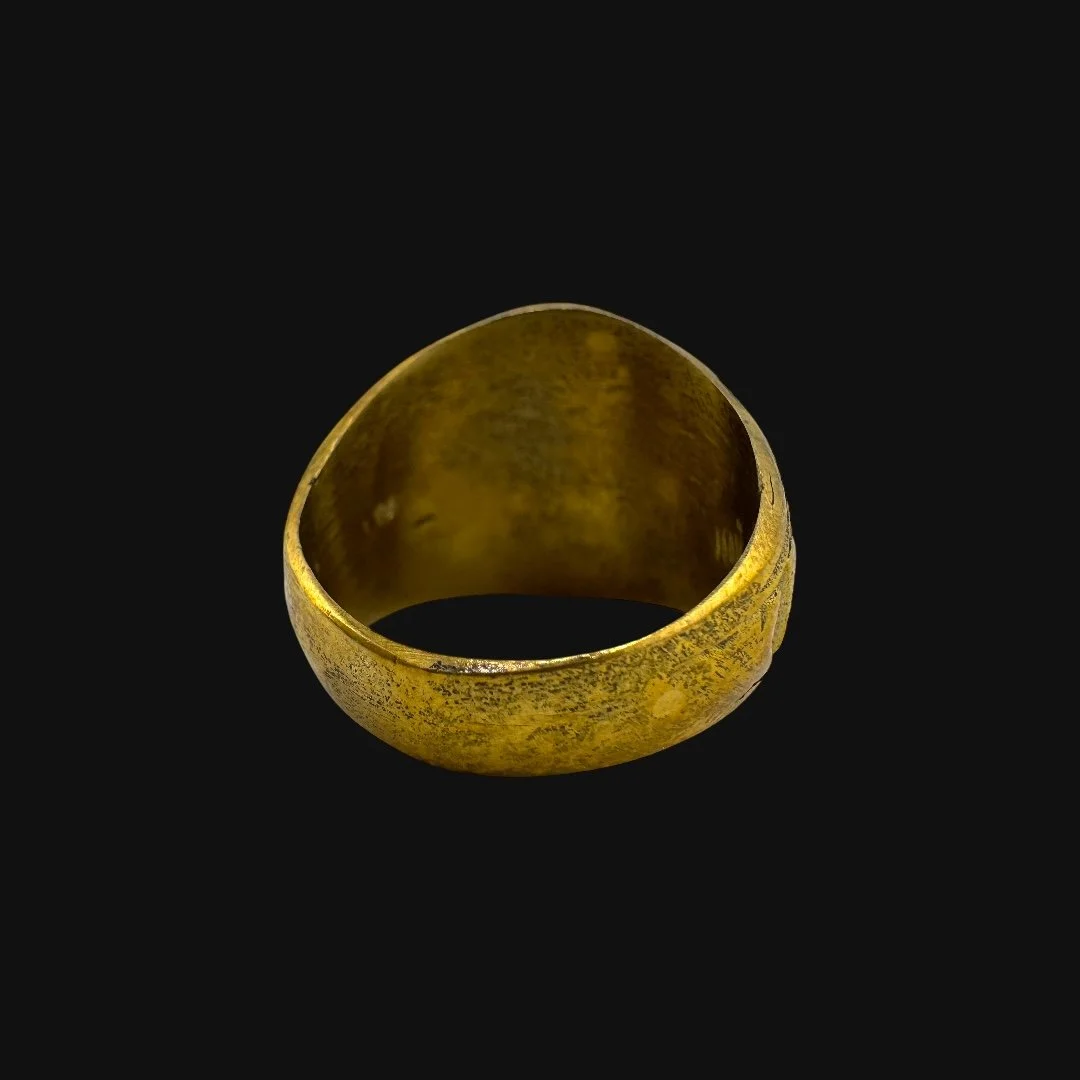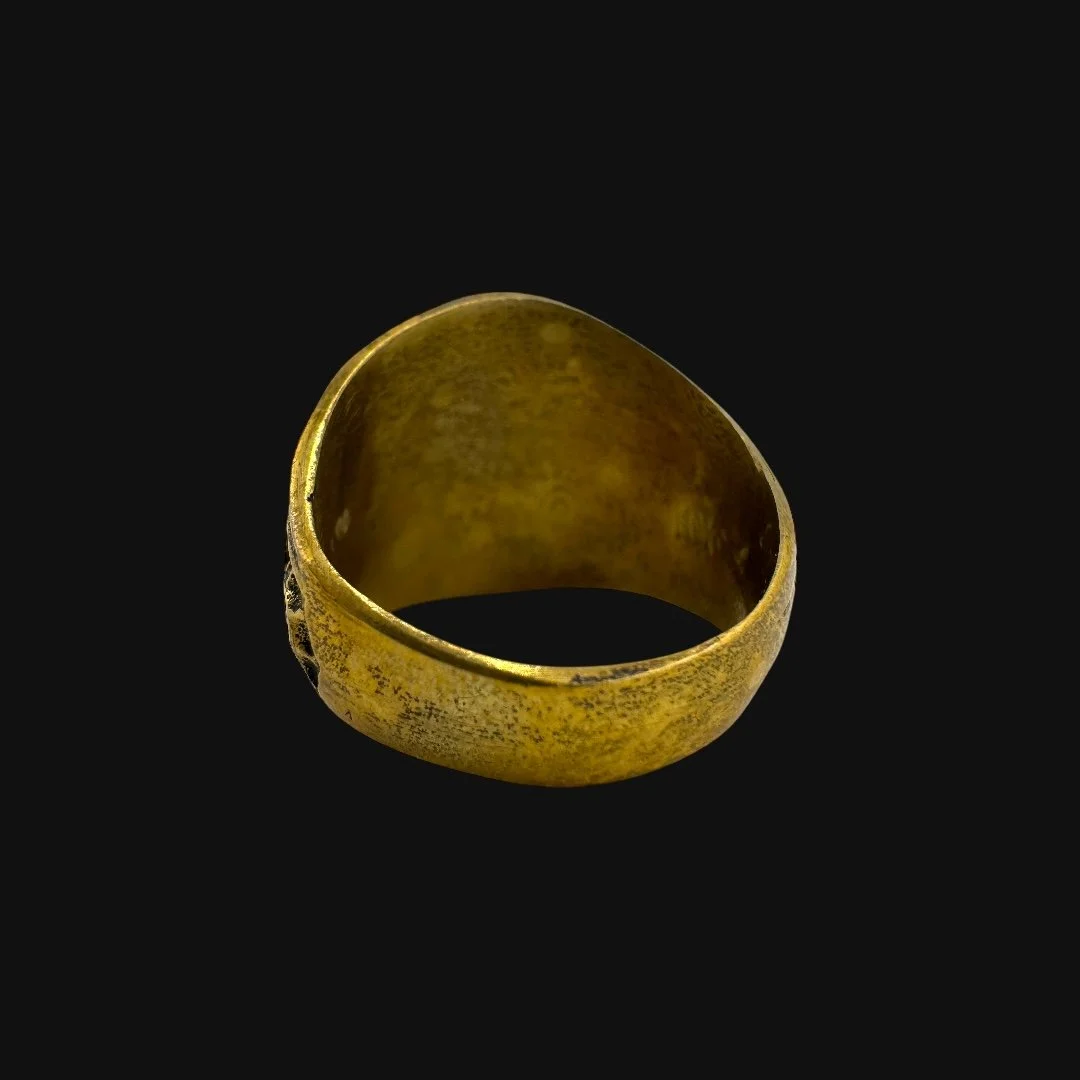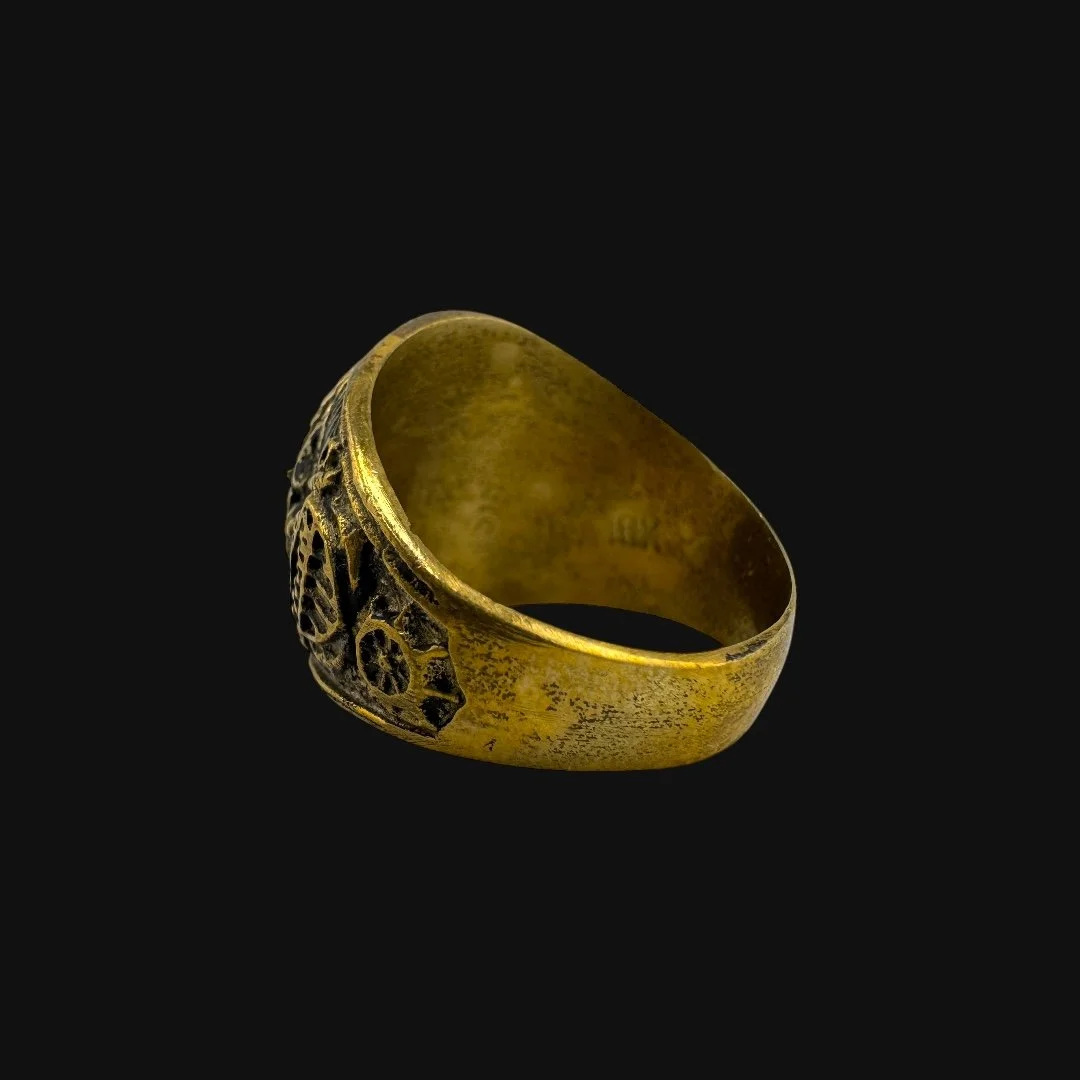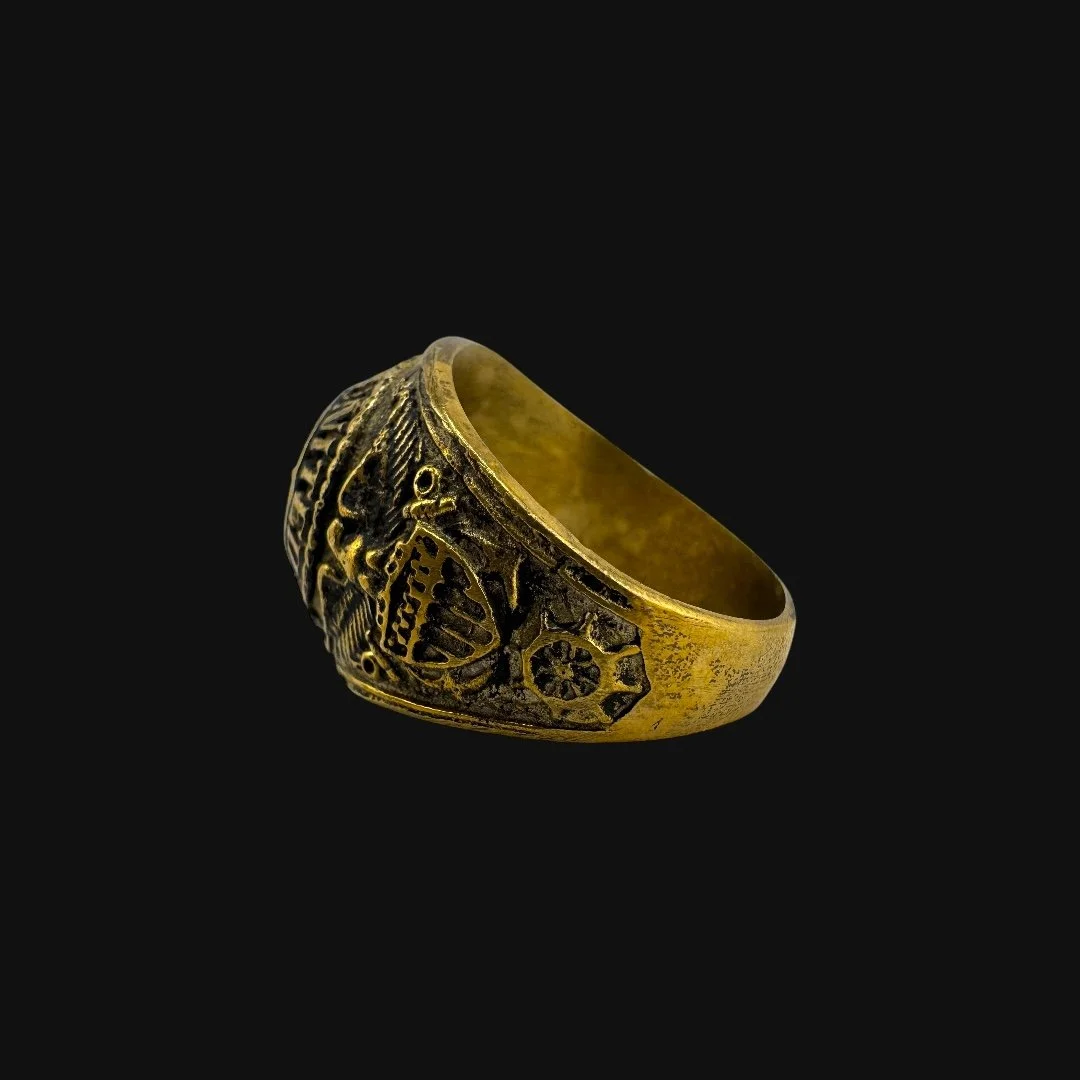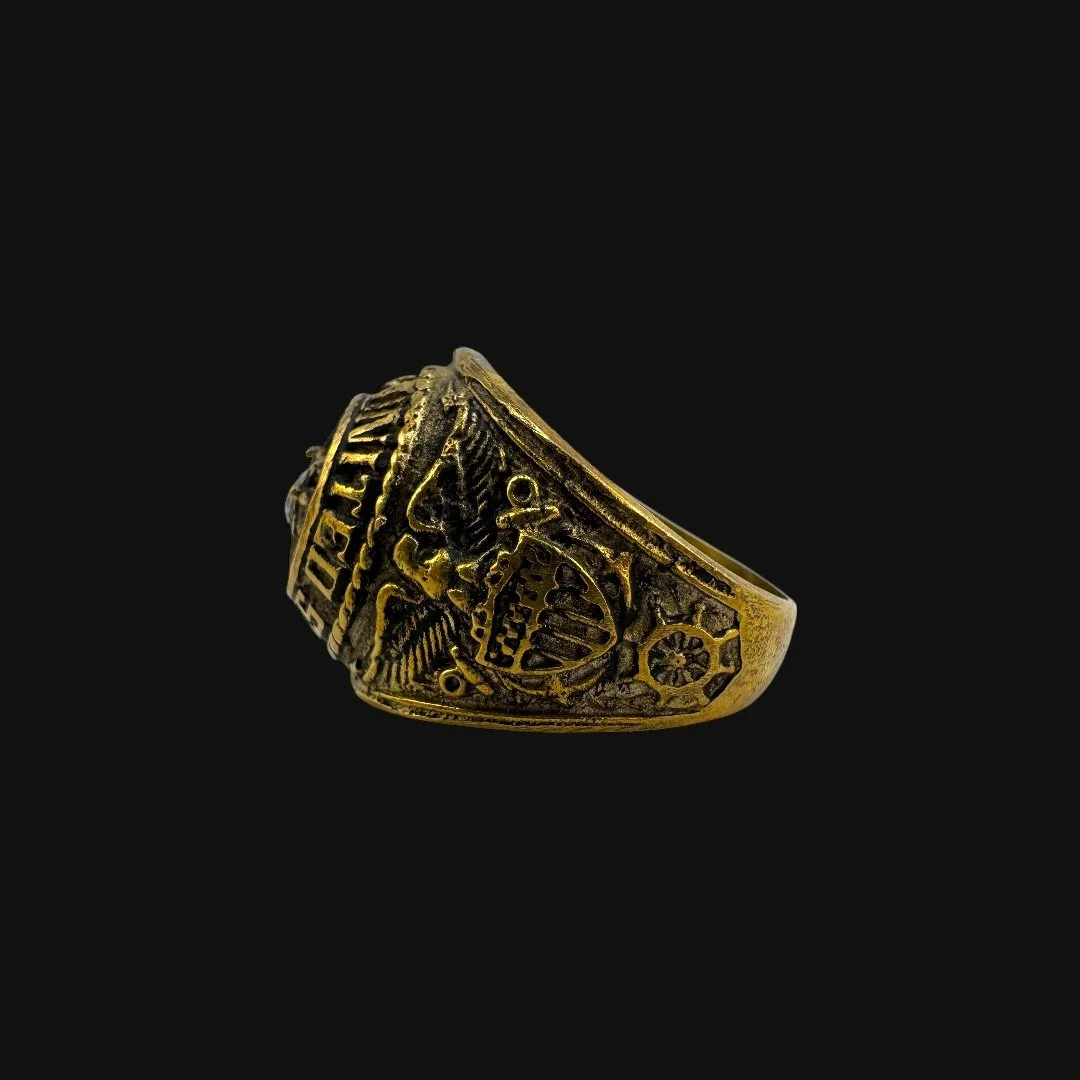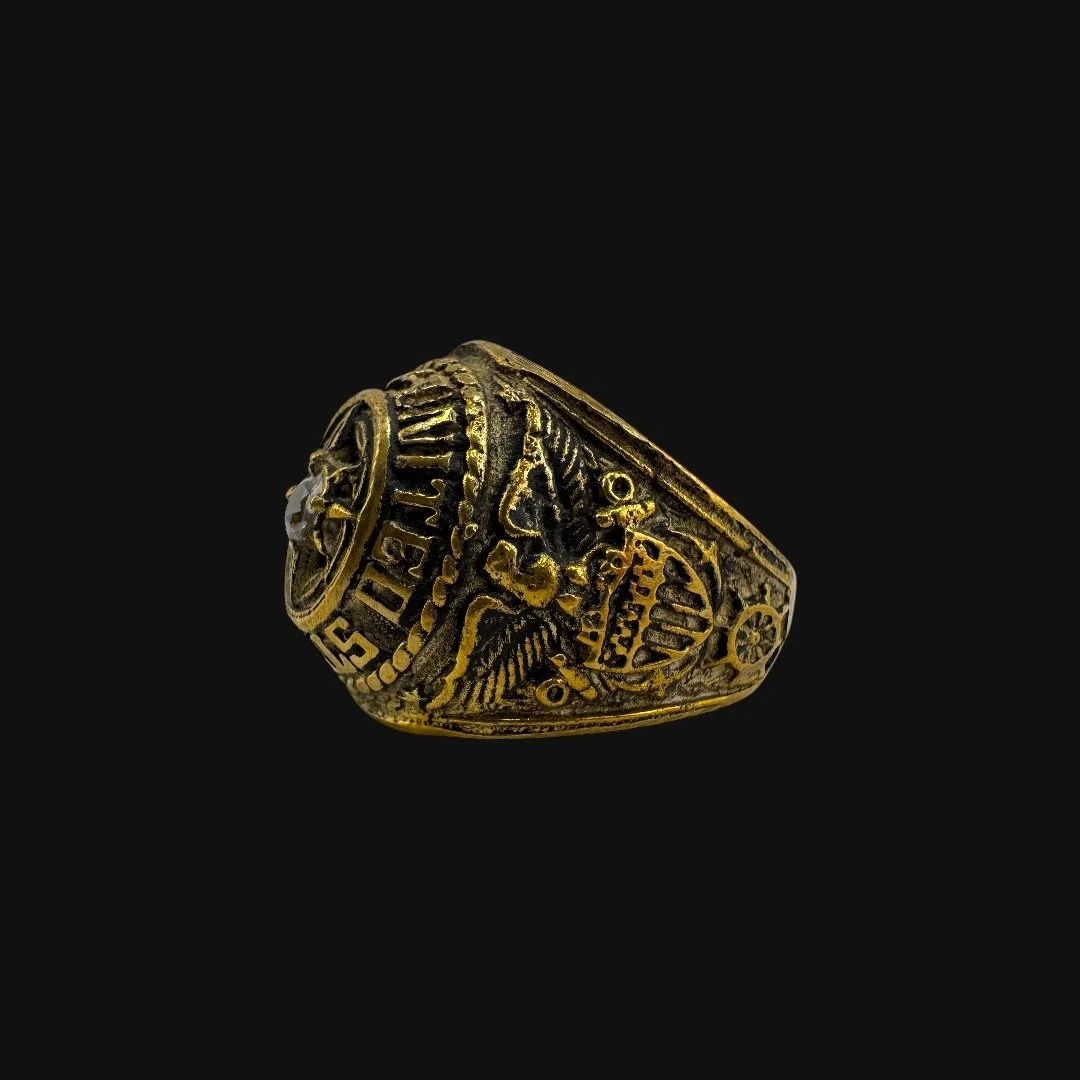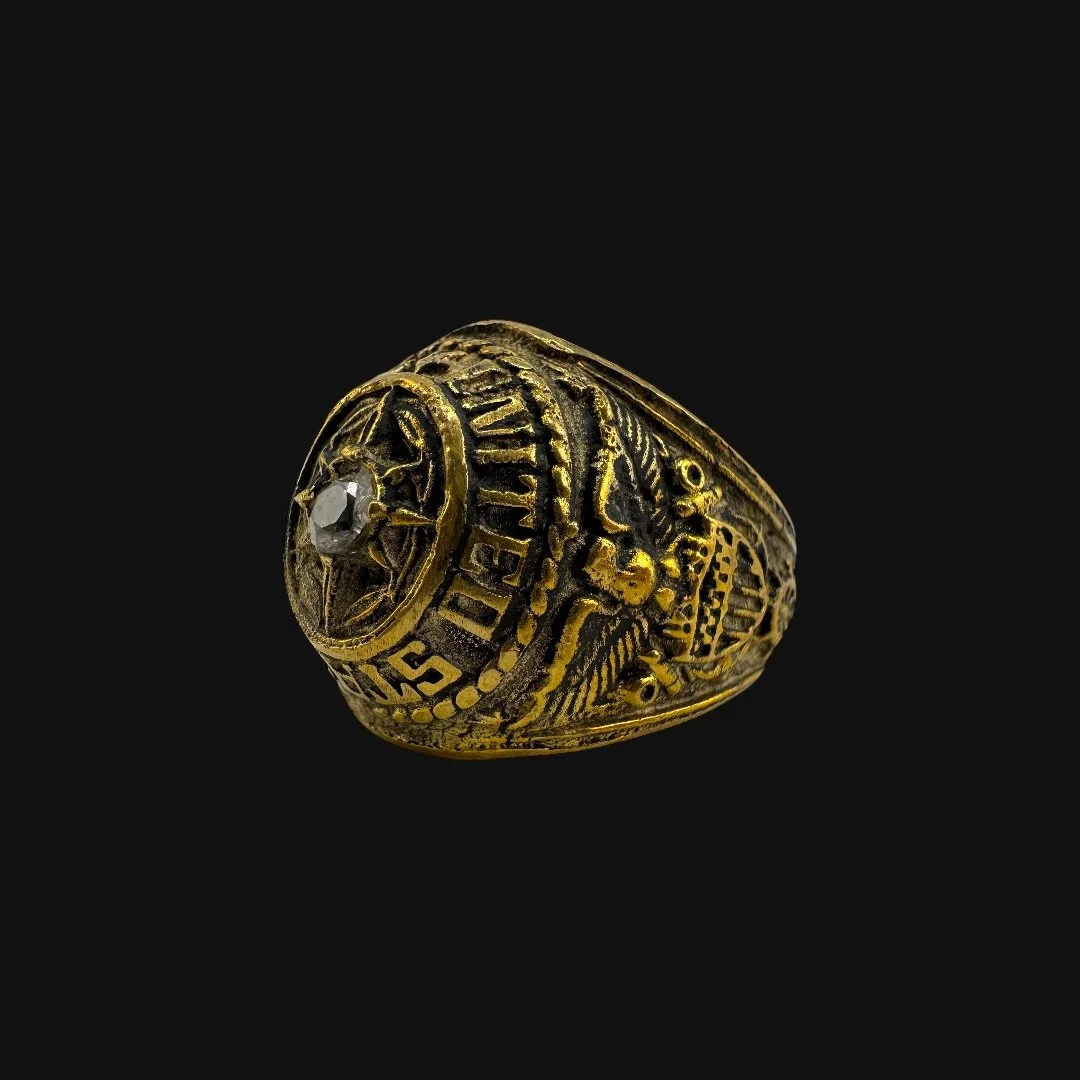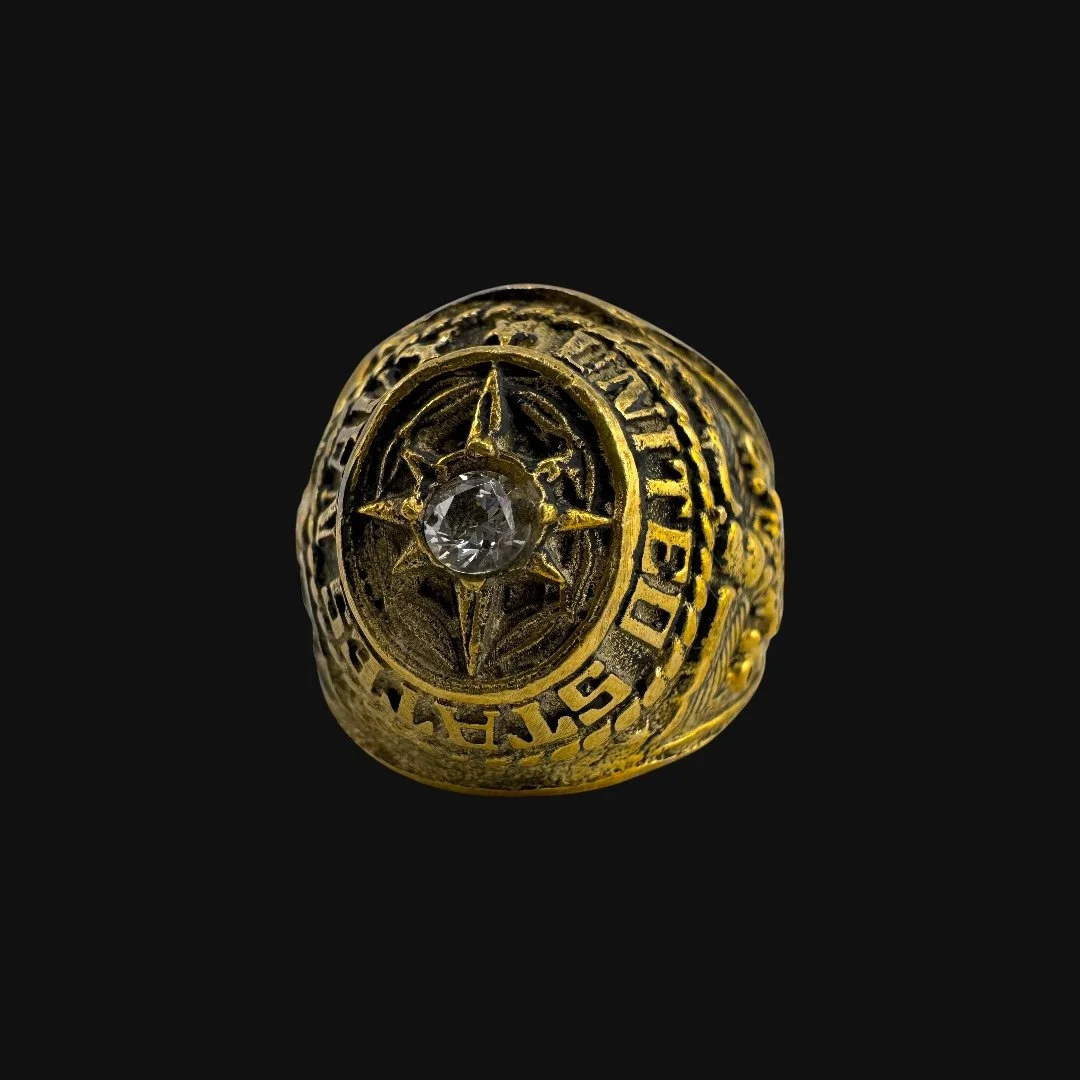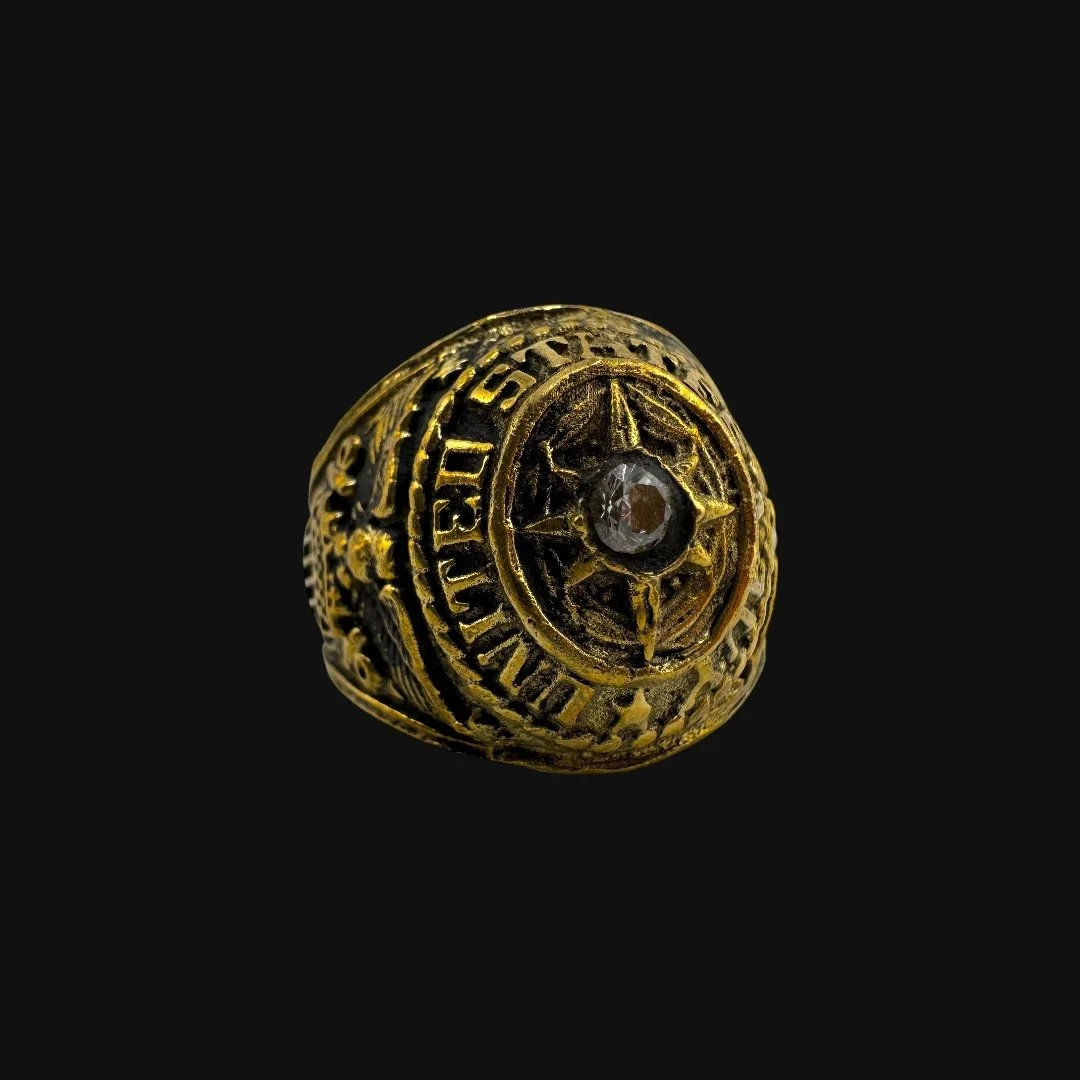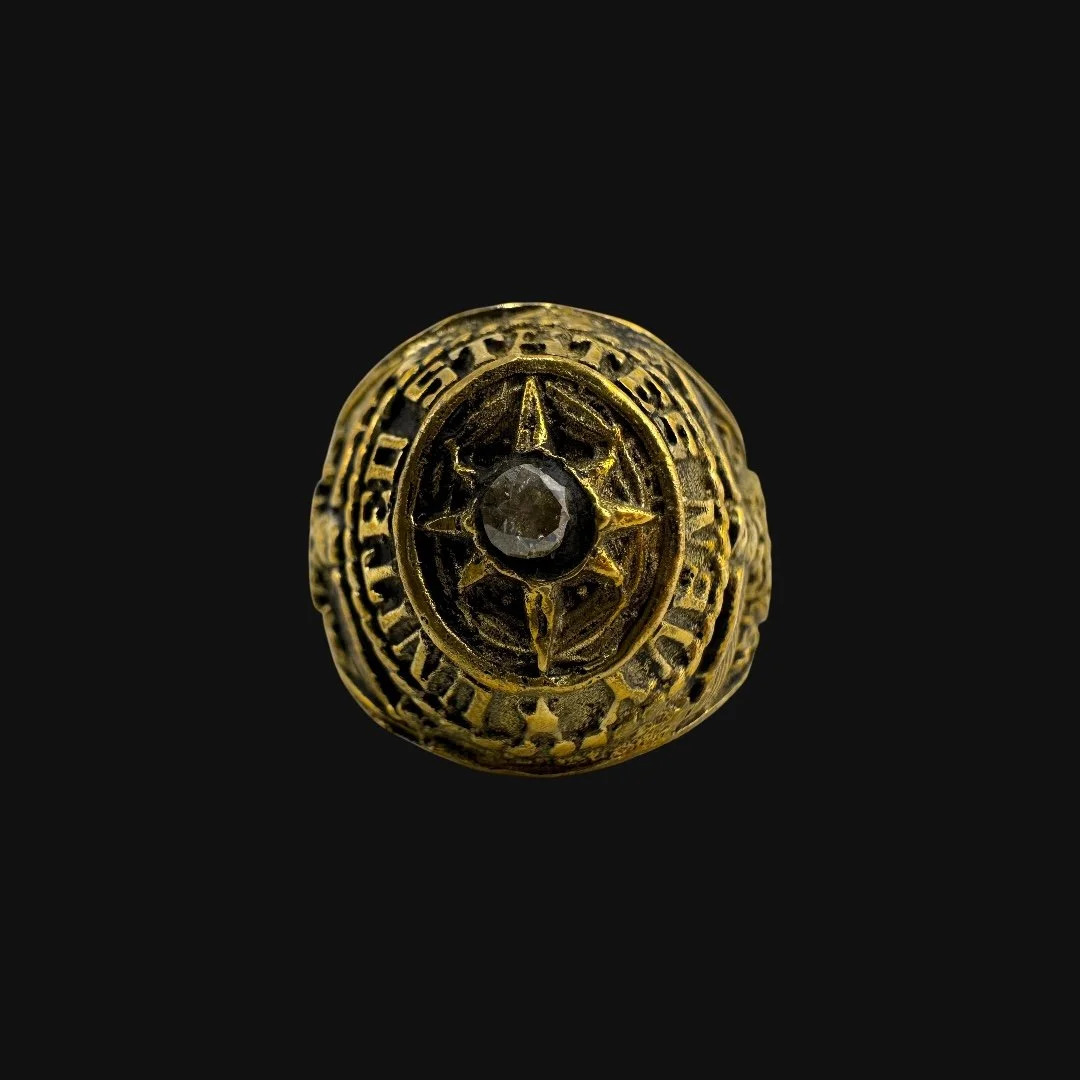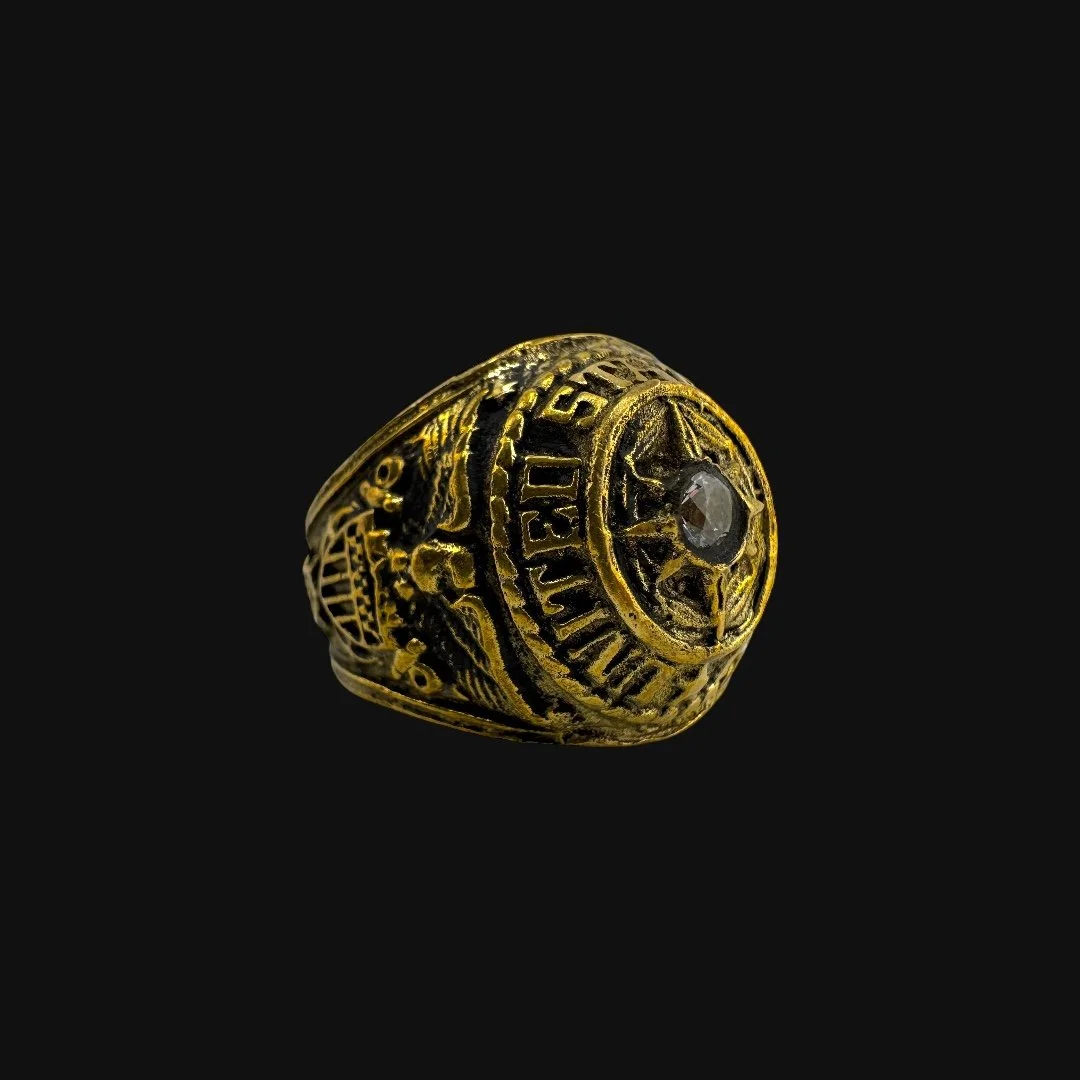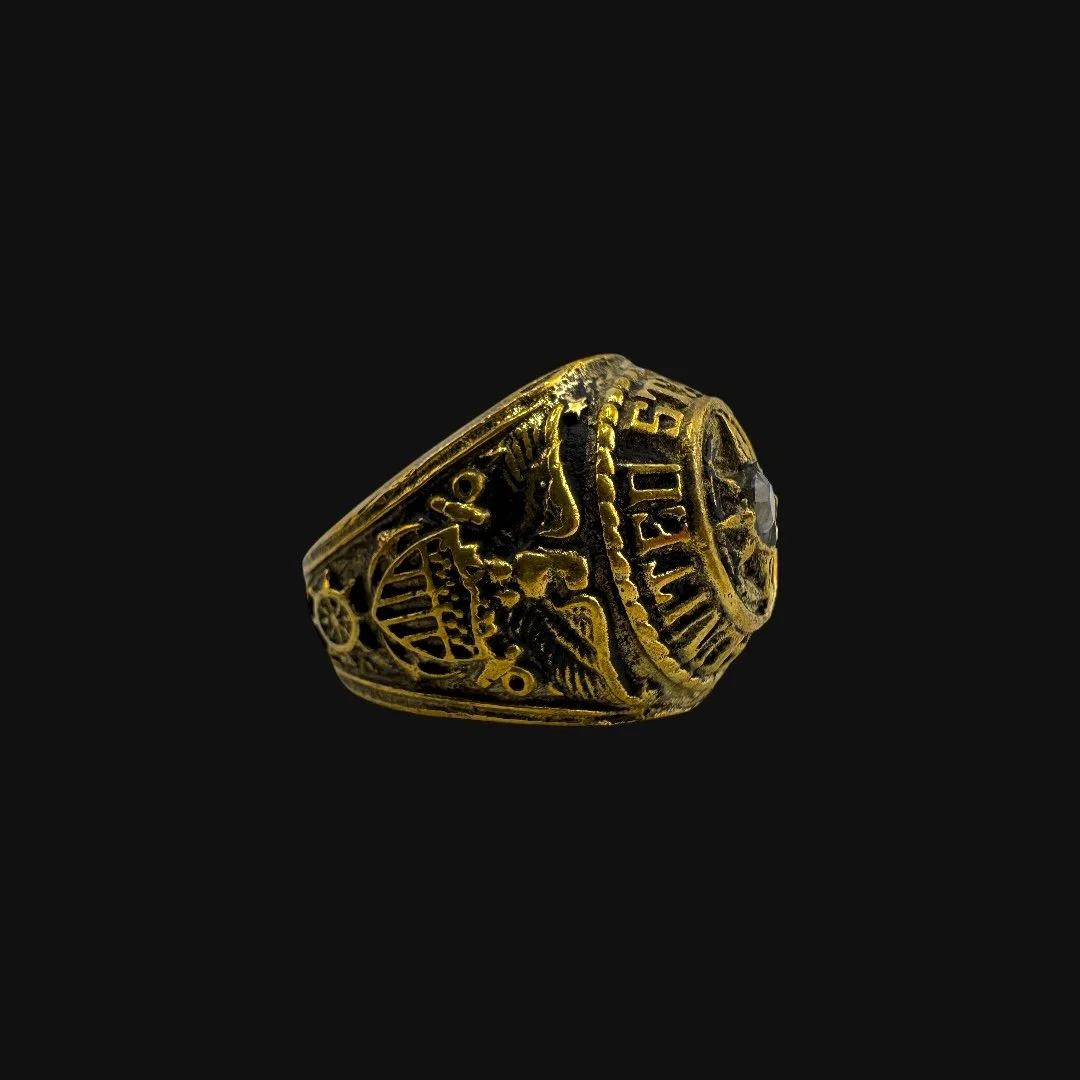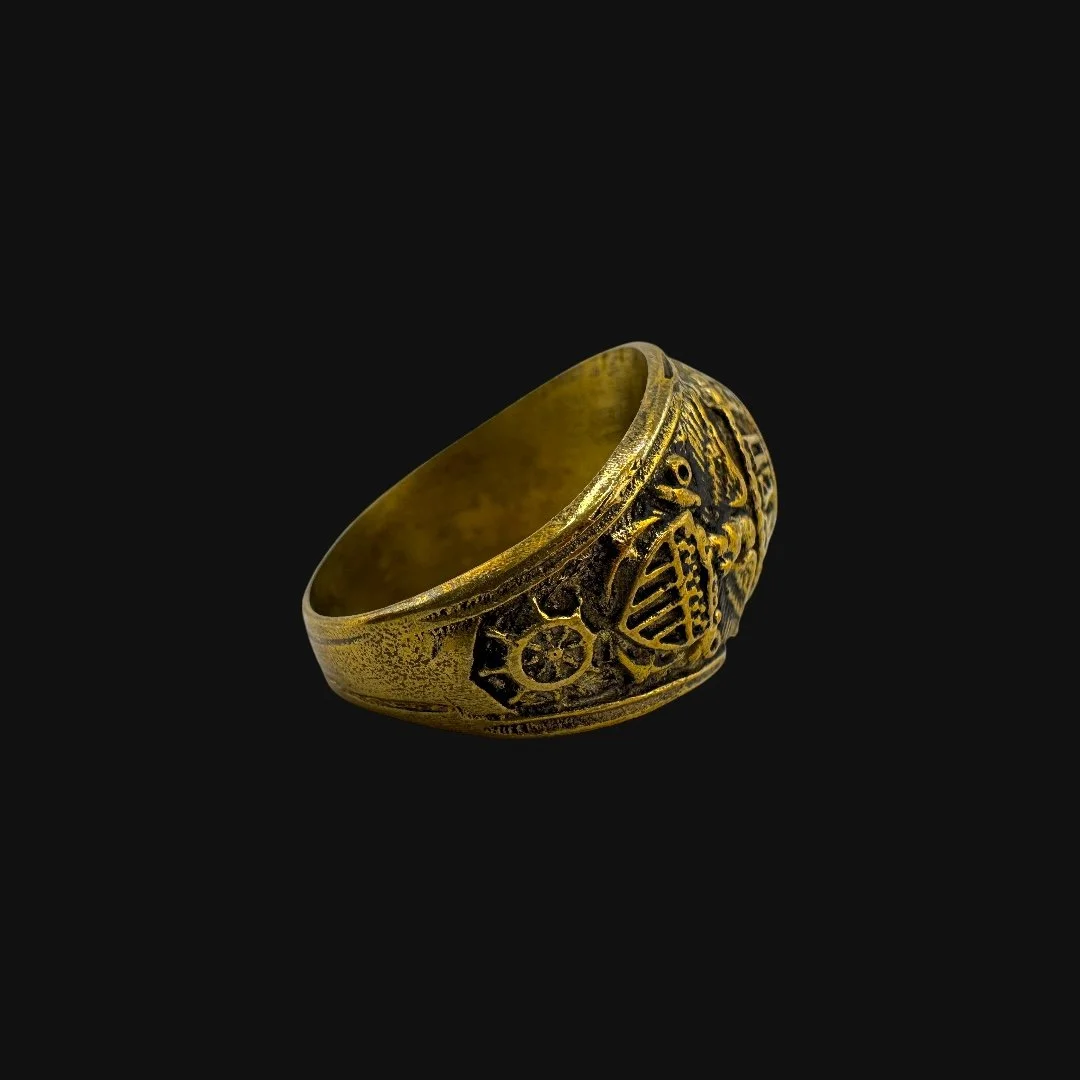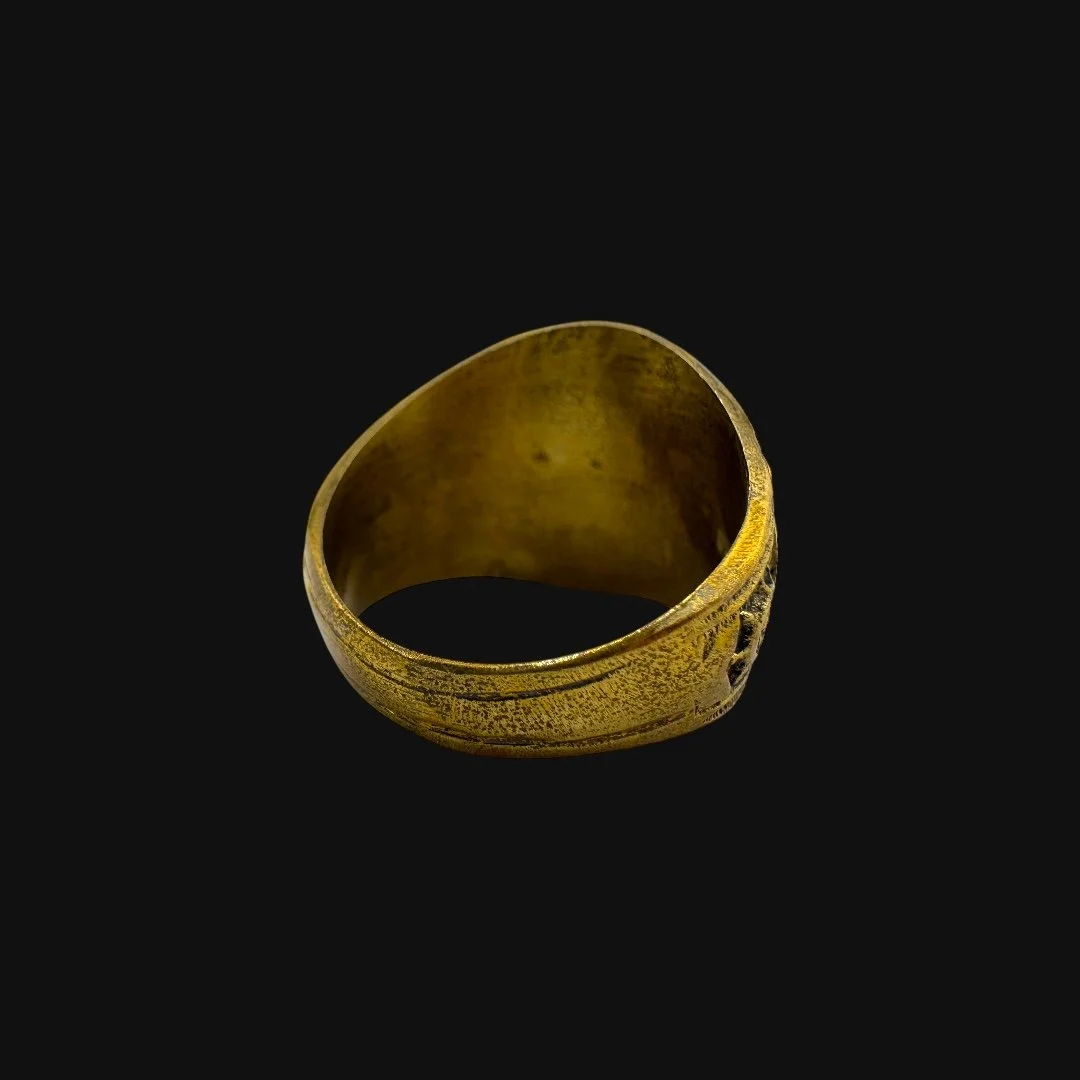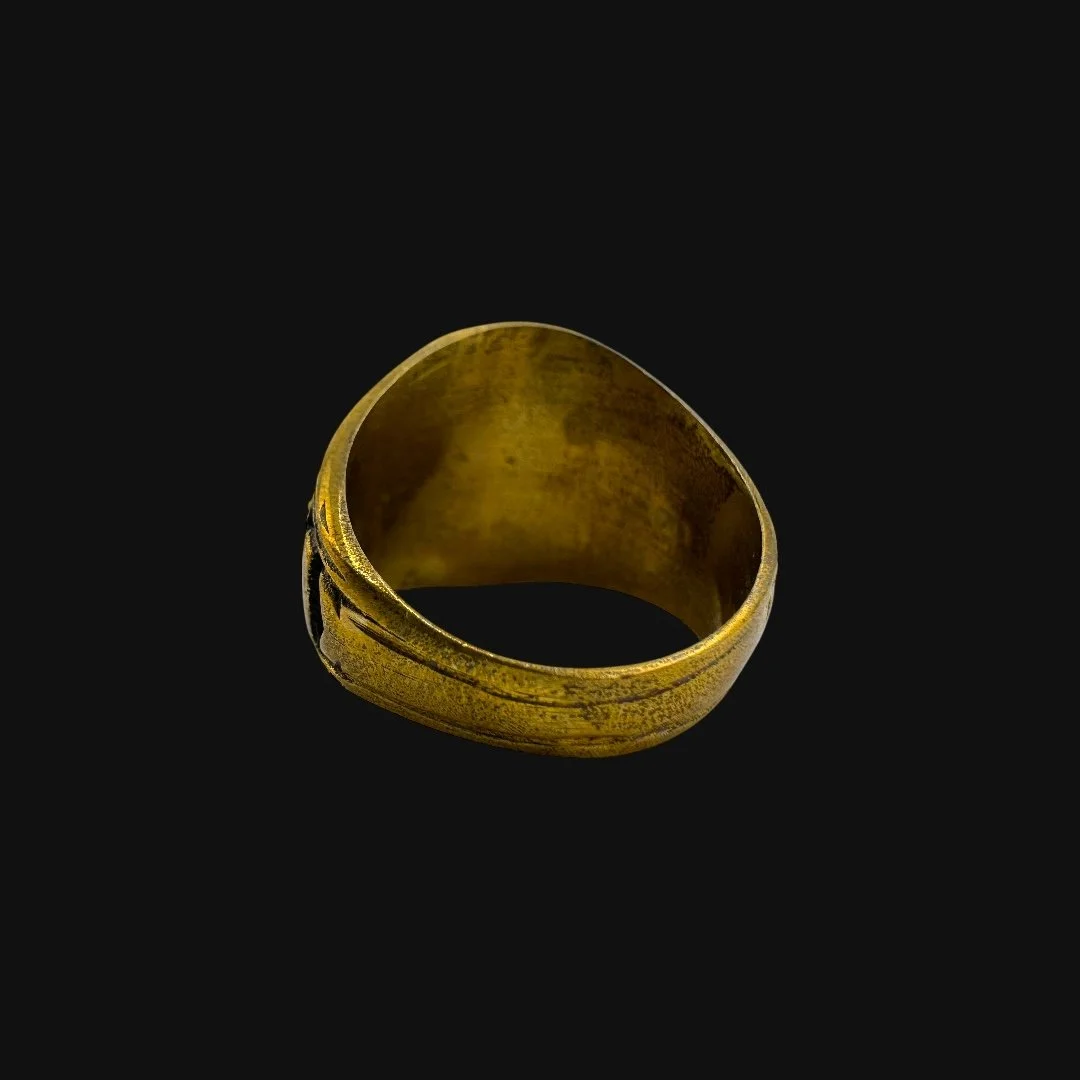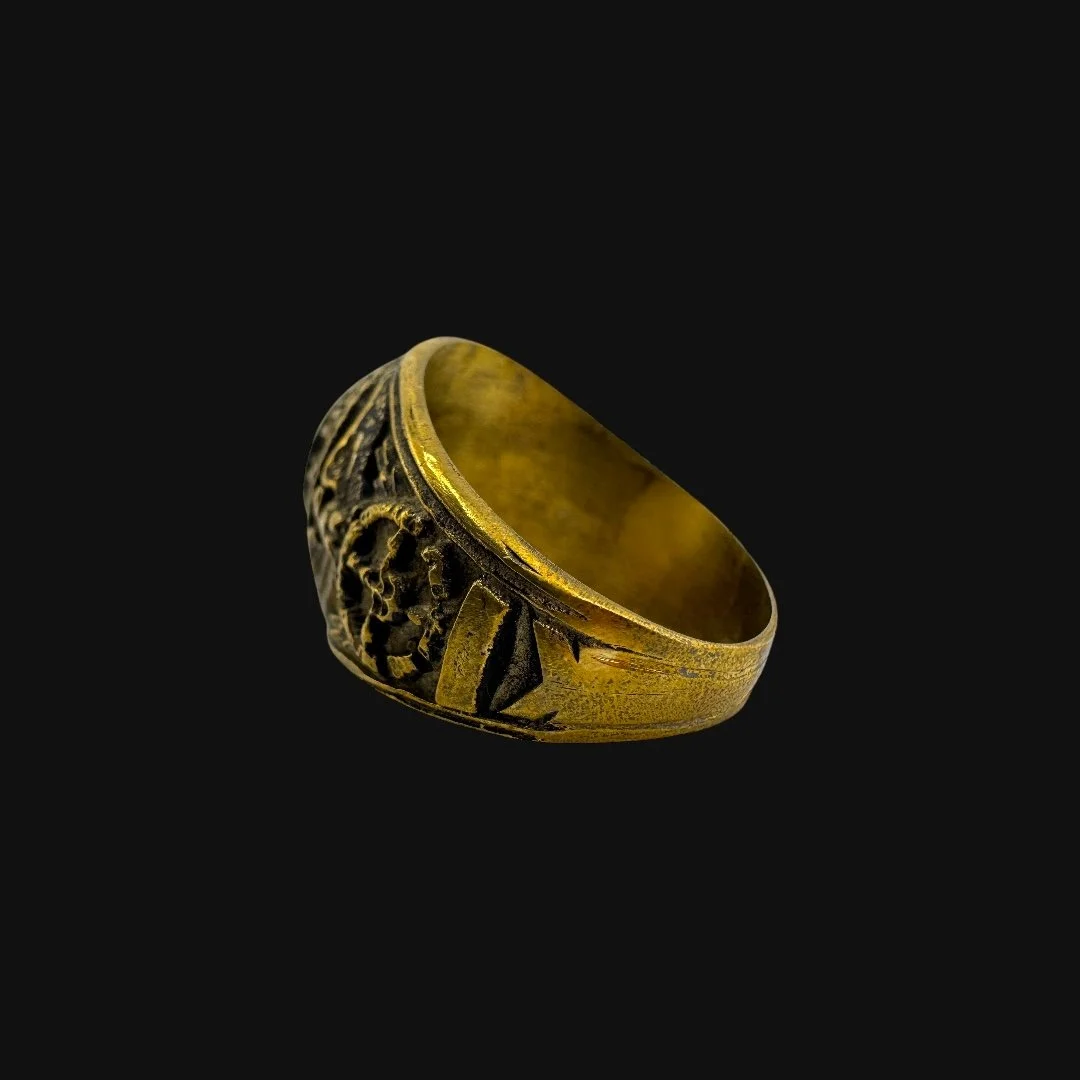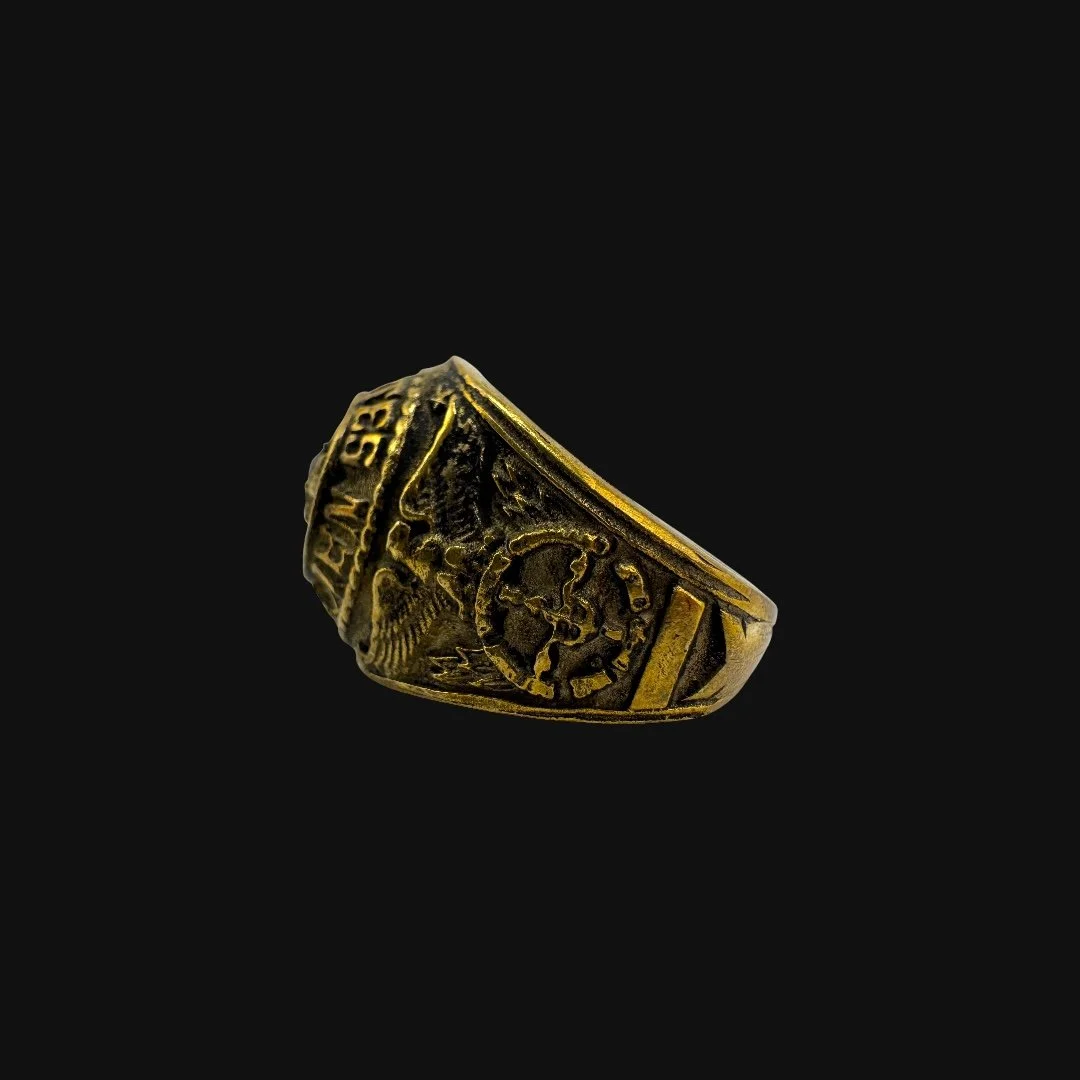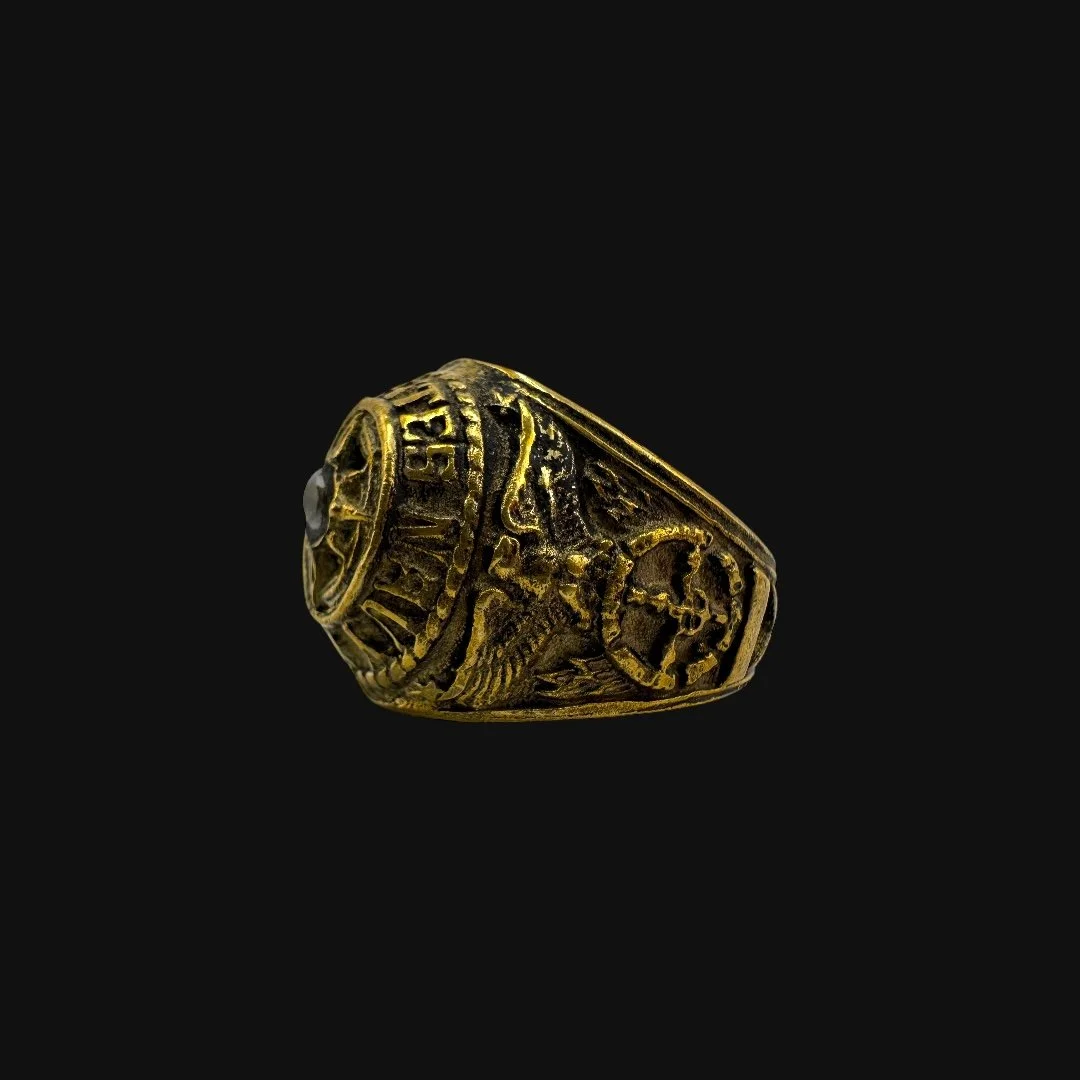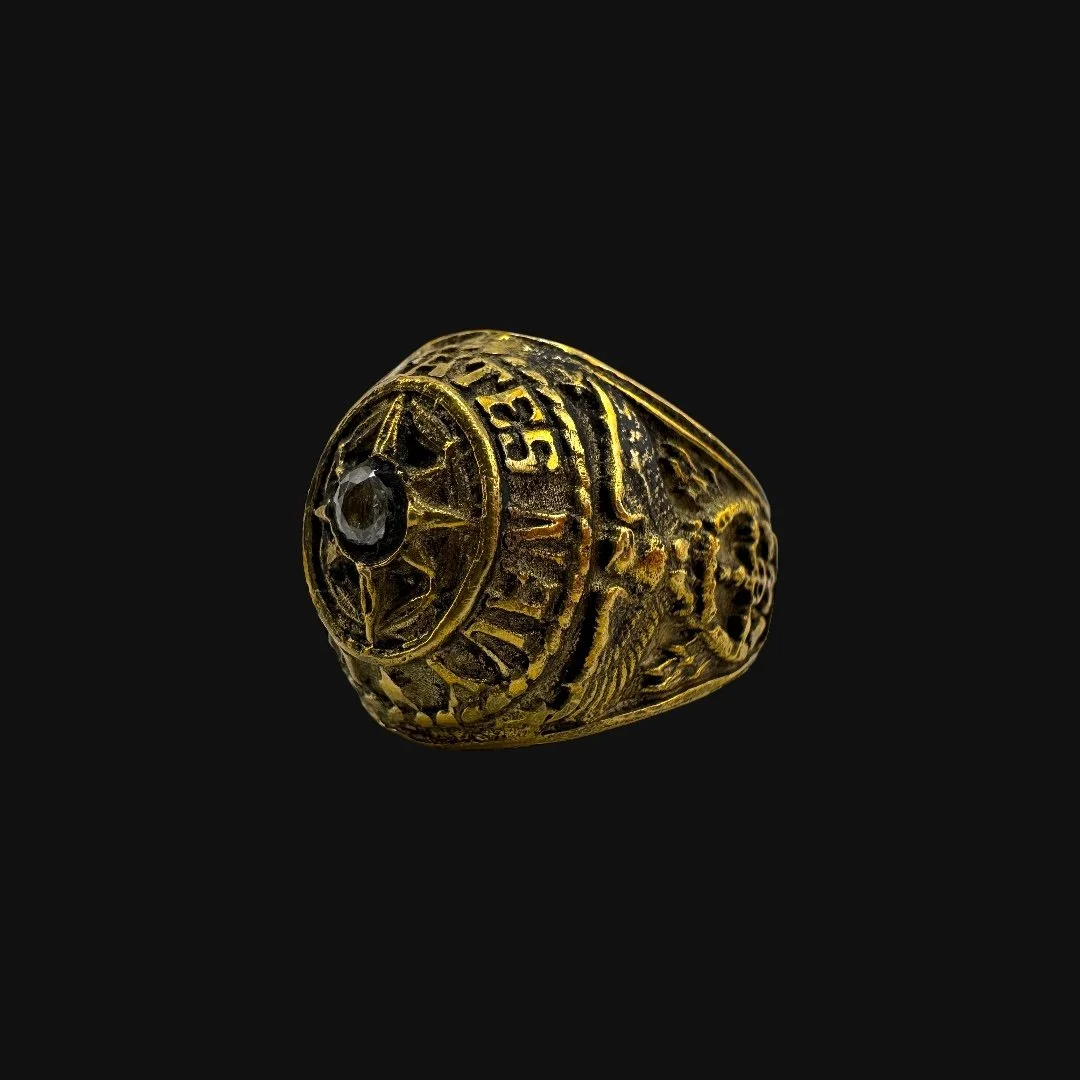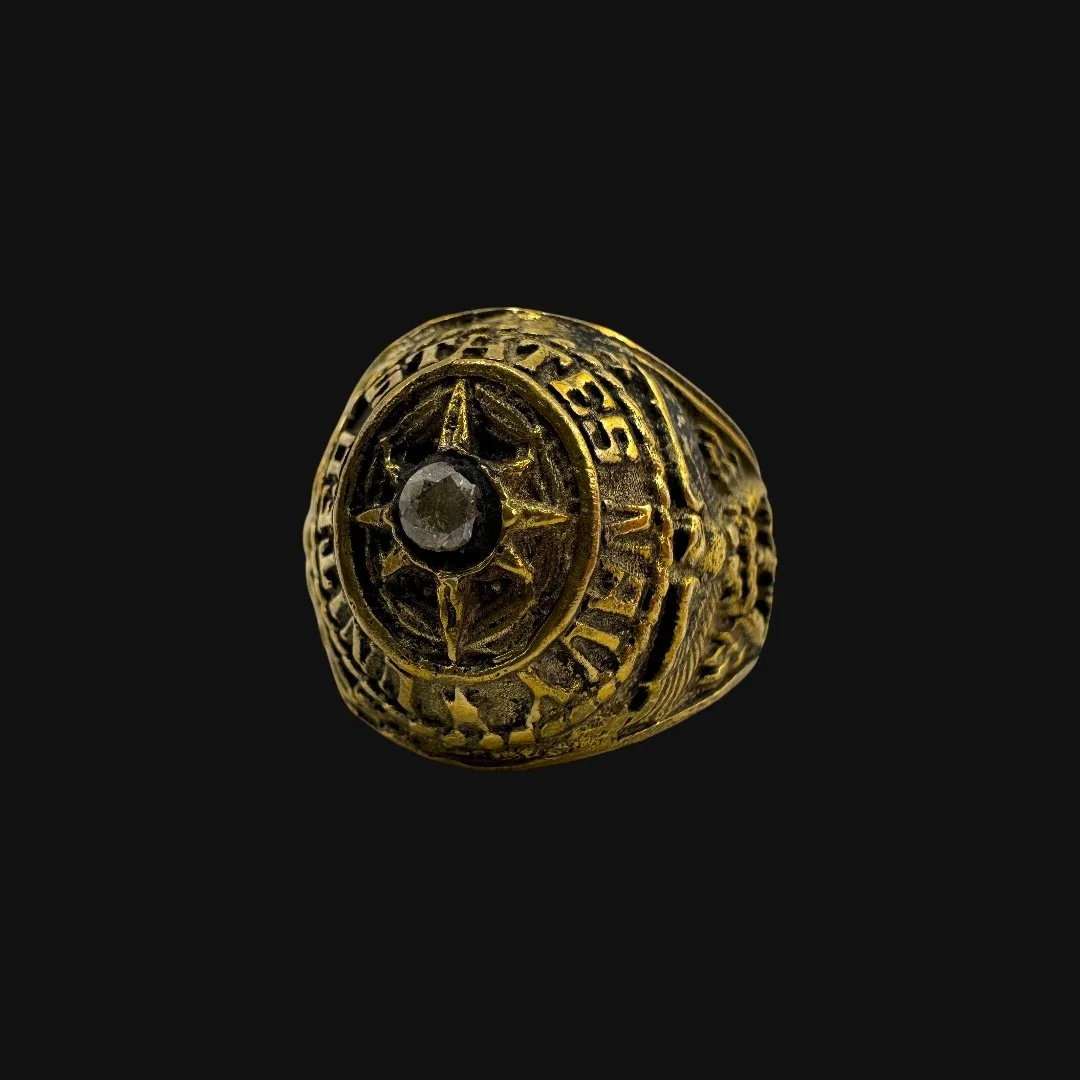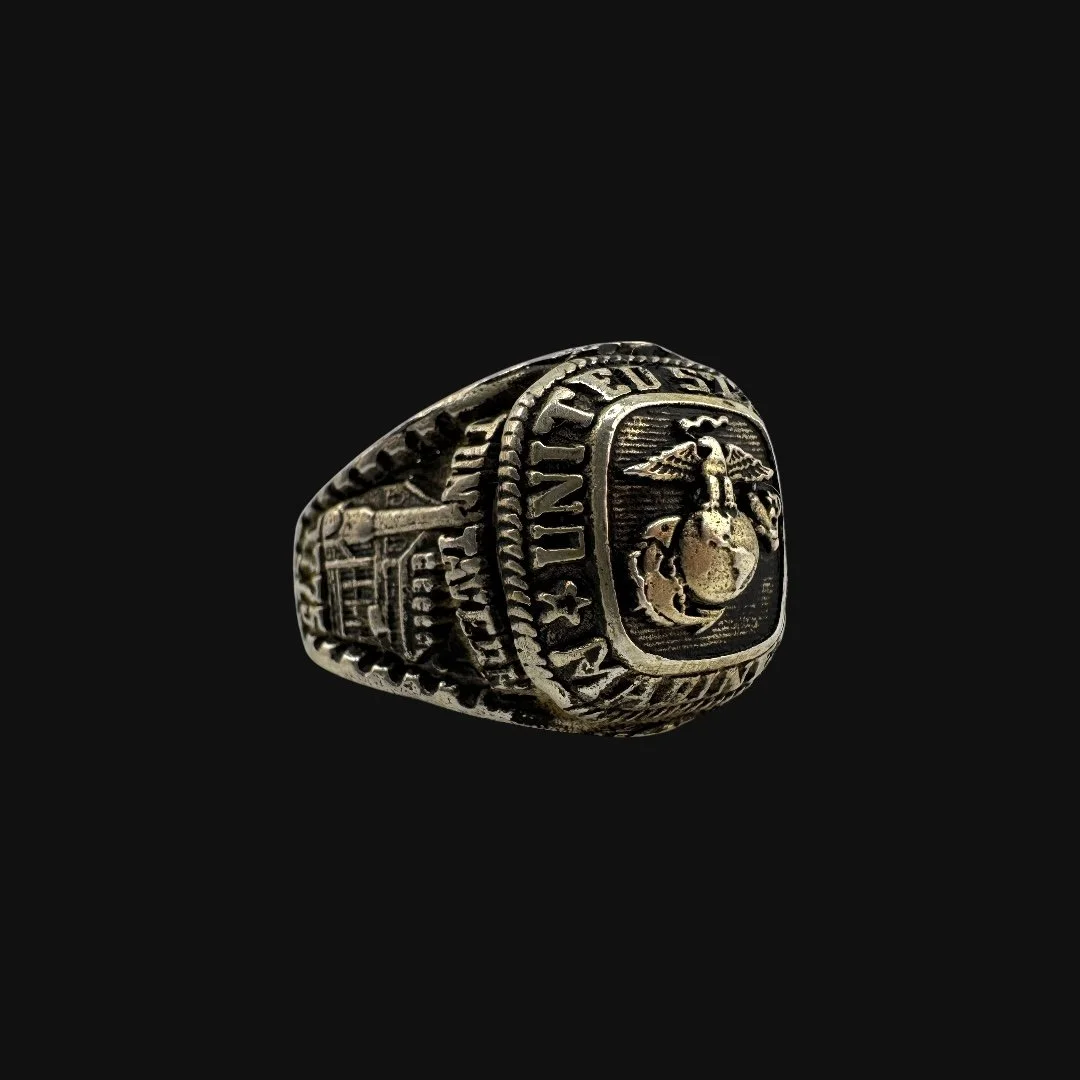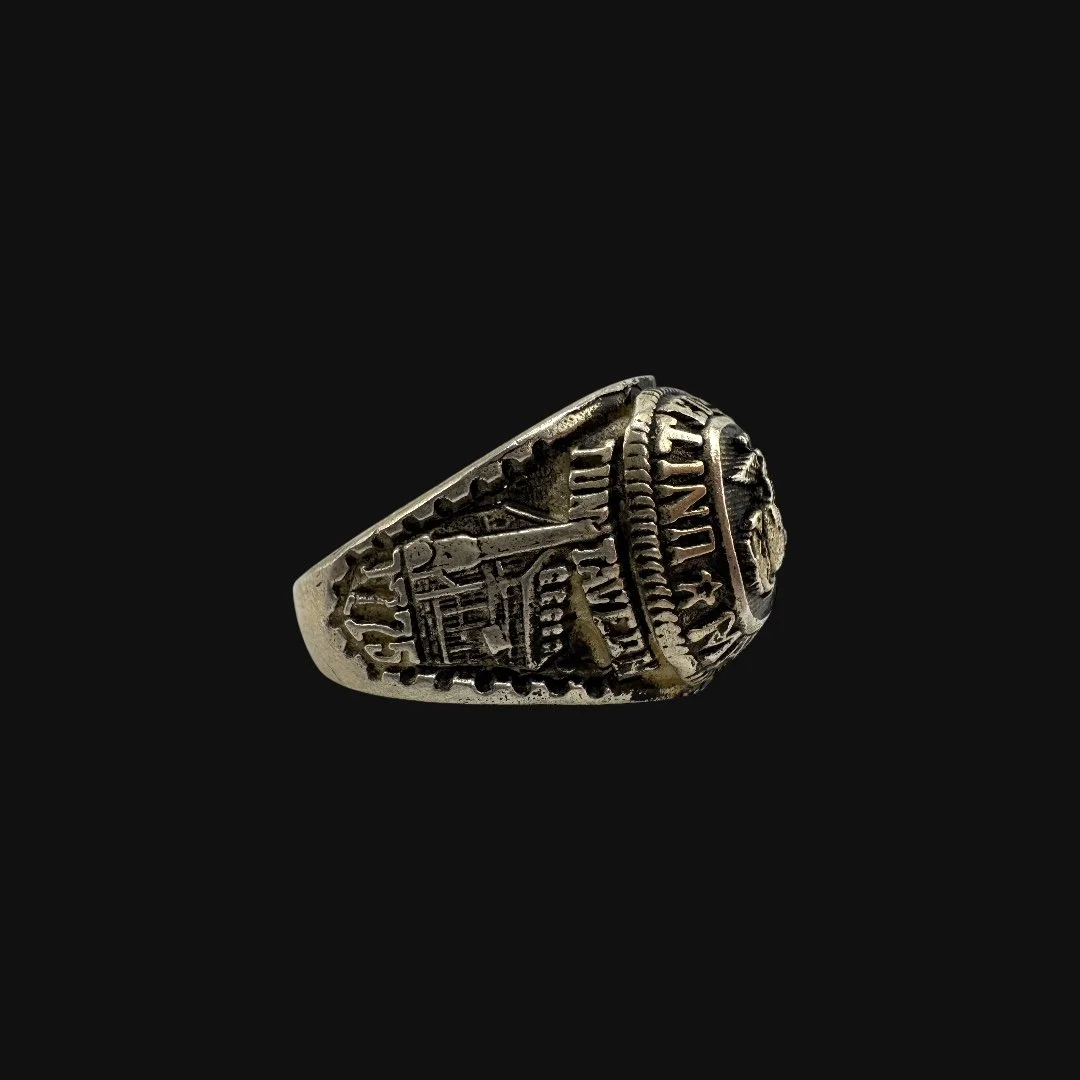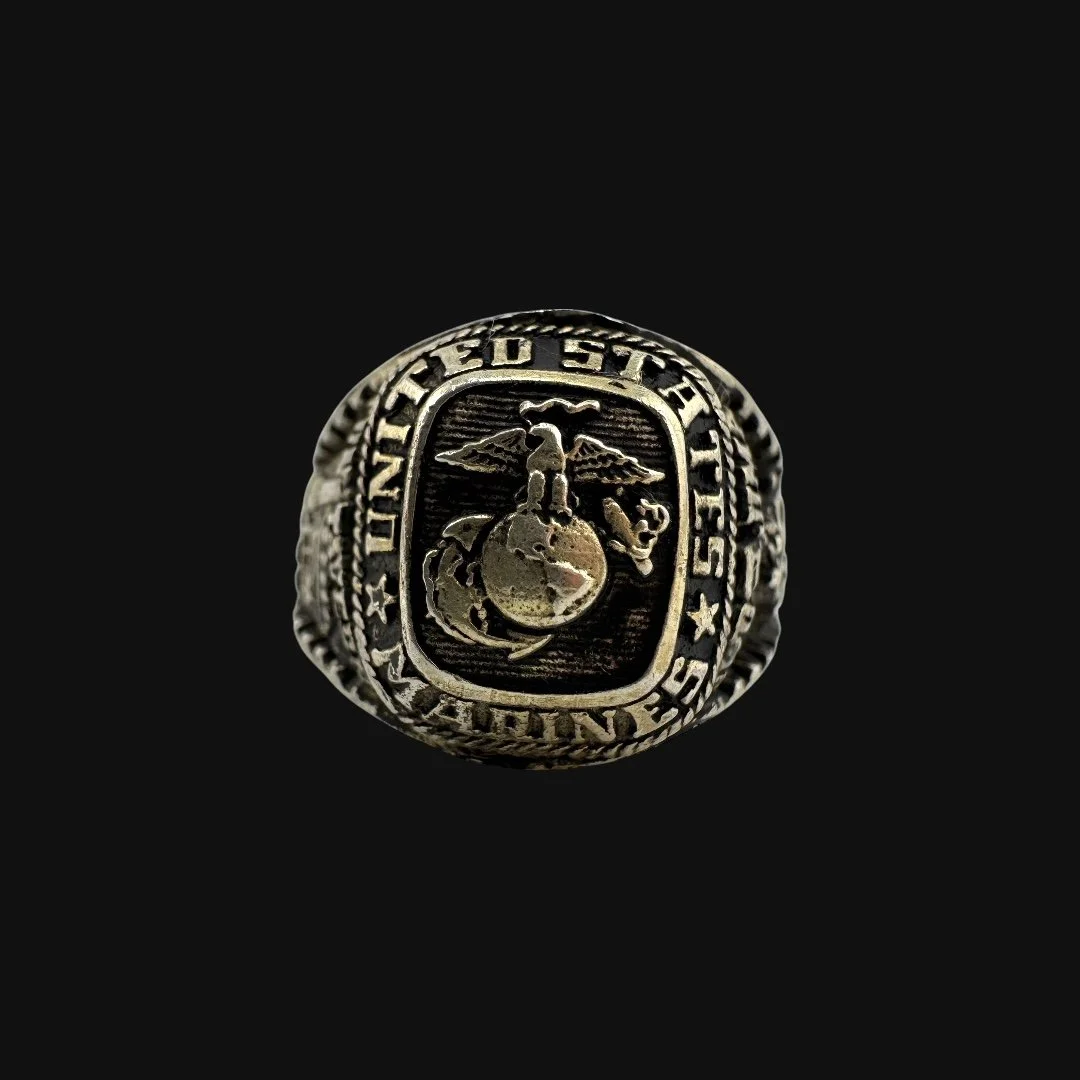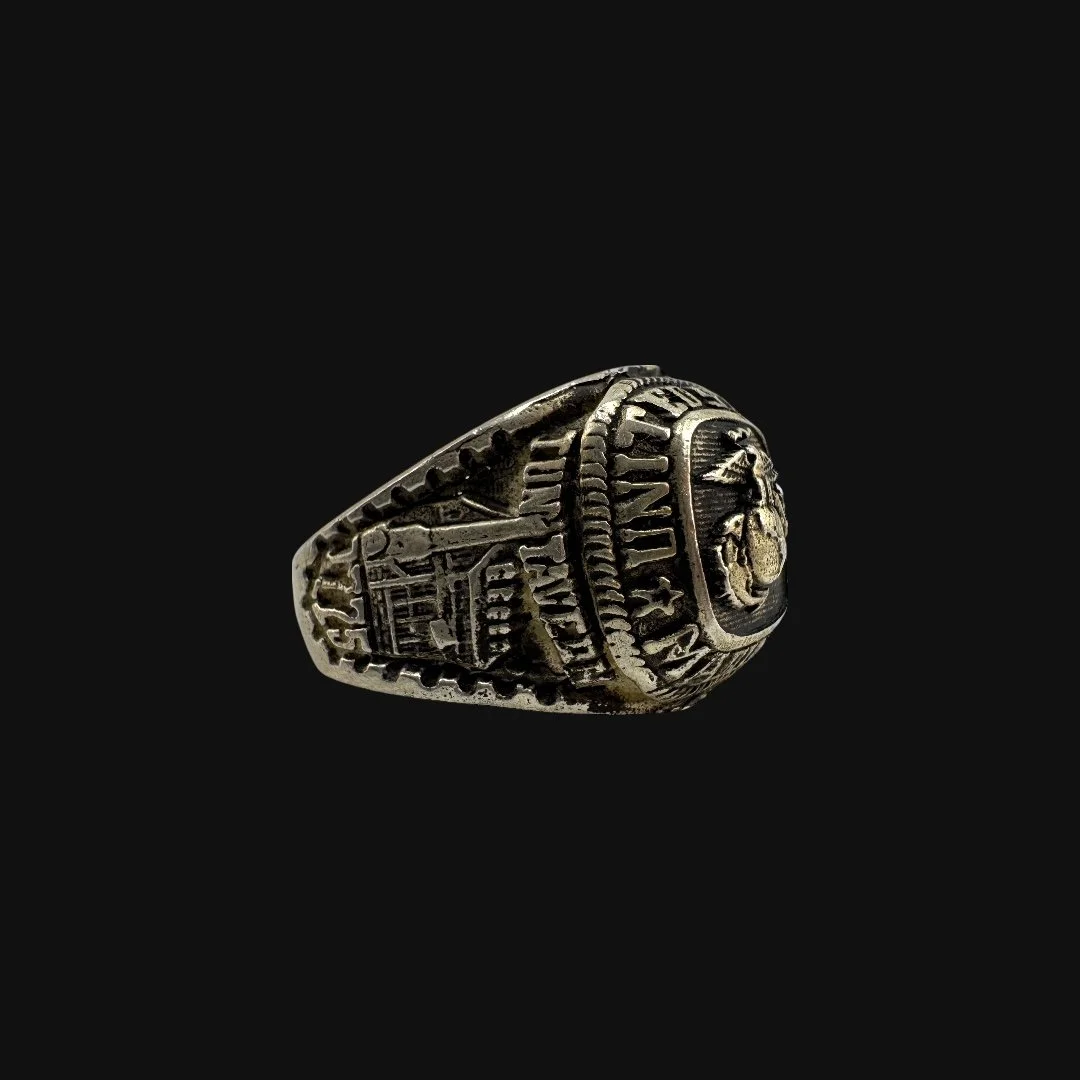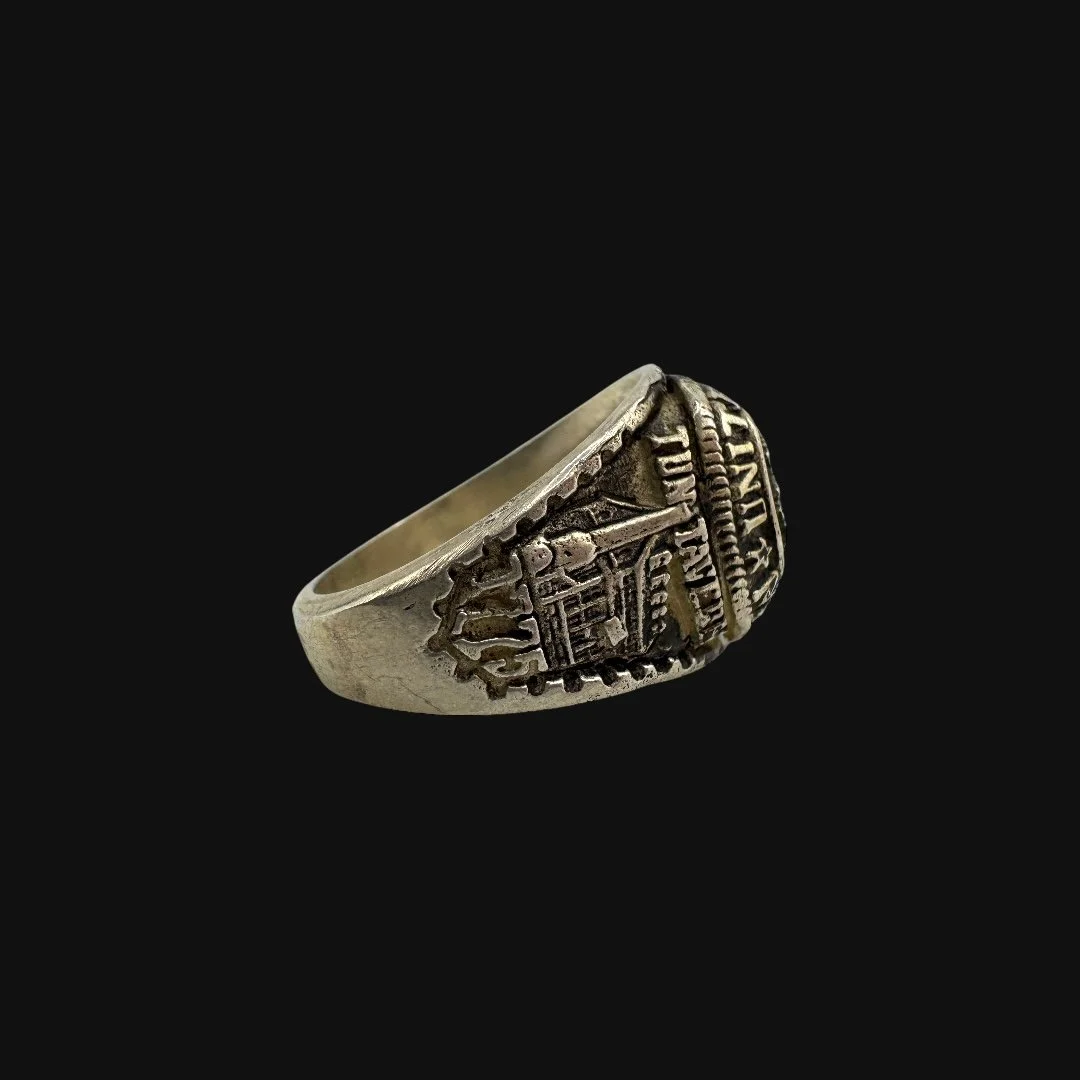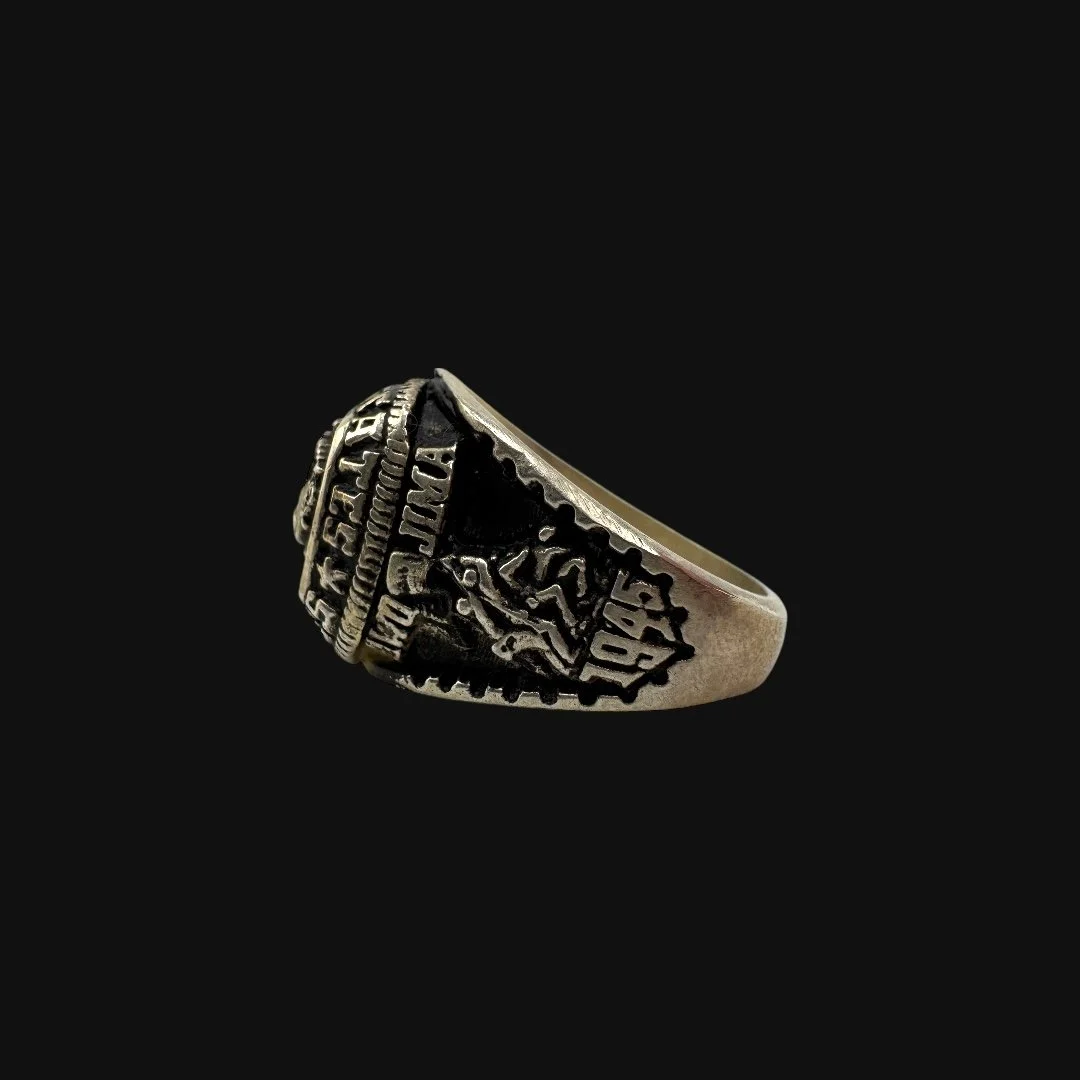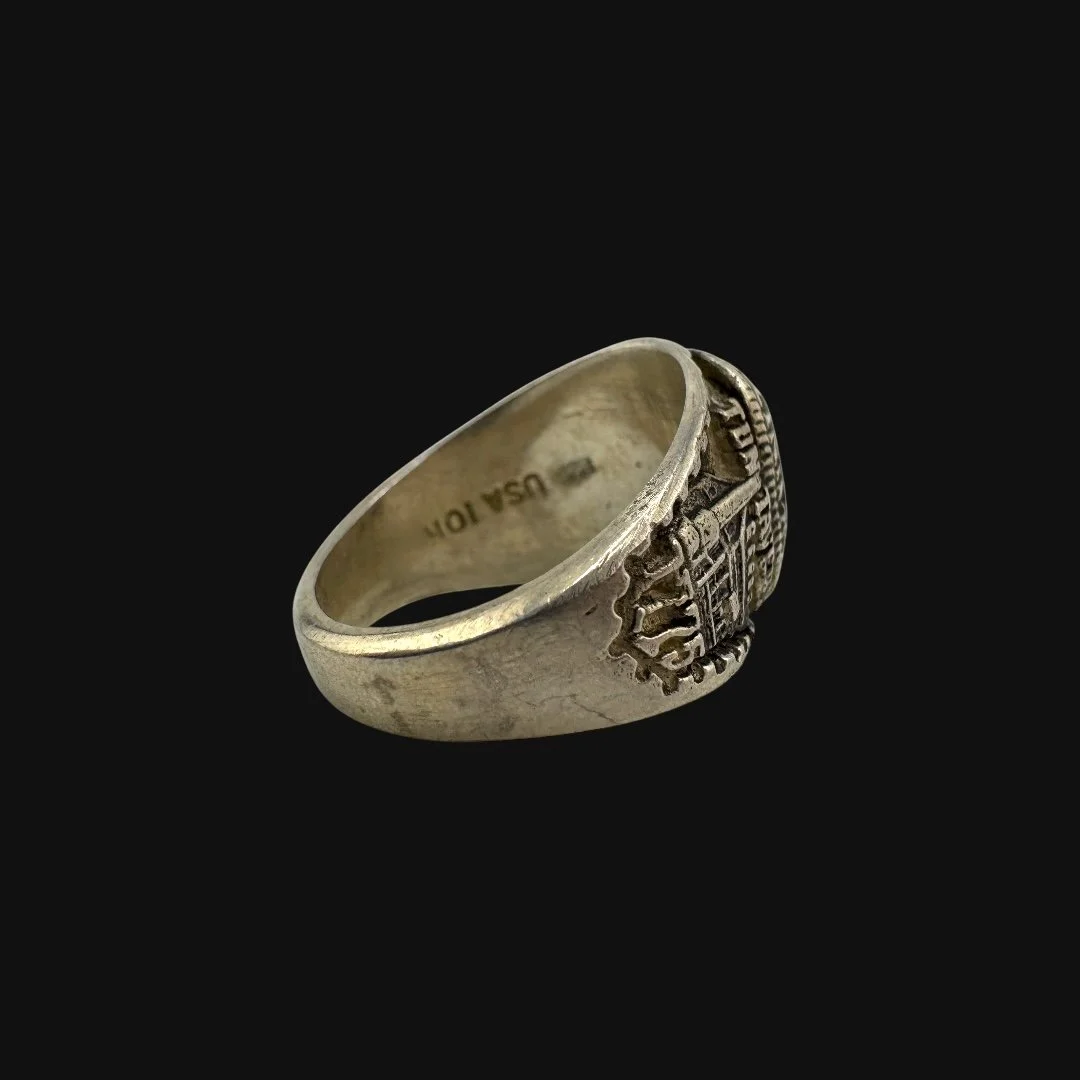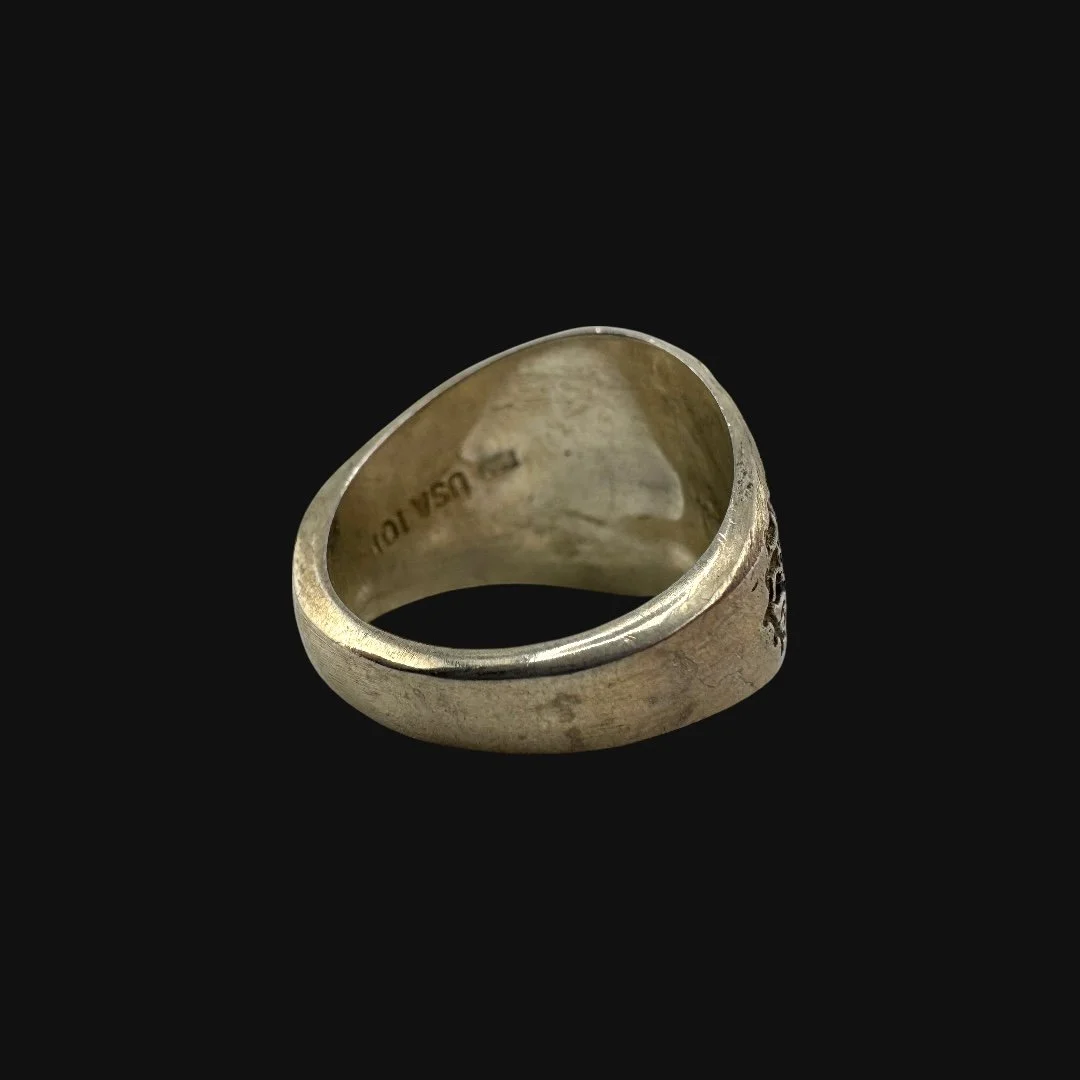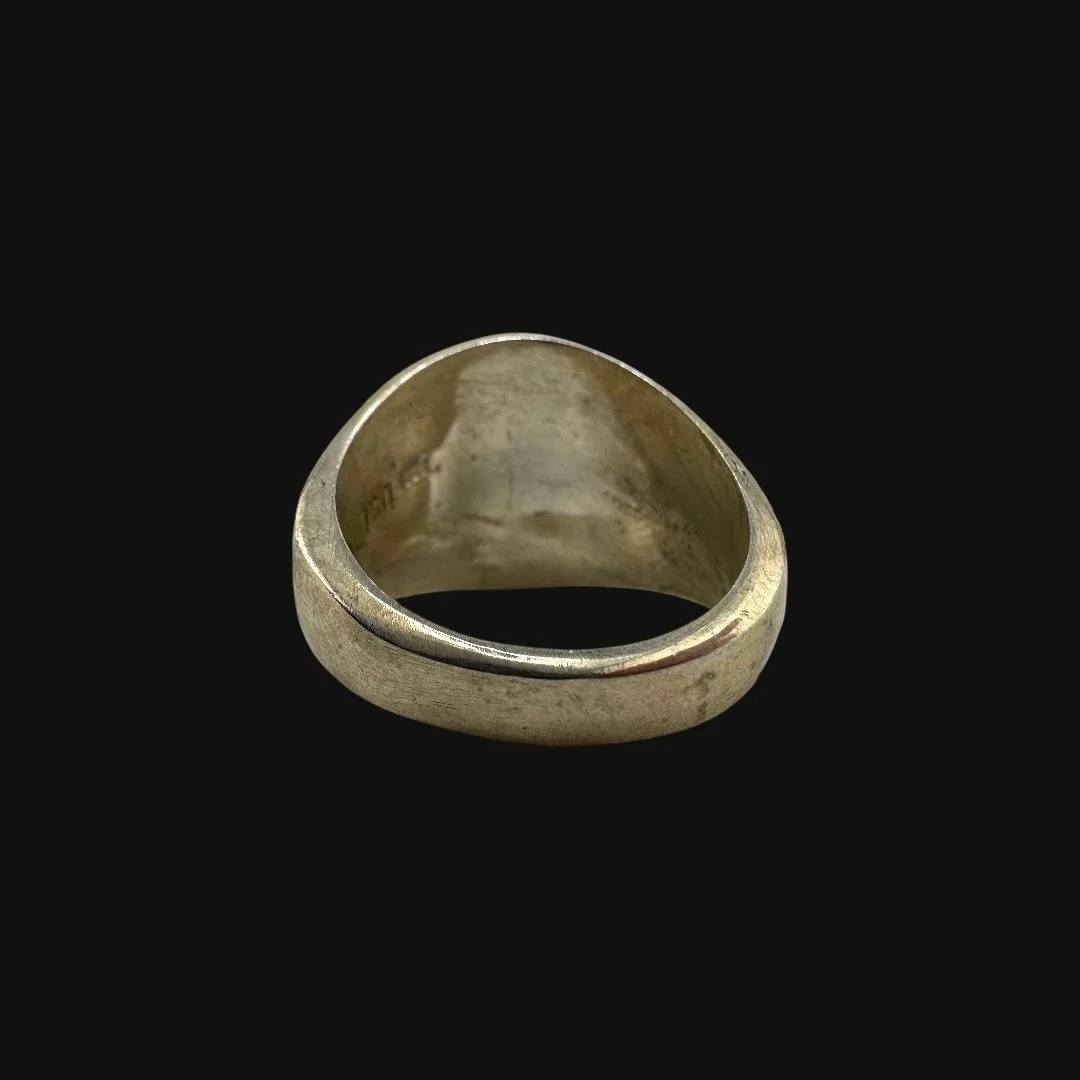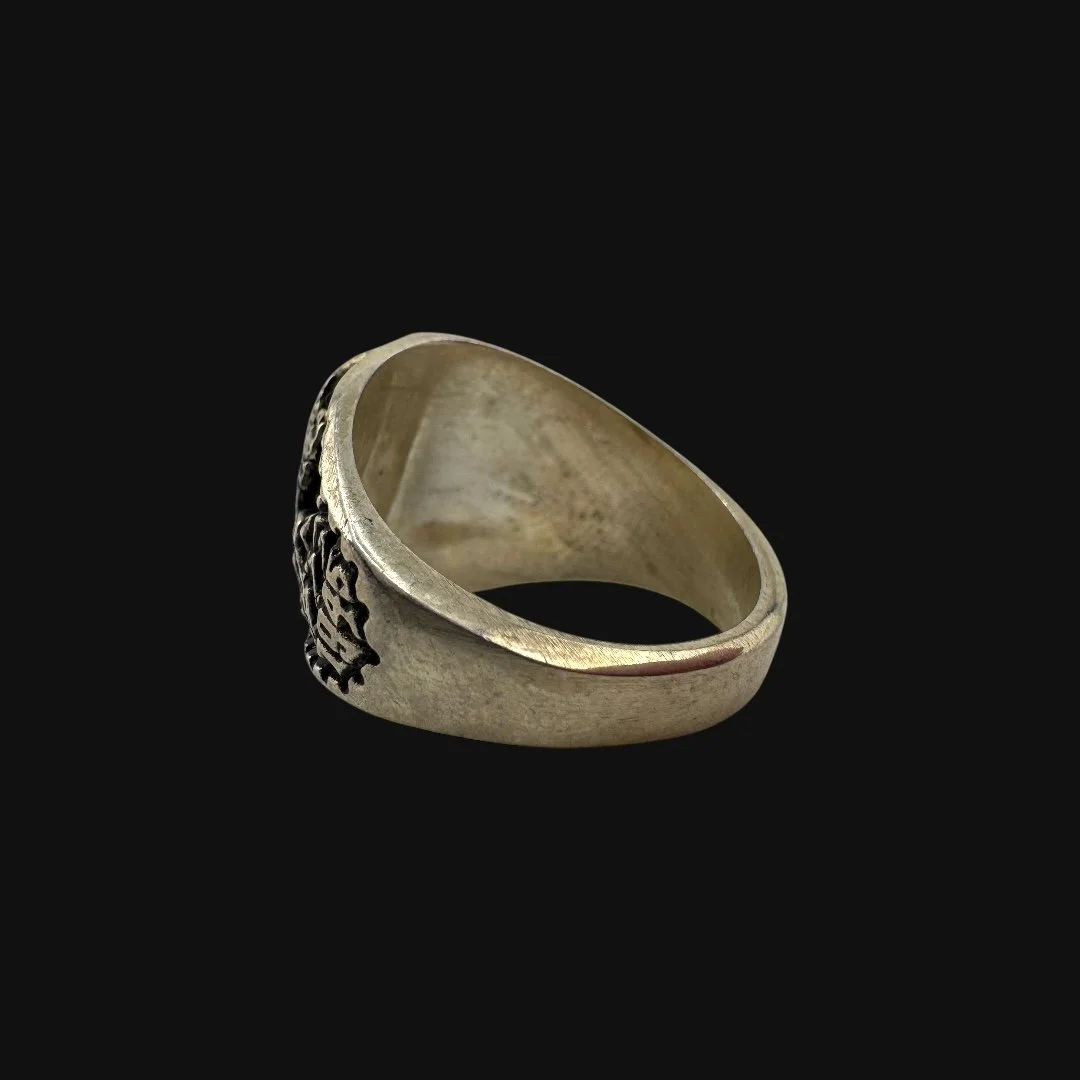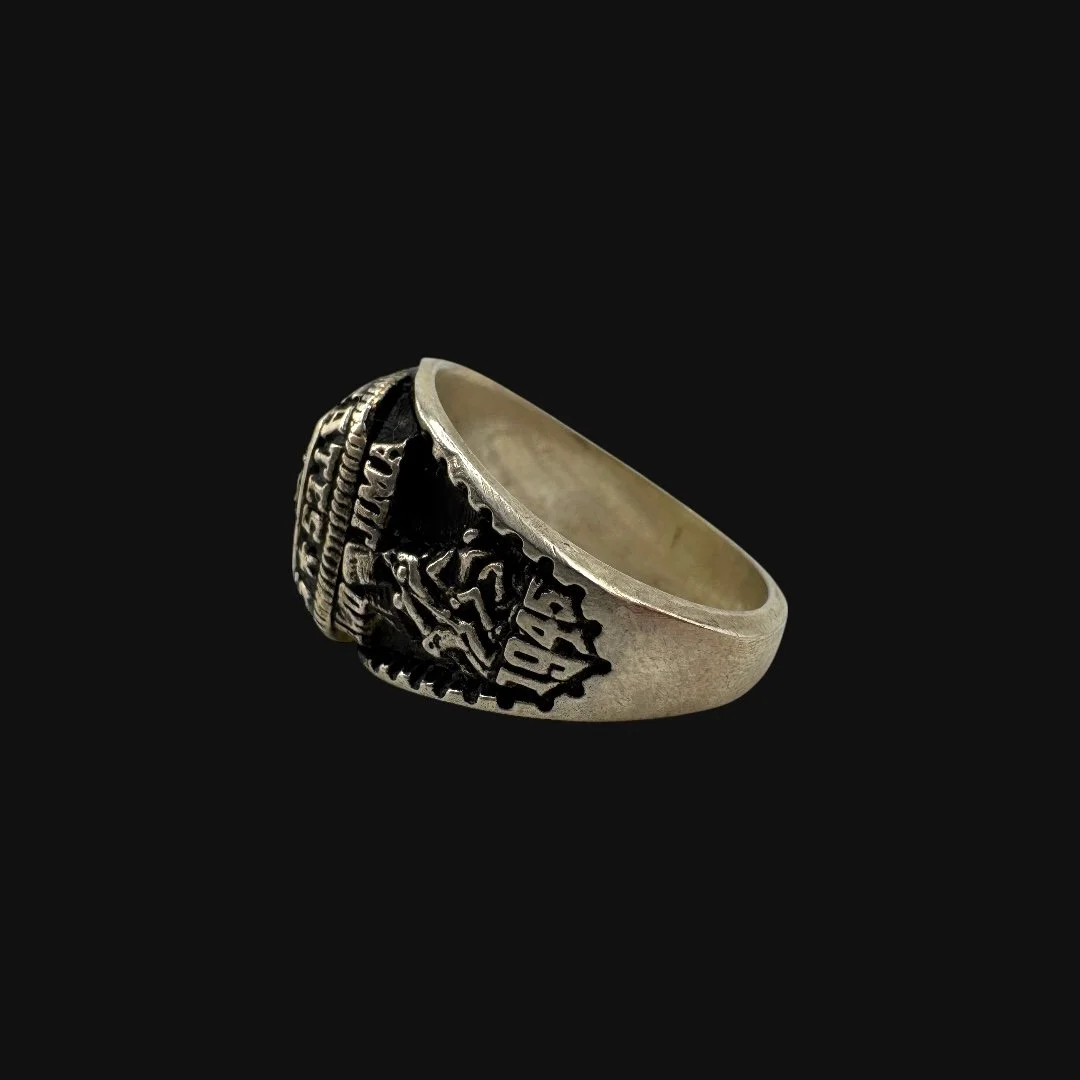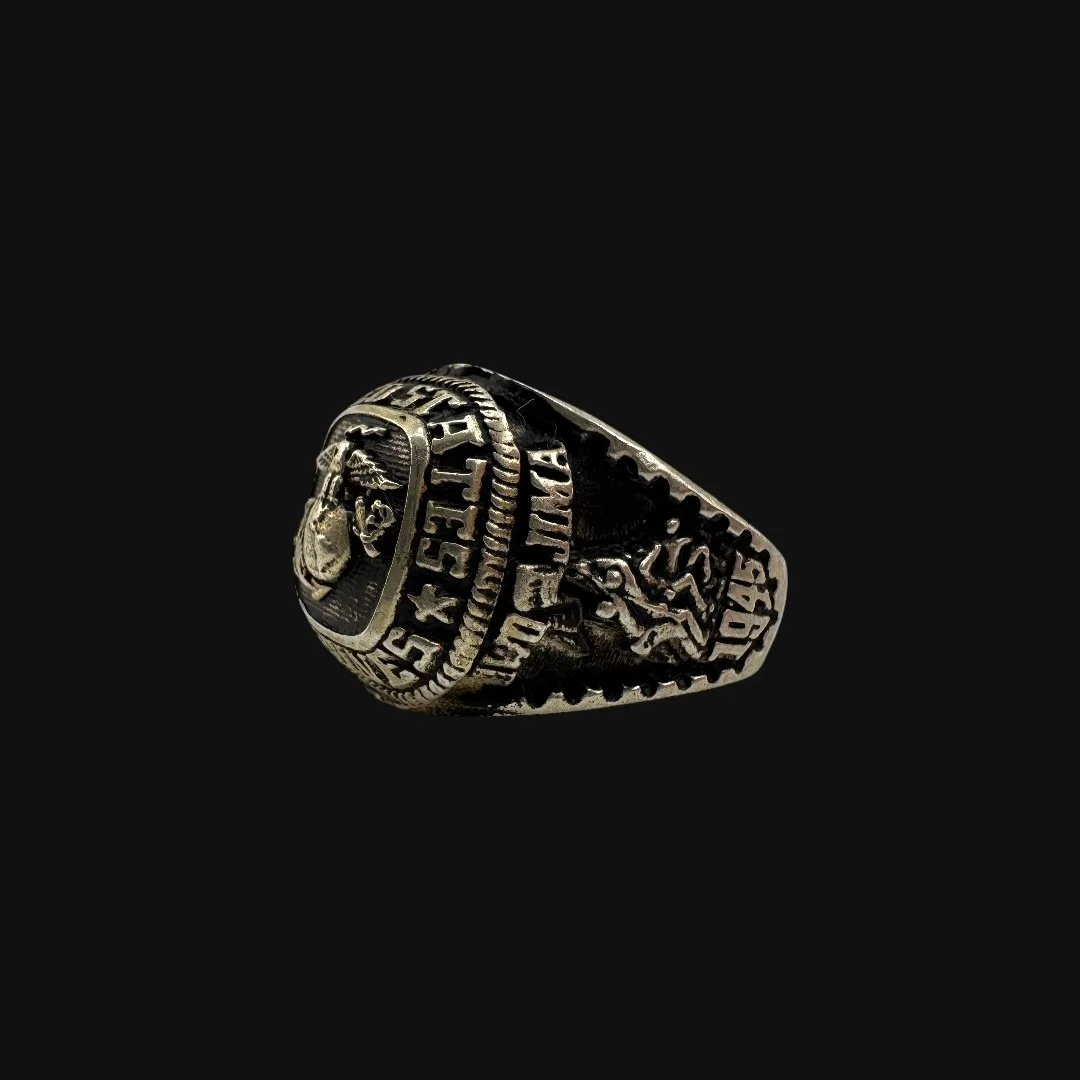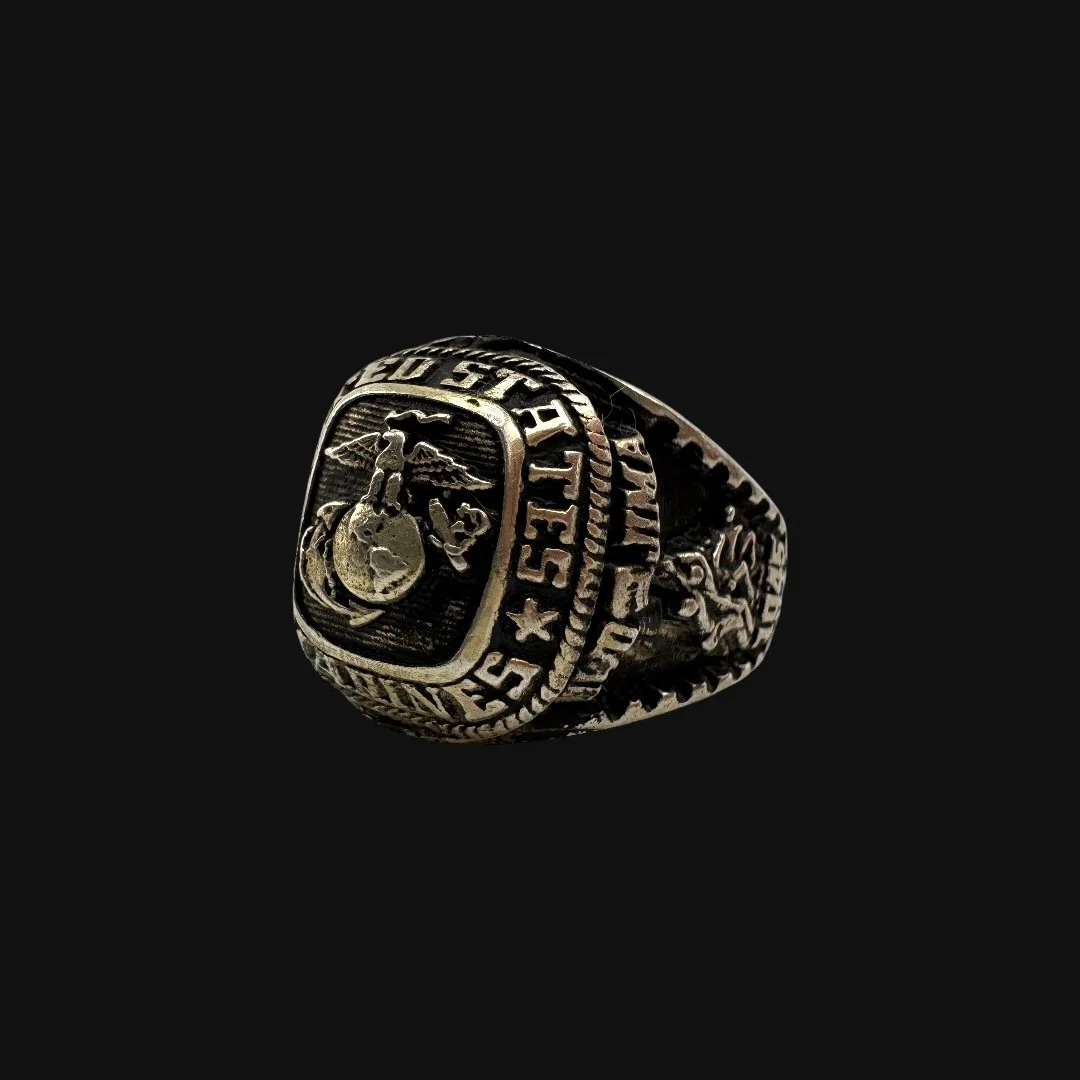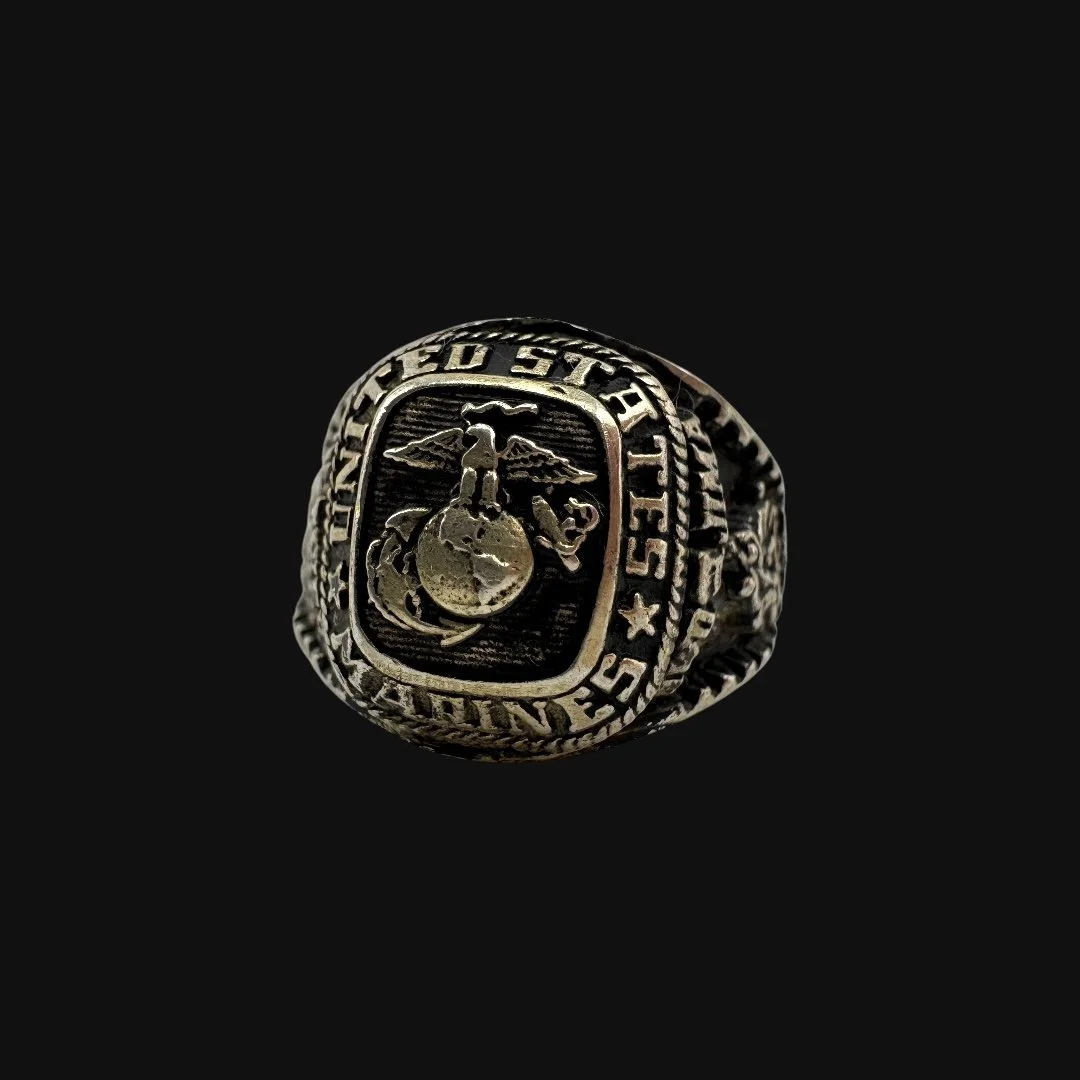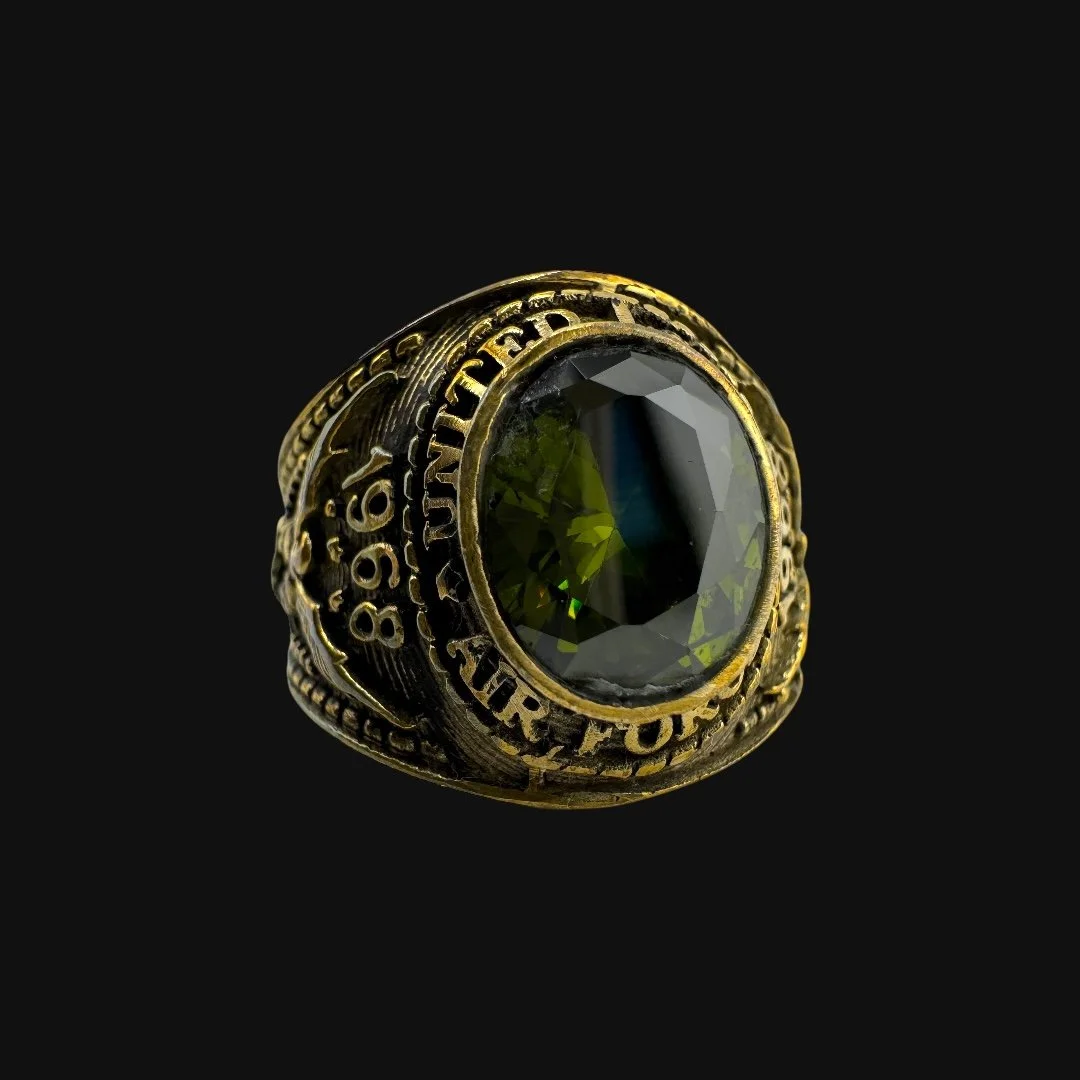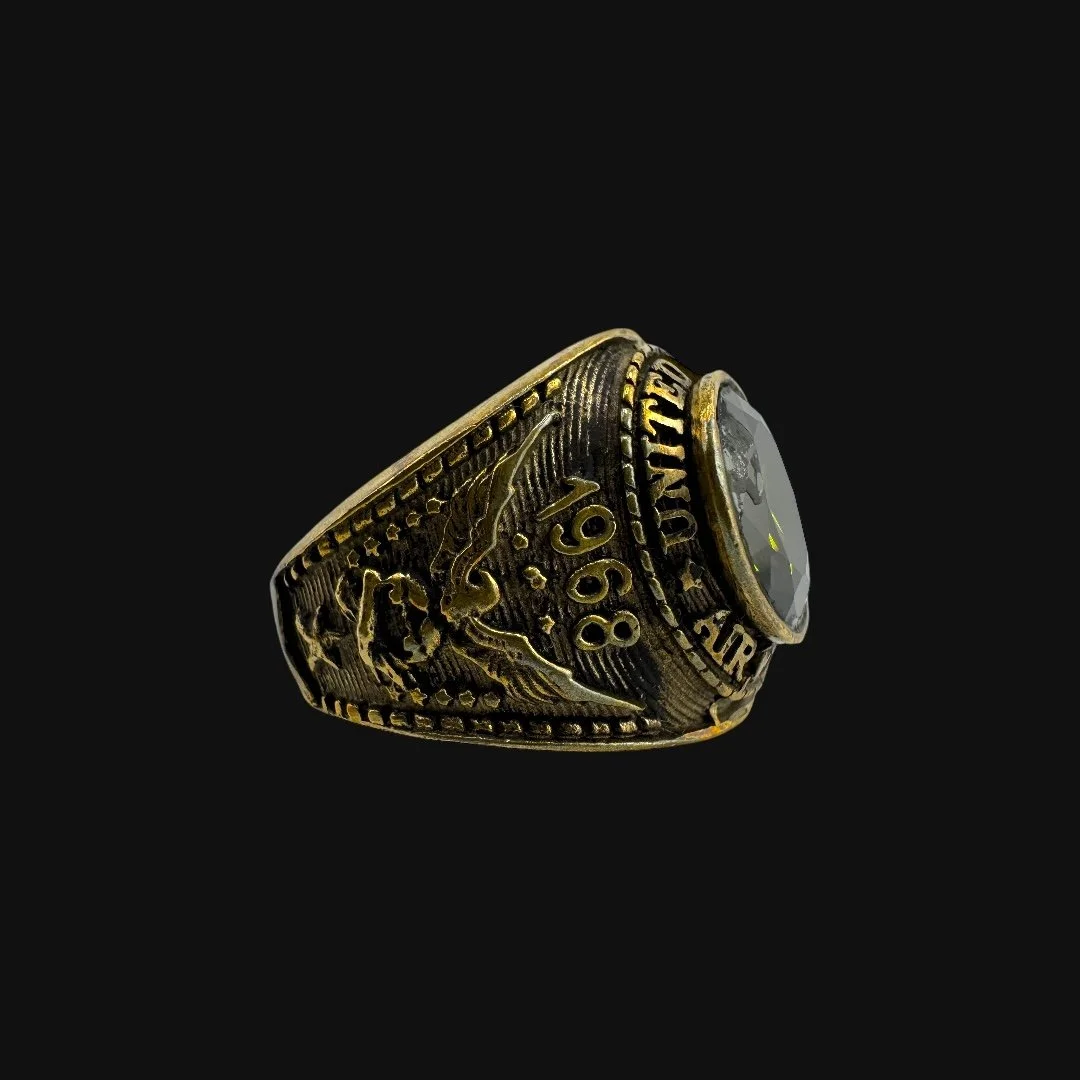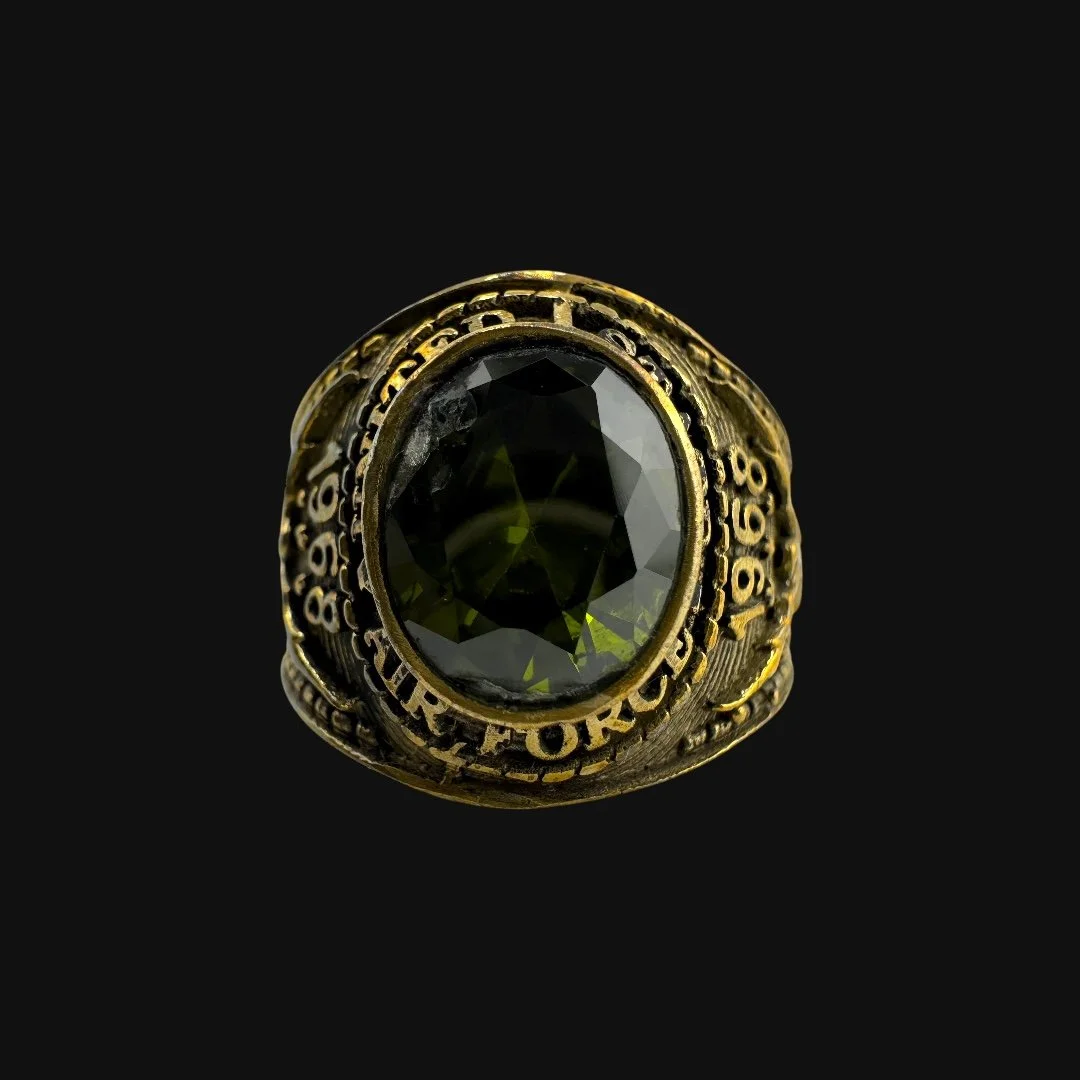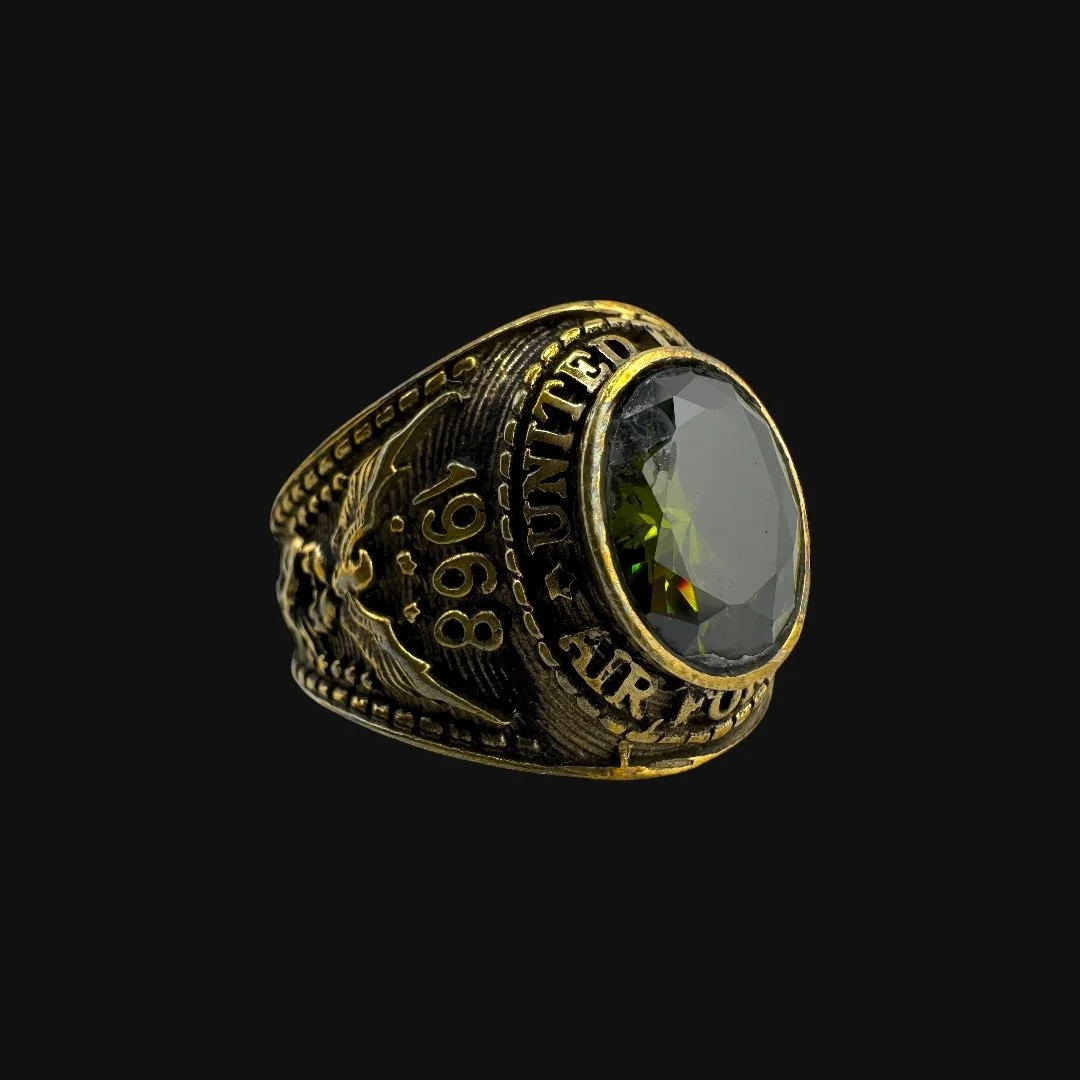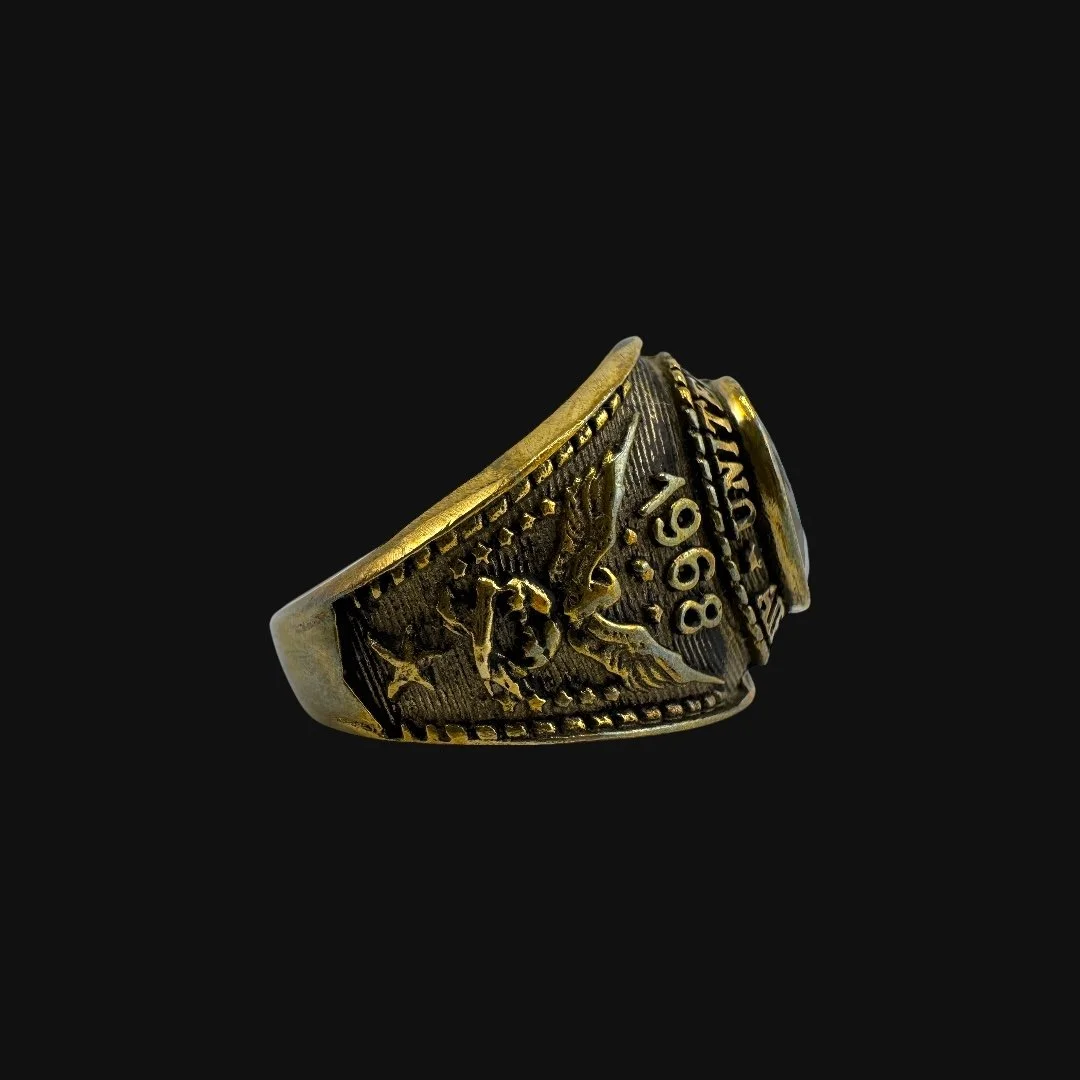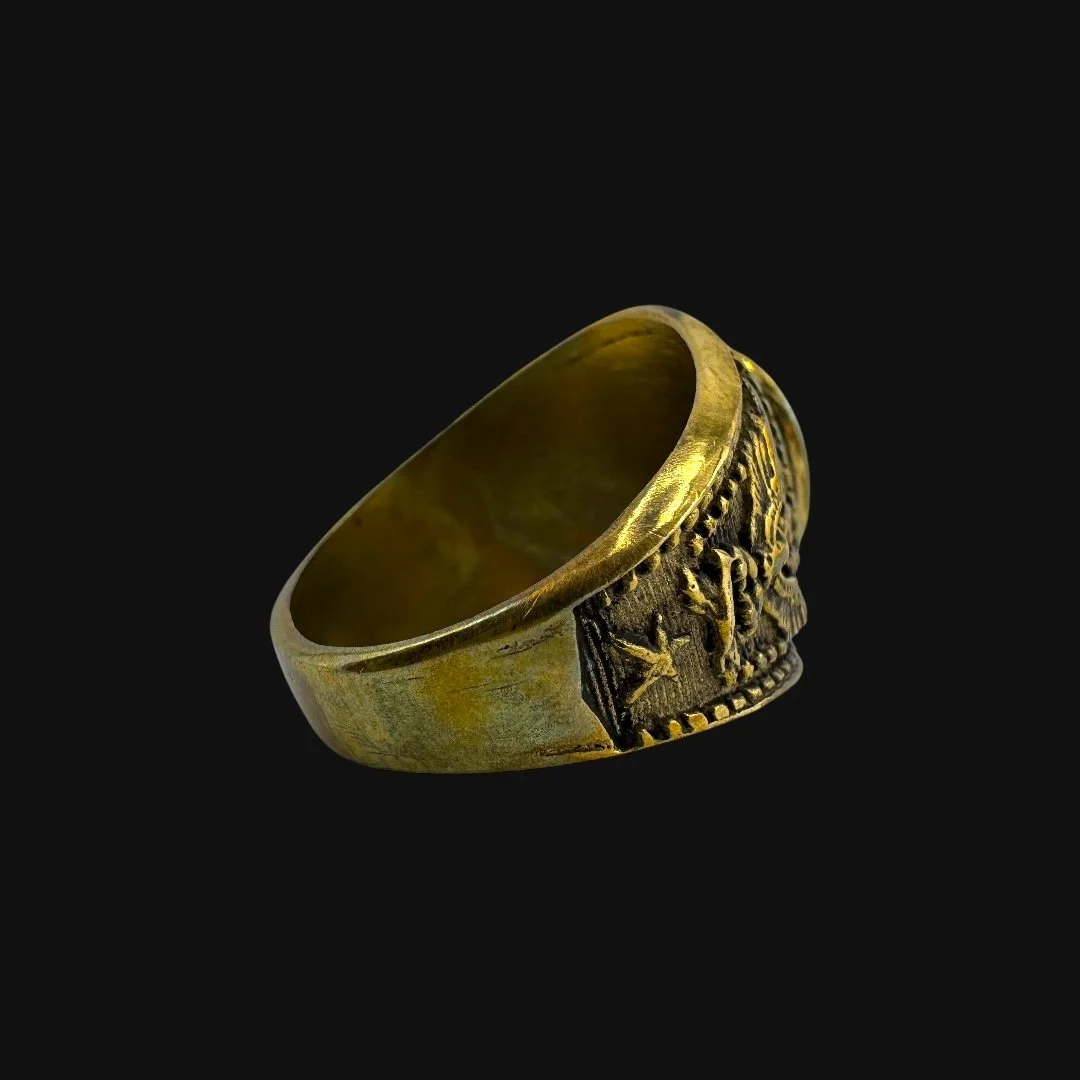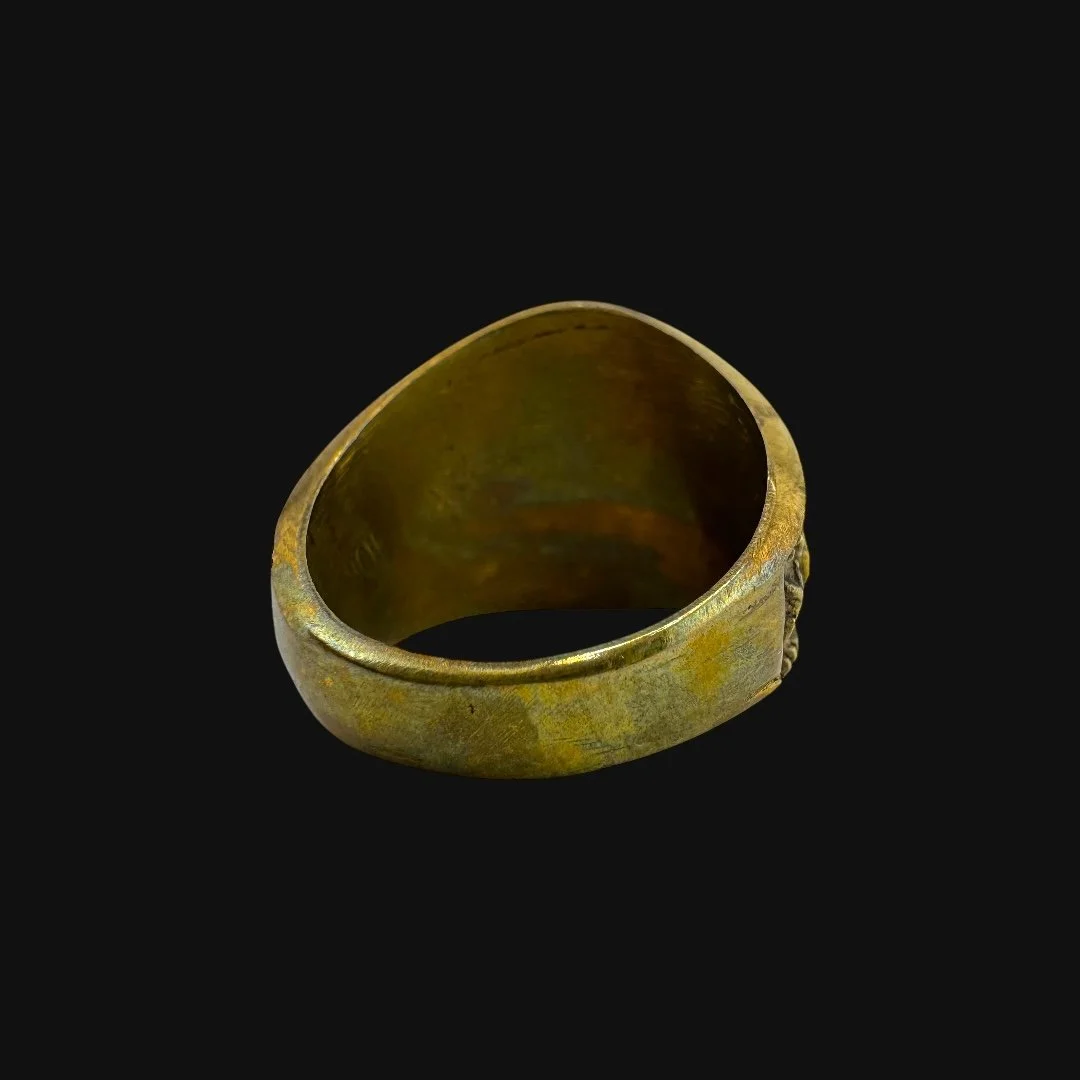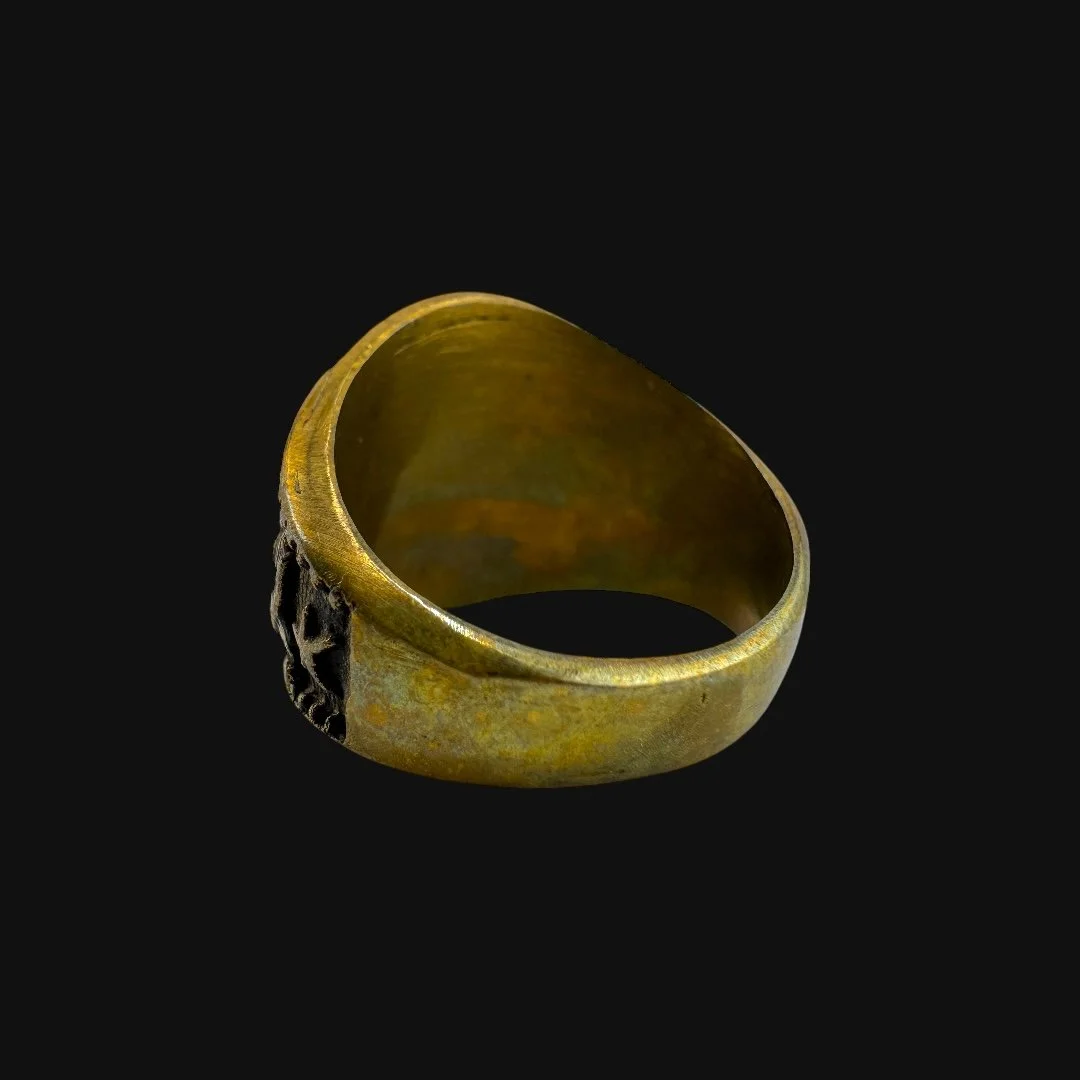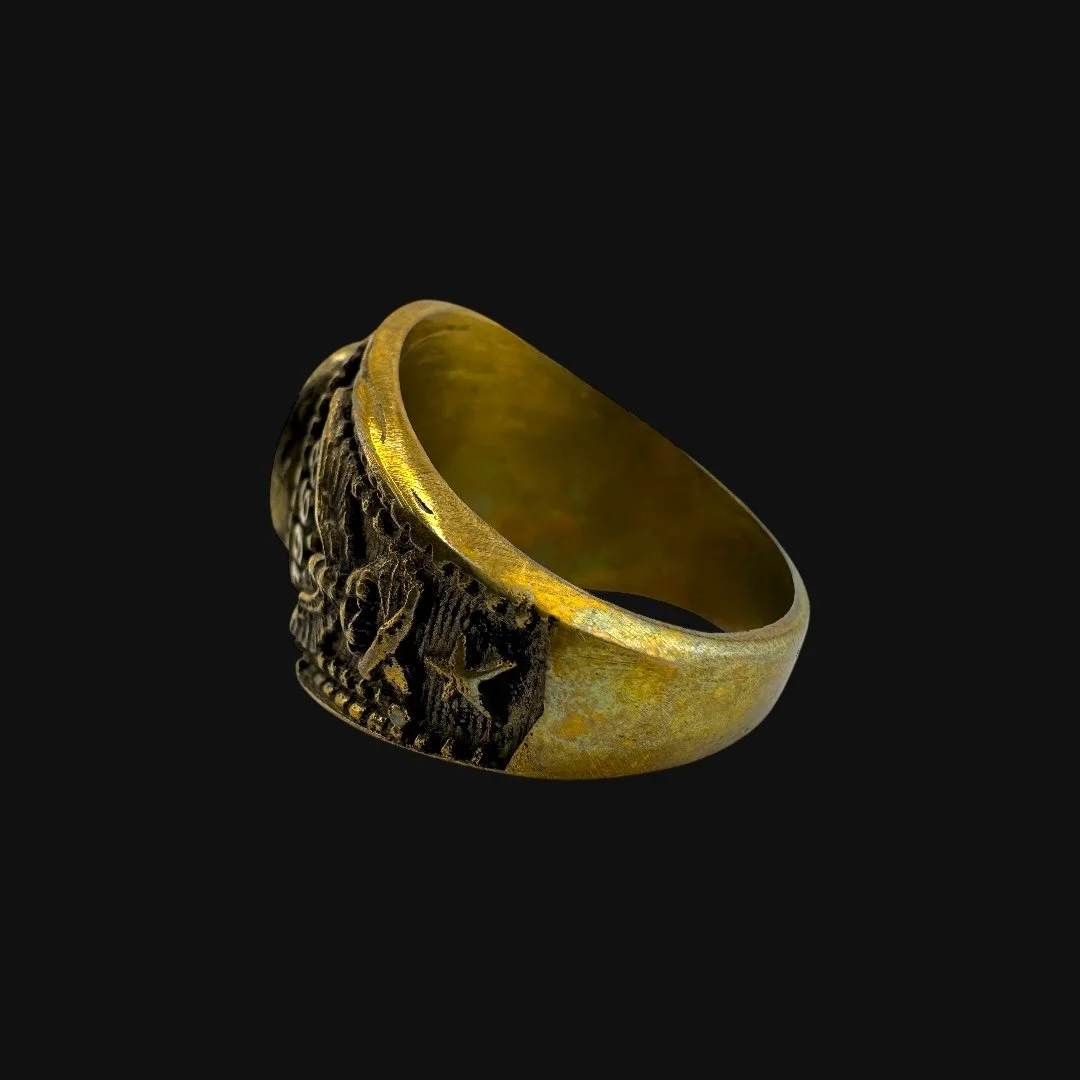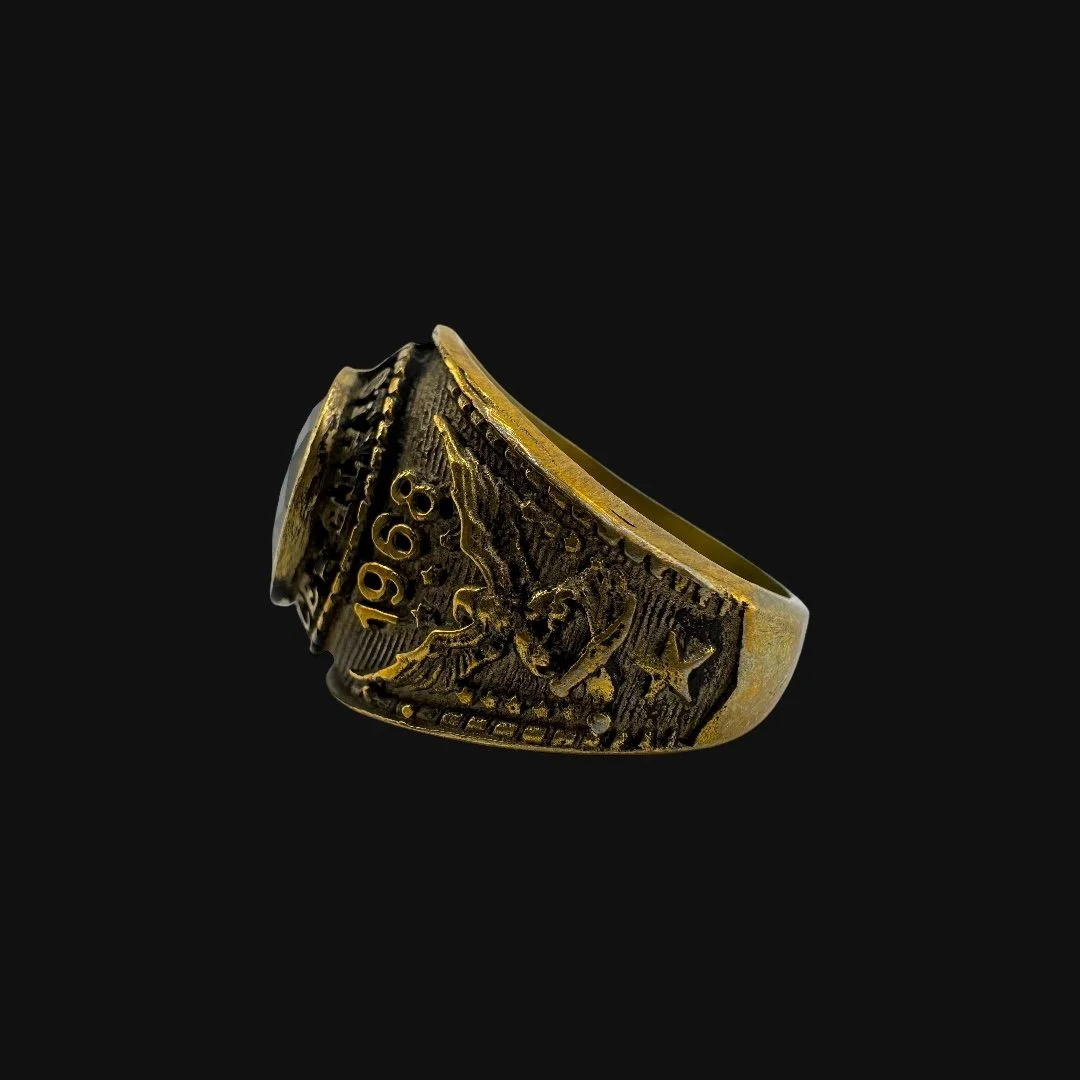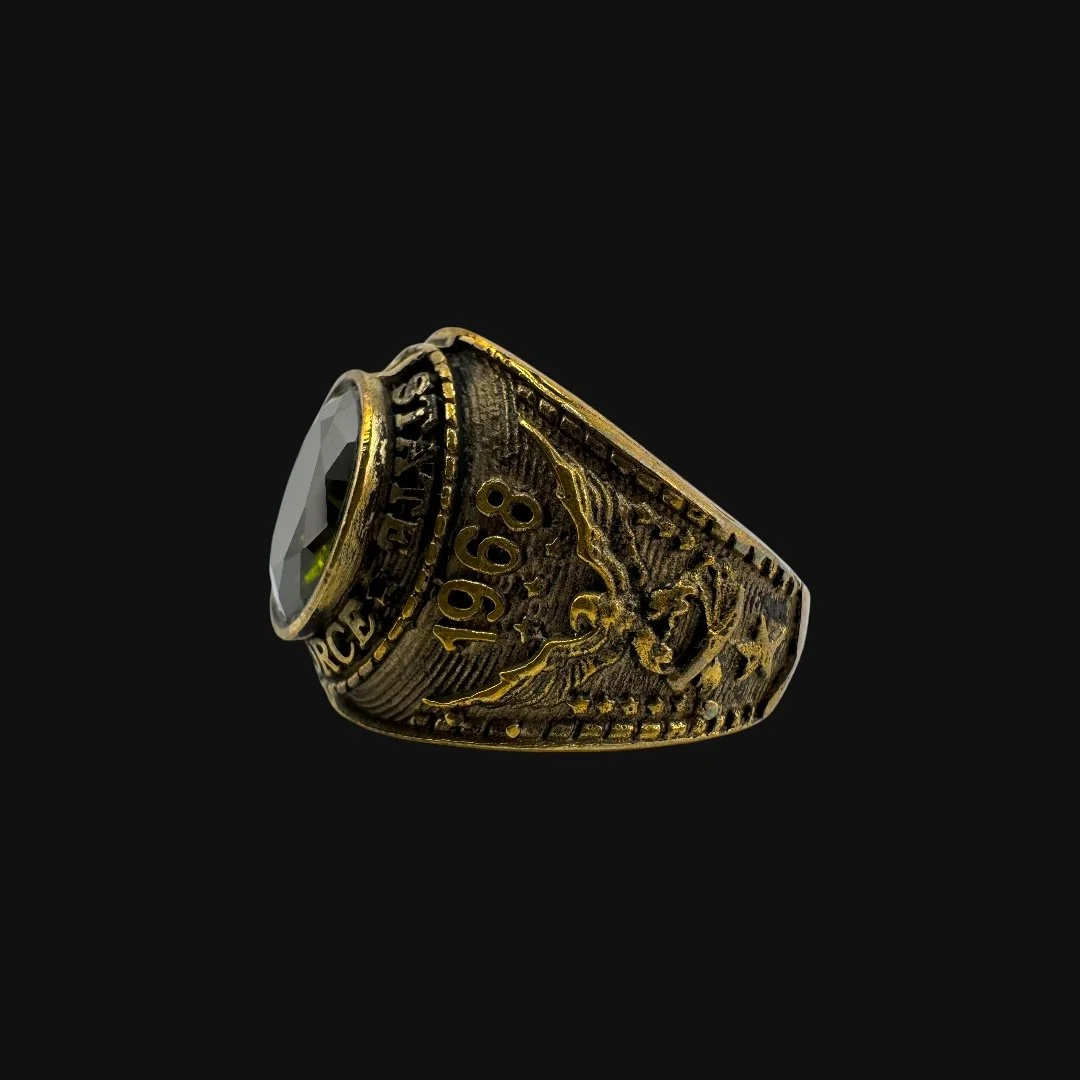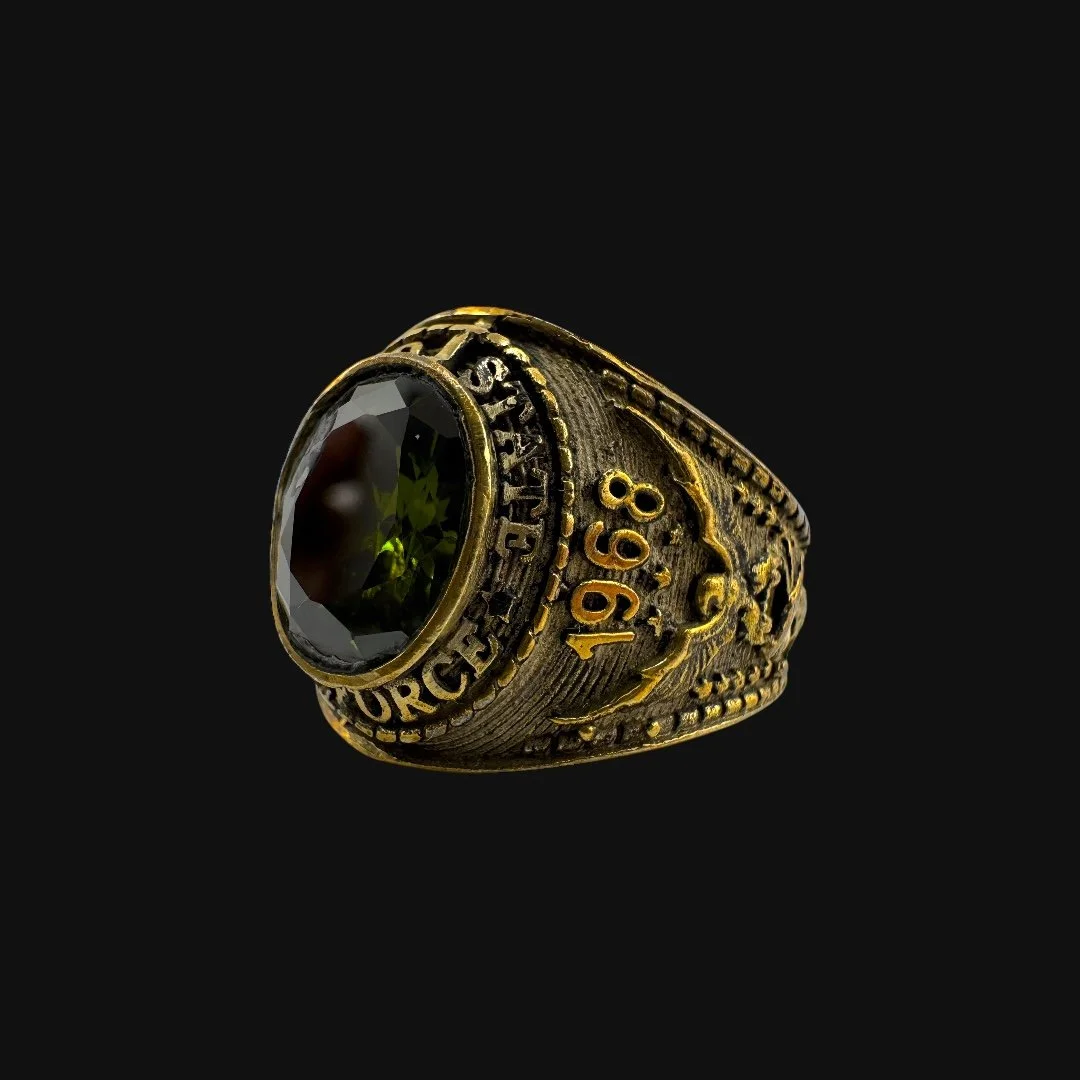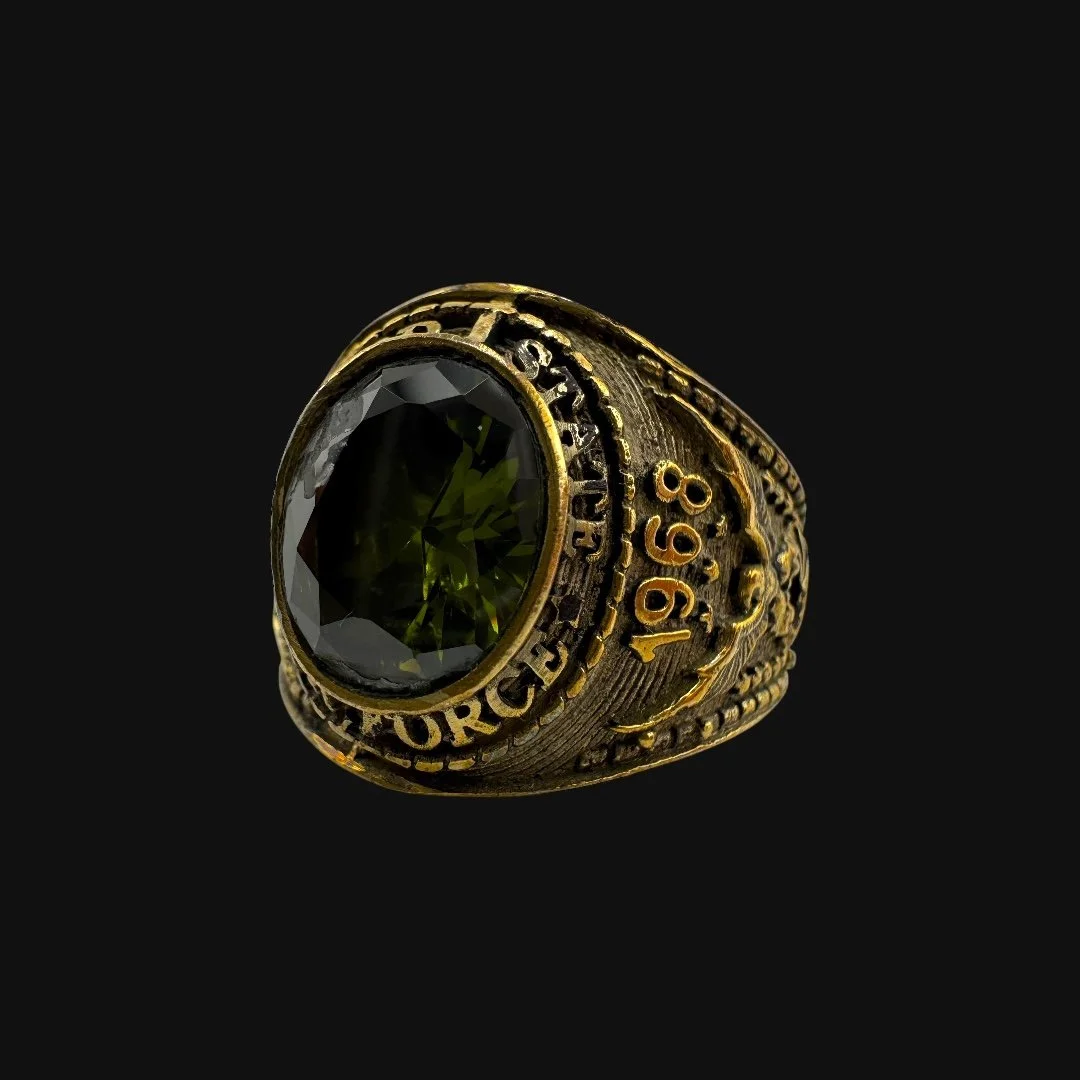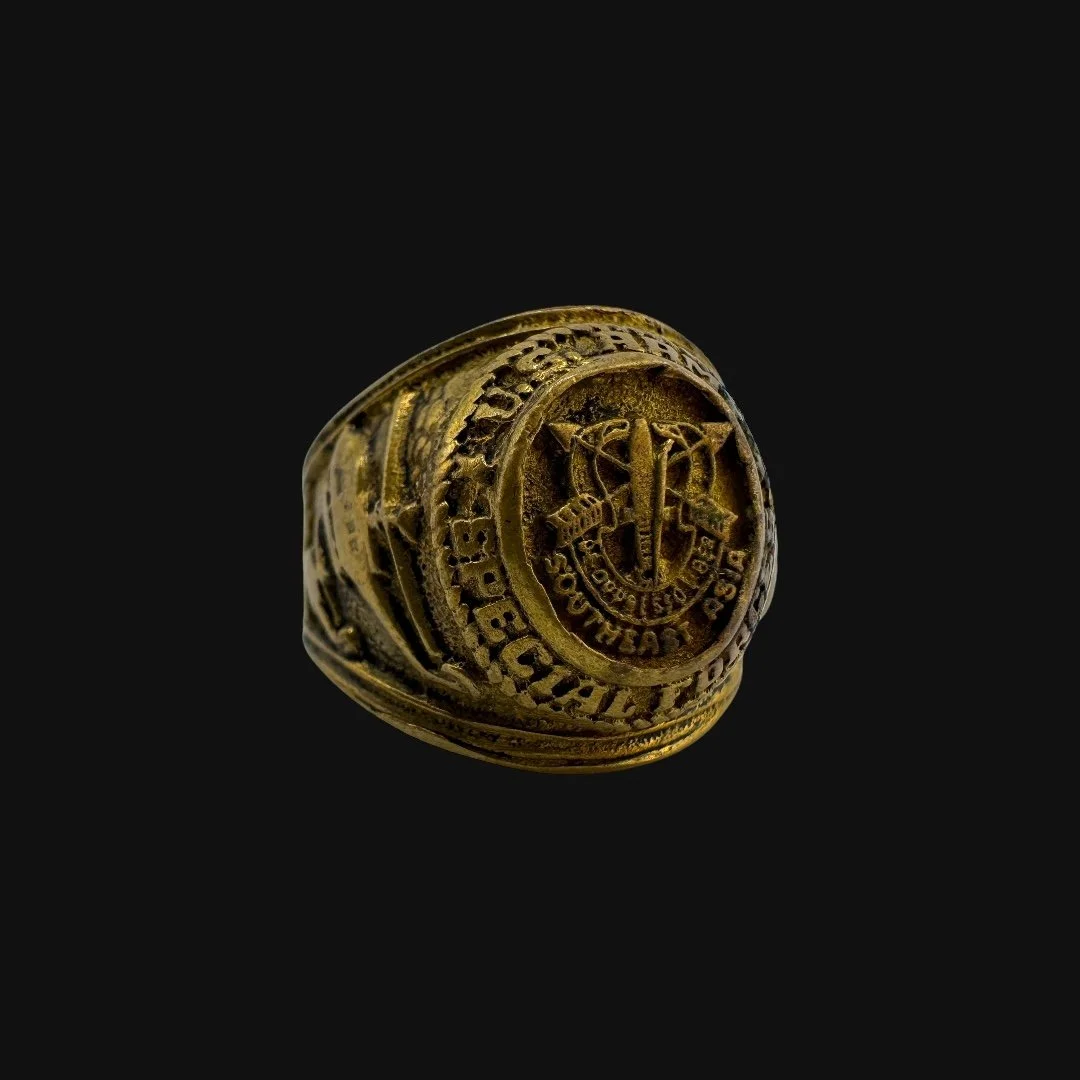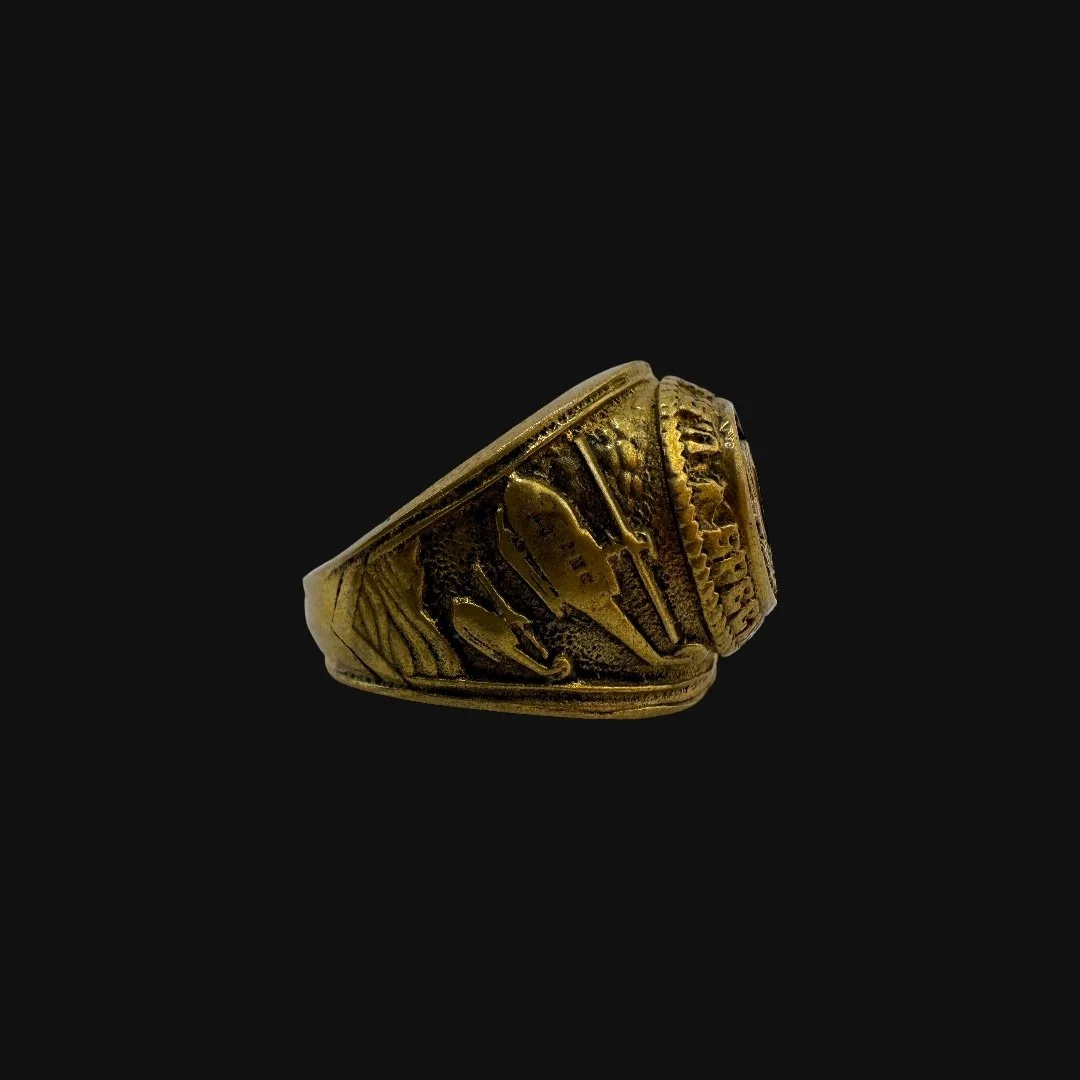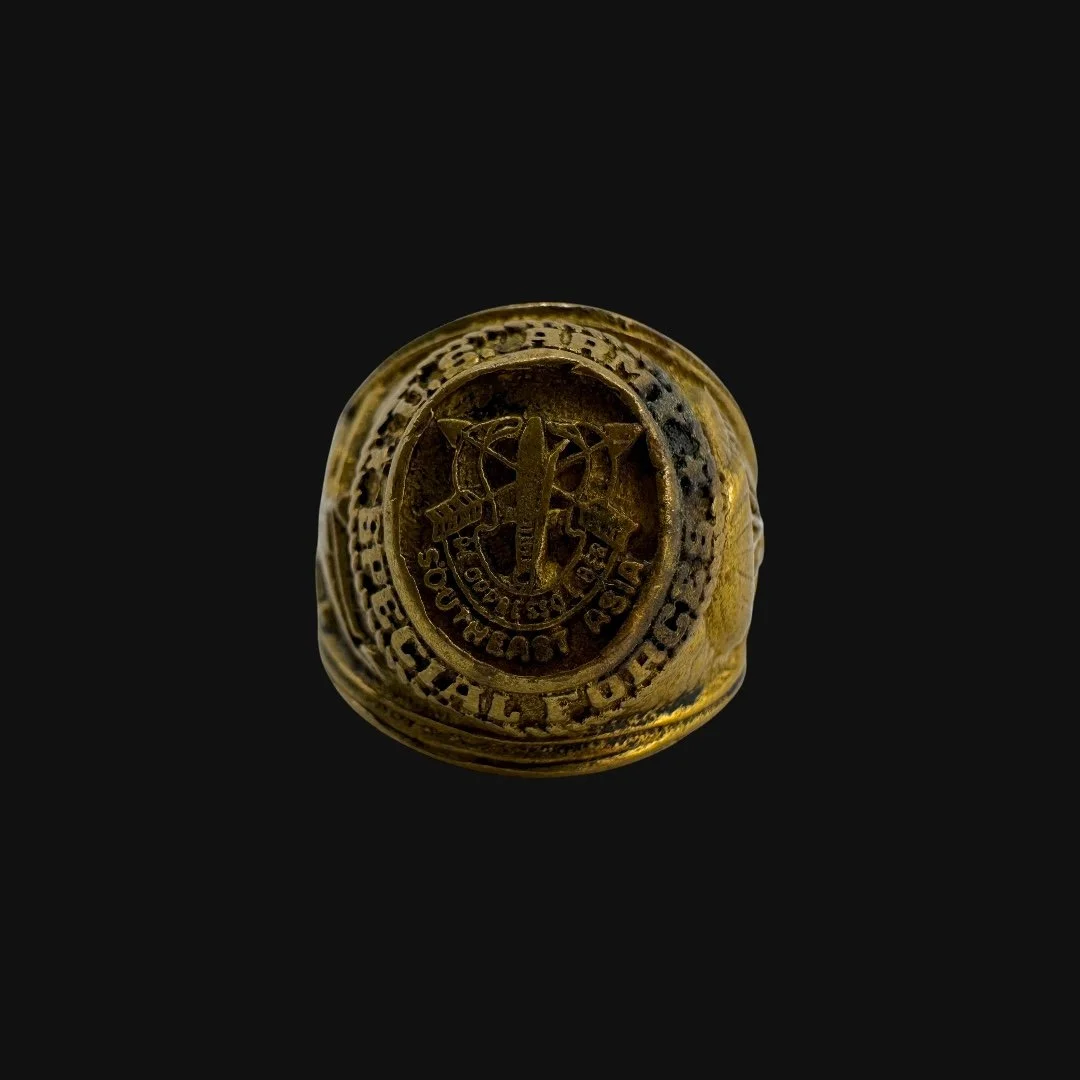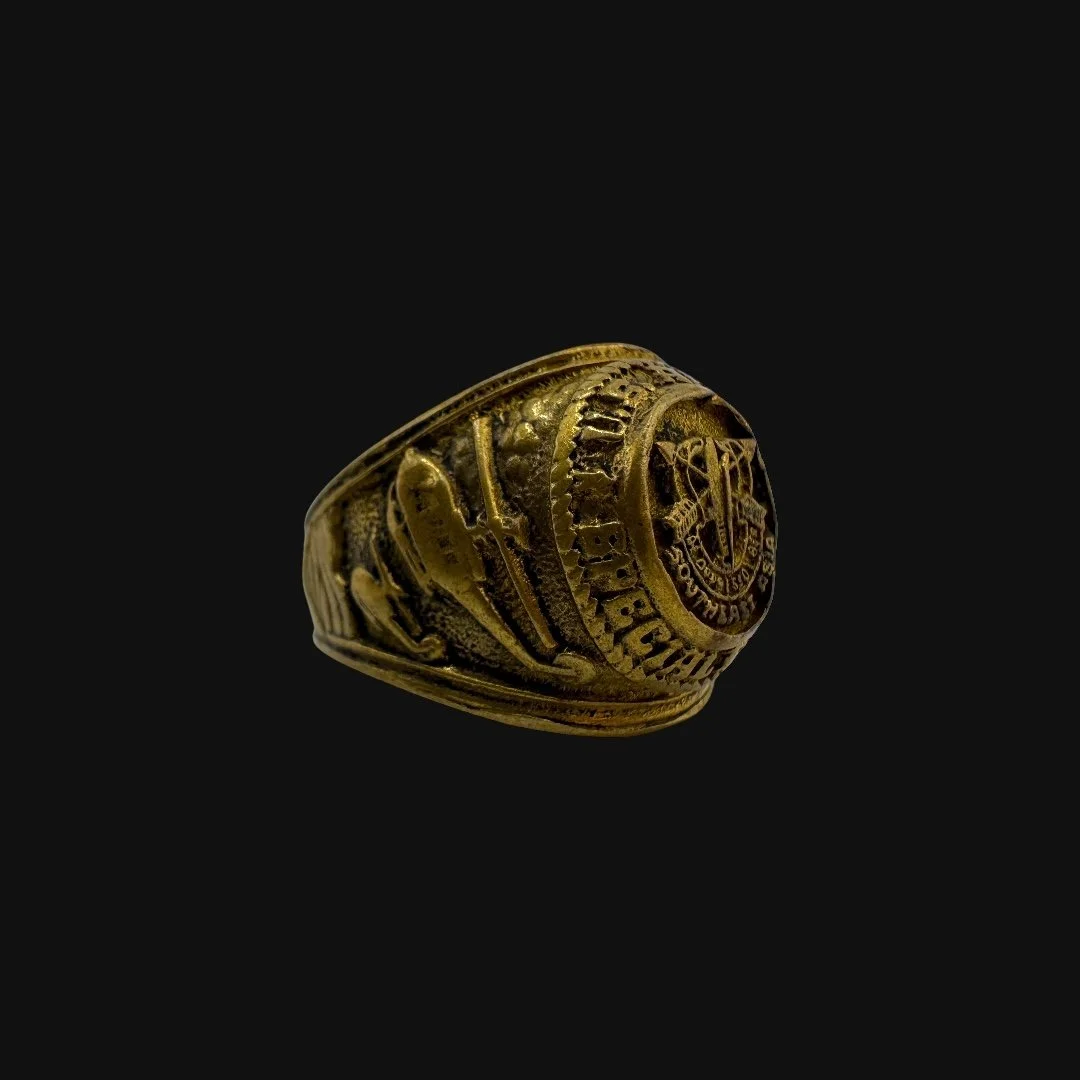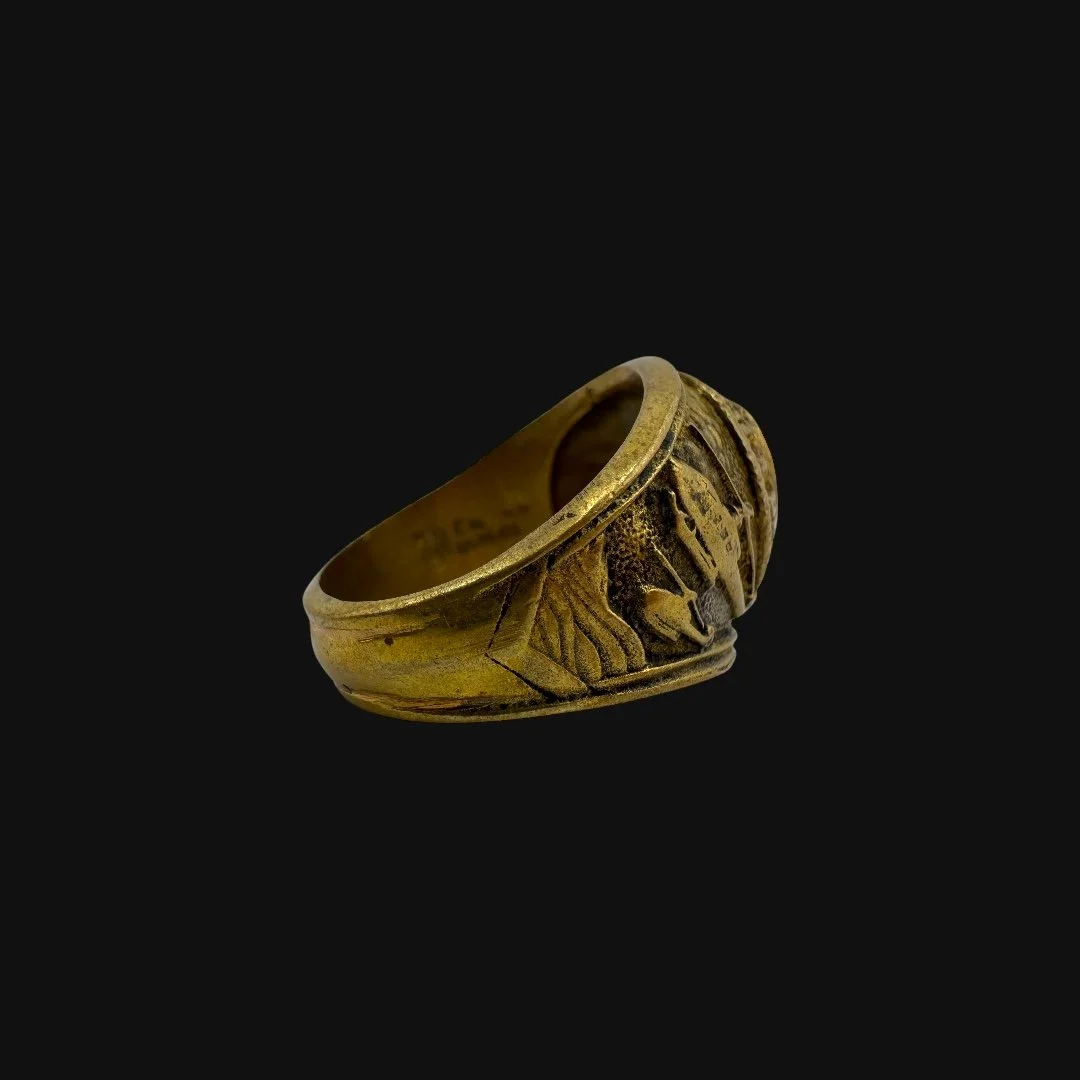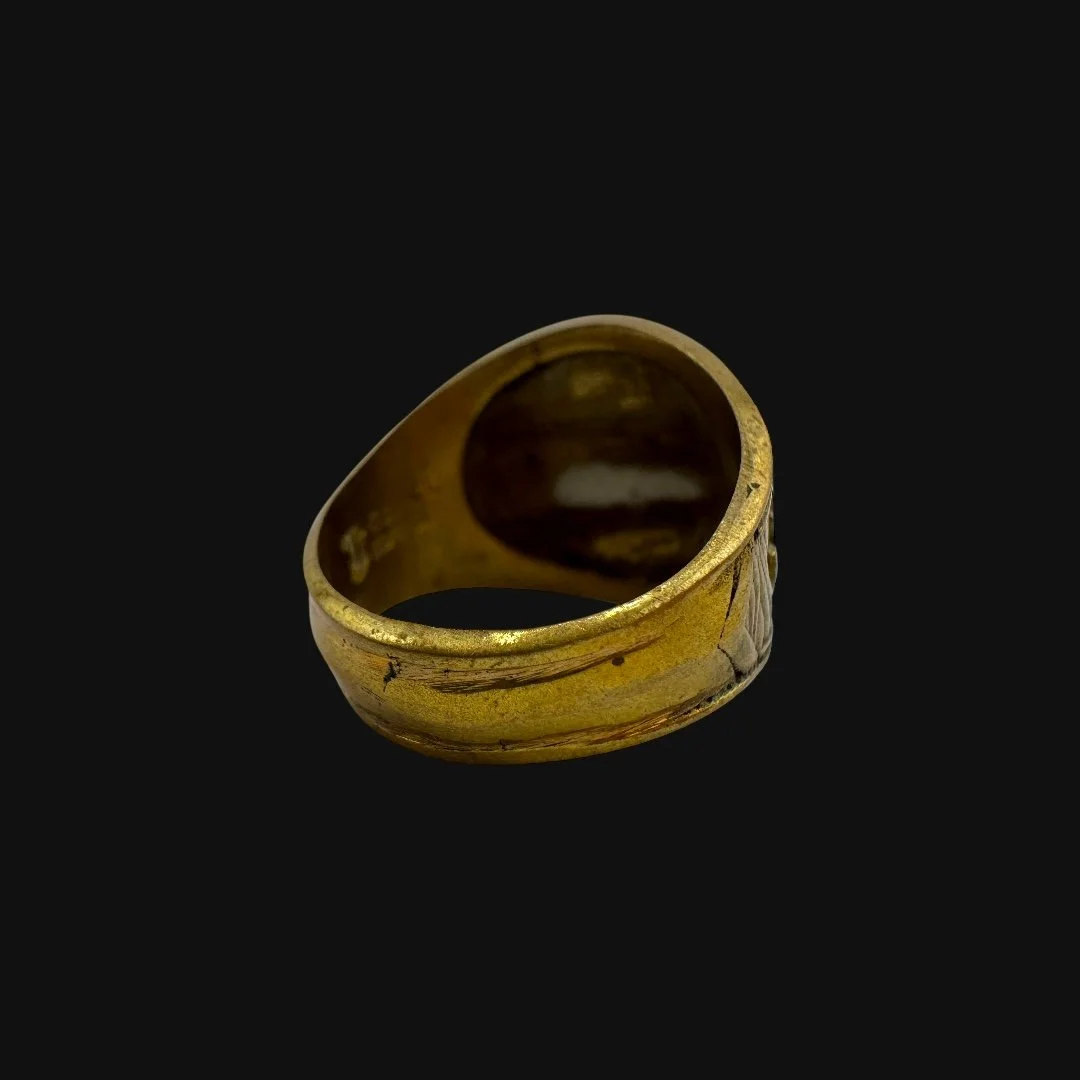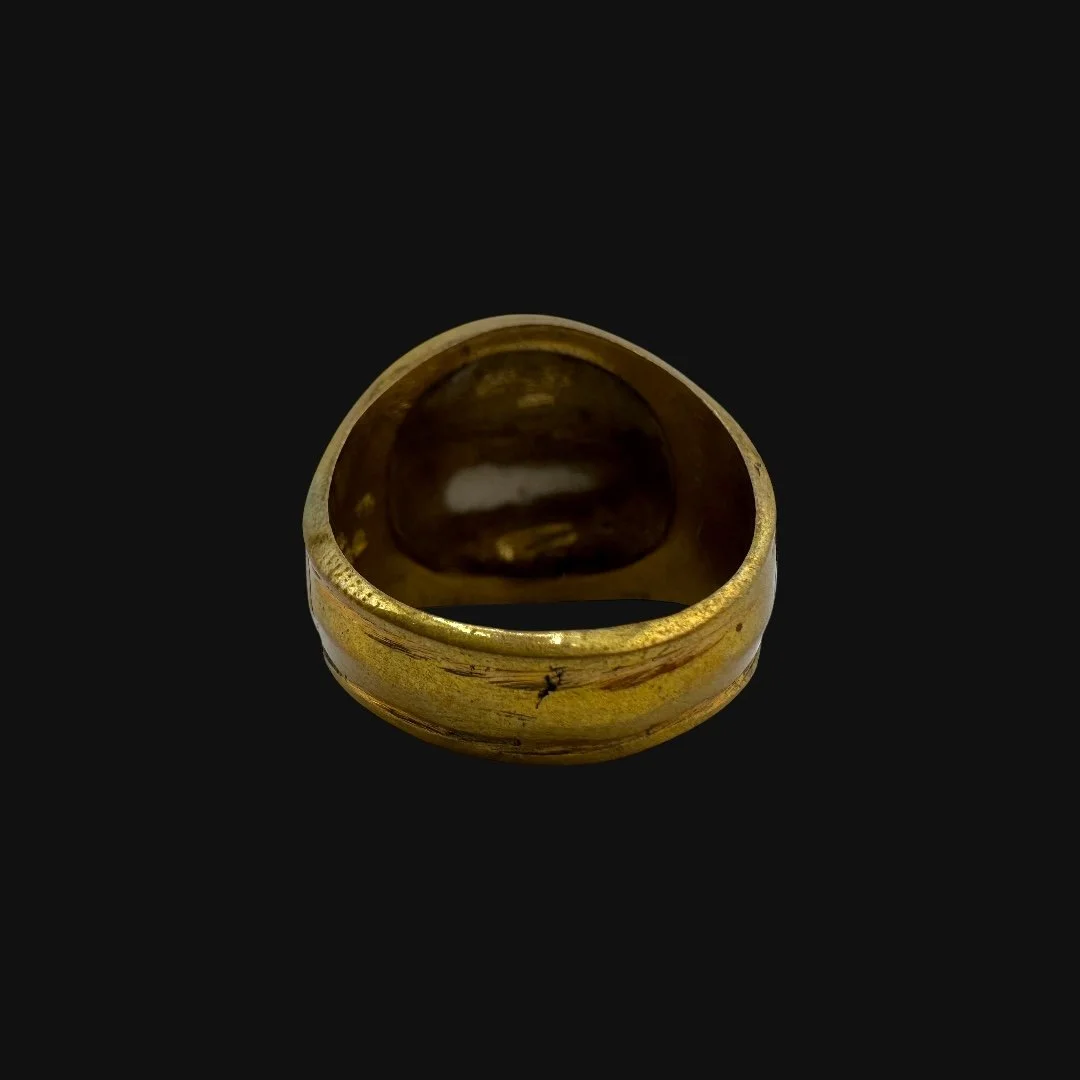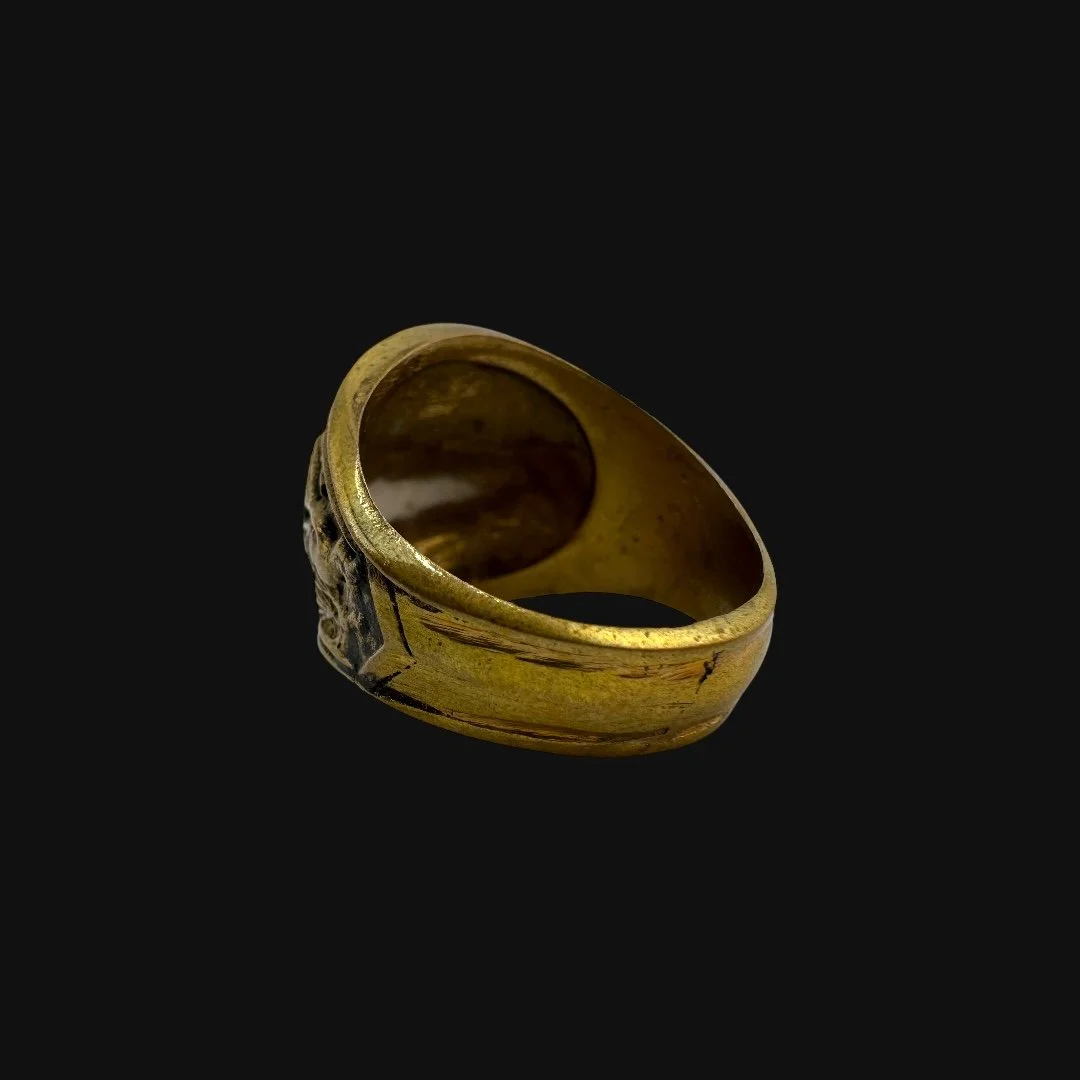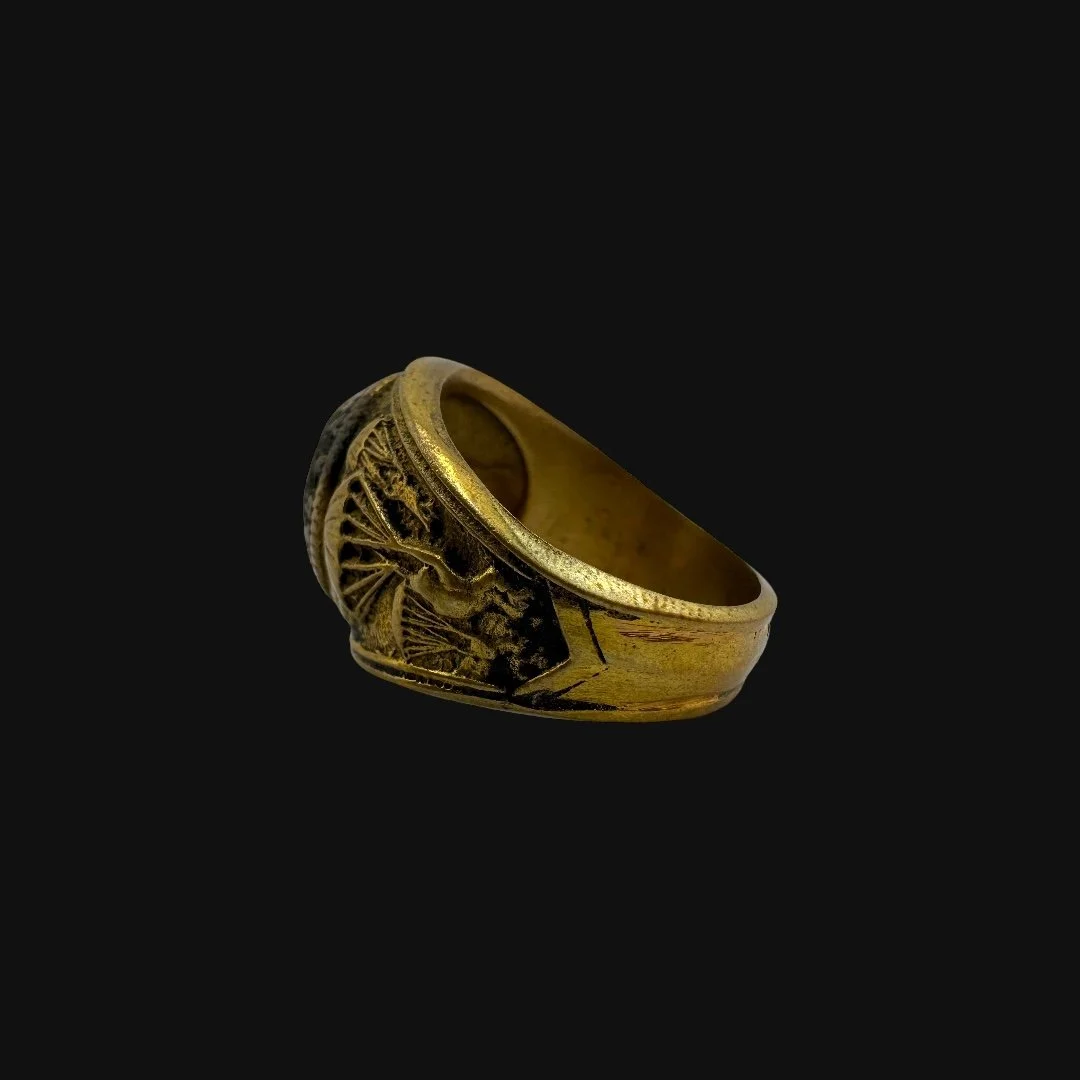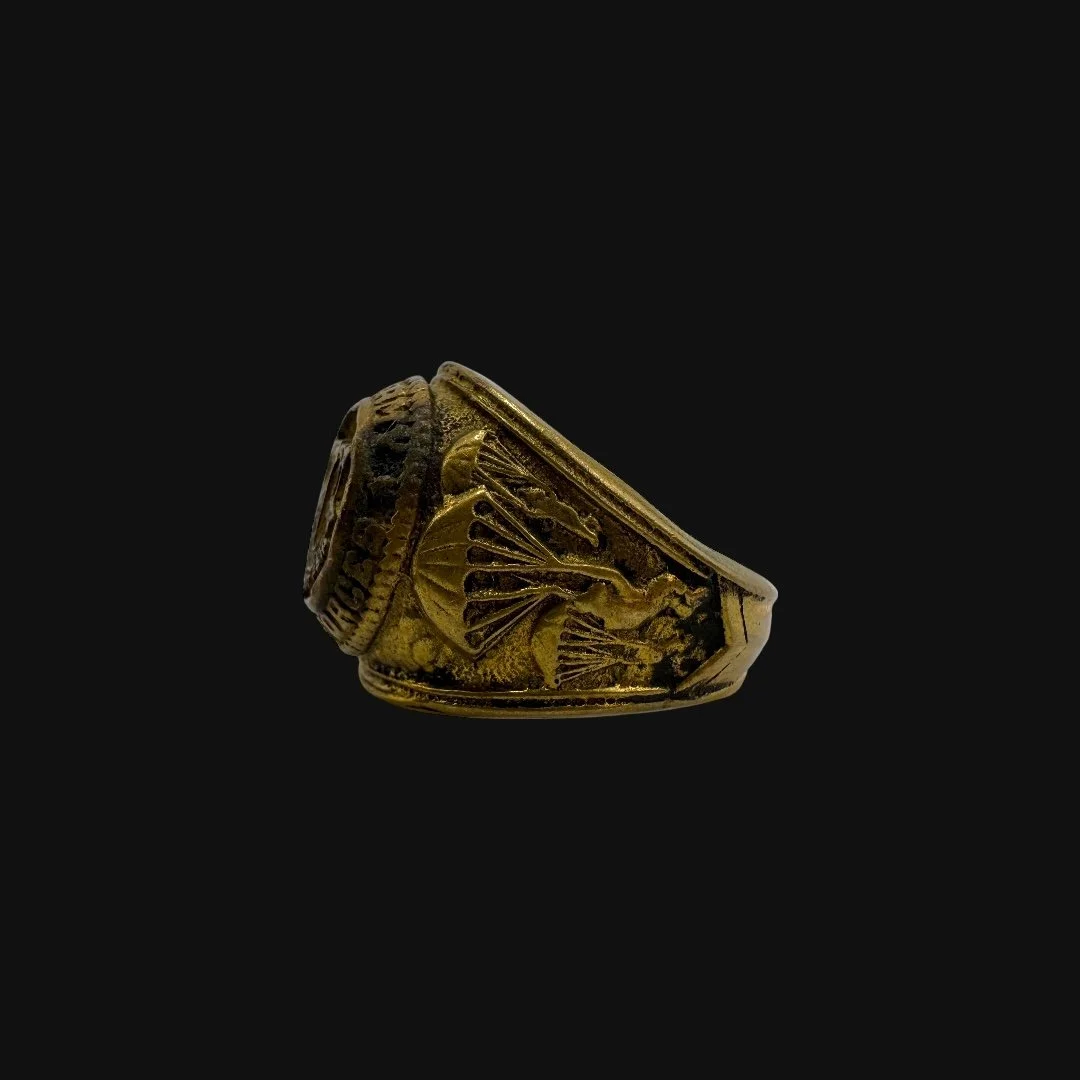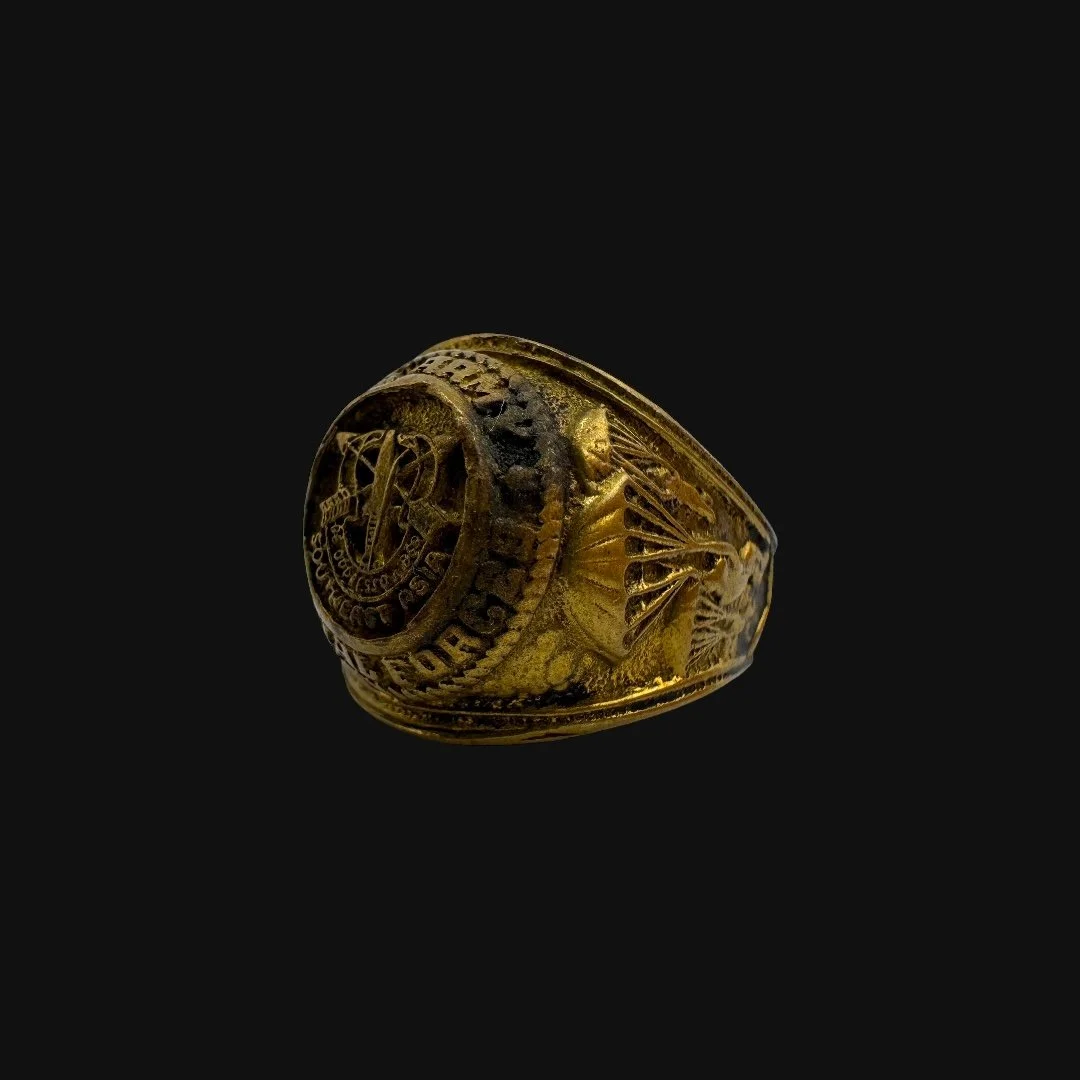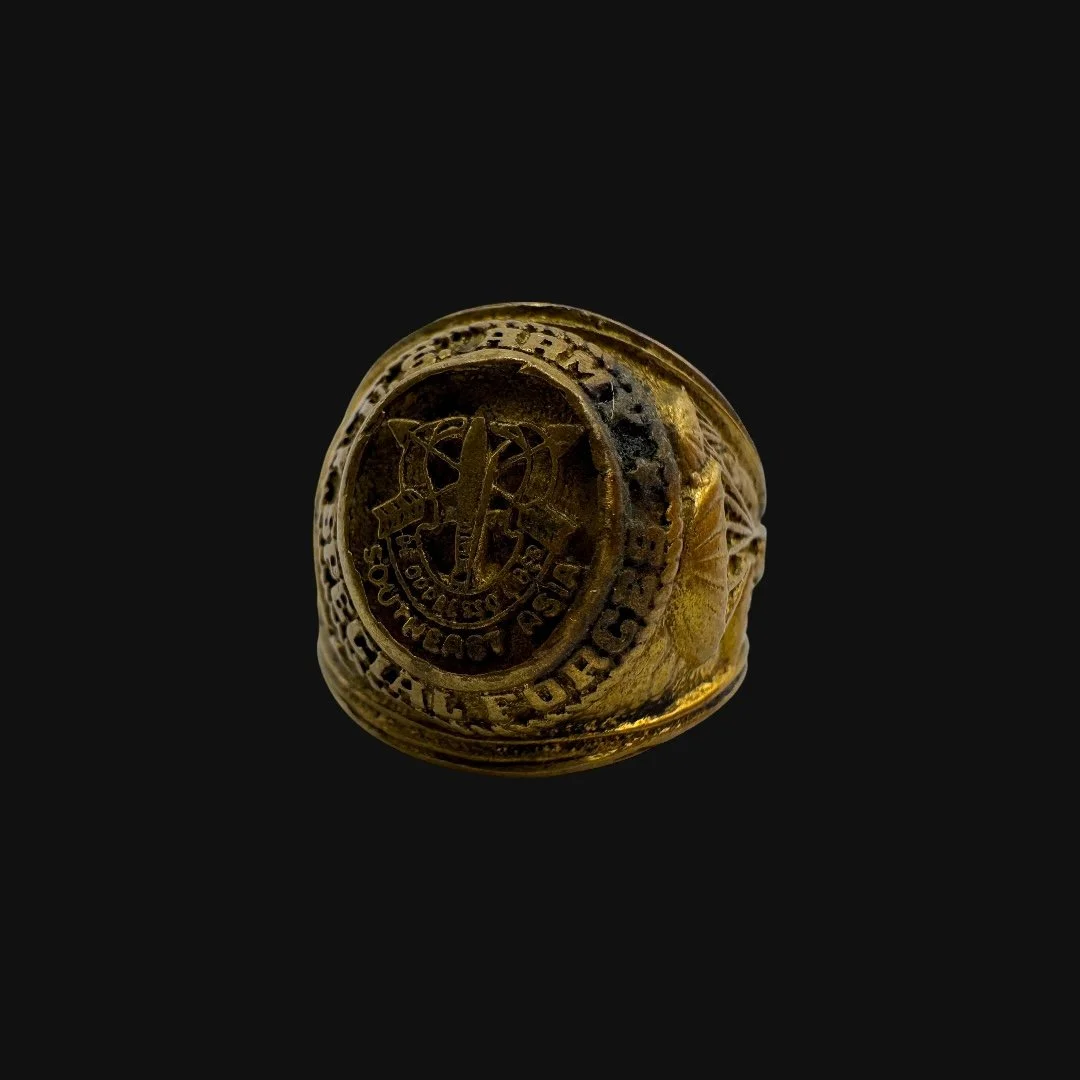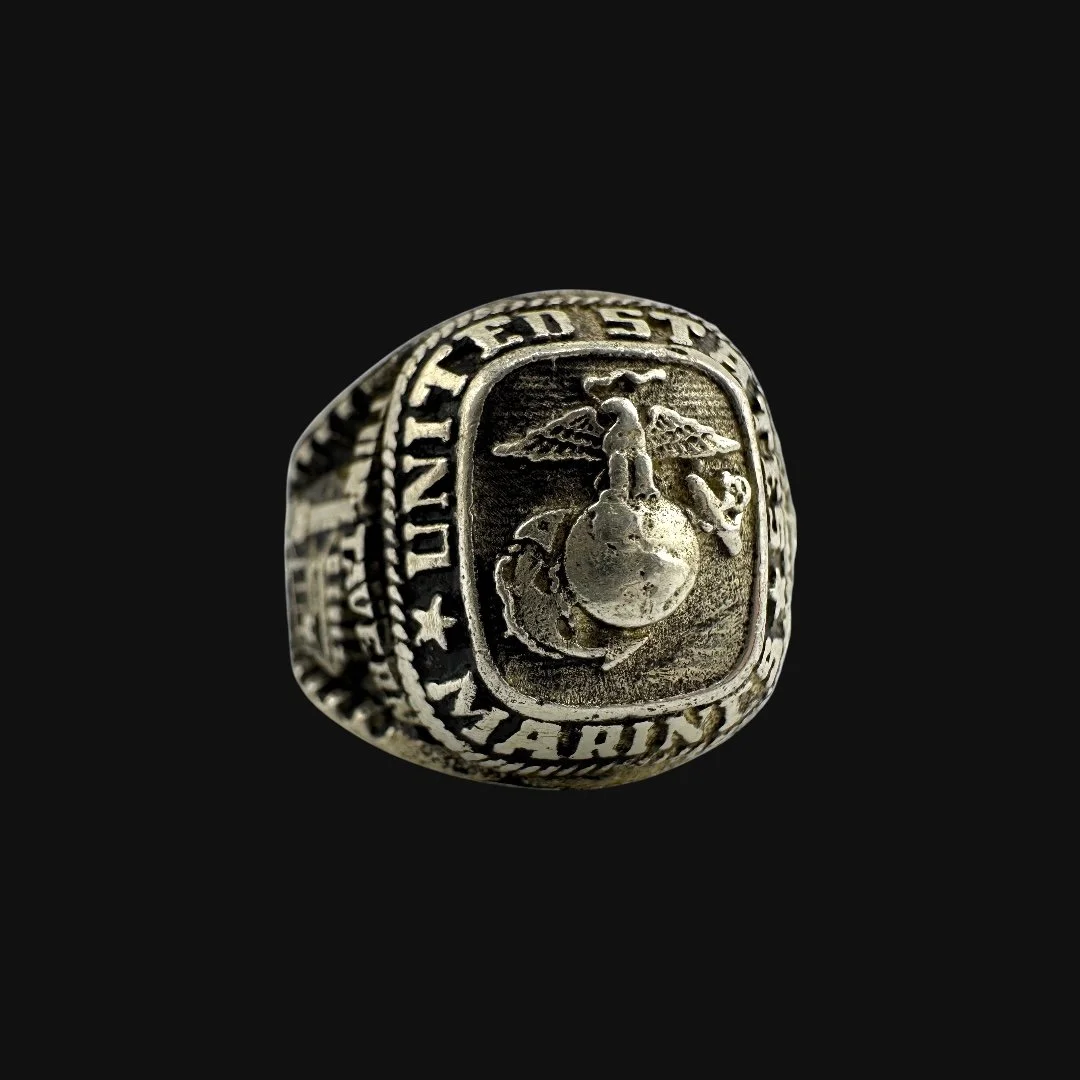 Image 1 of 16
Image 1 of 16

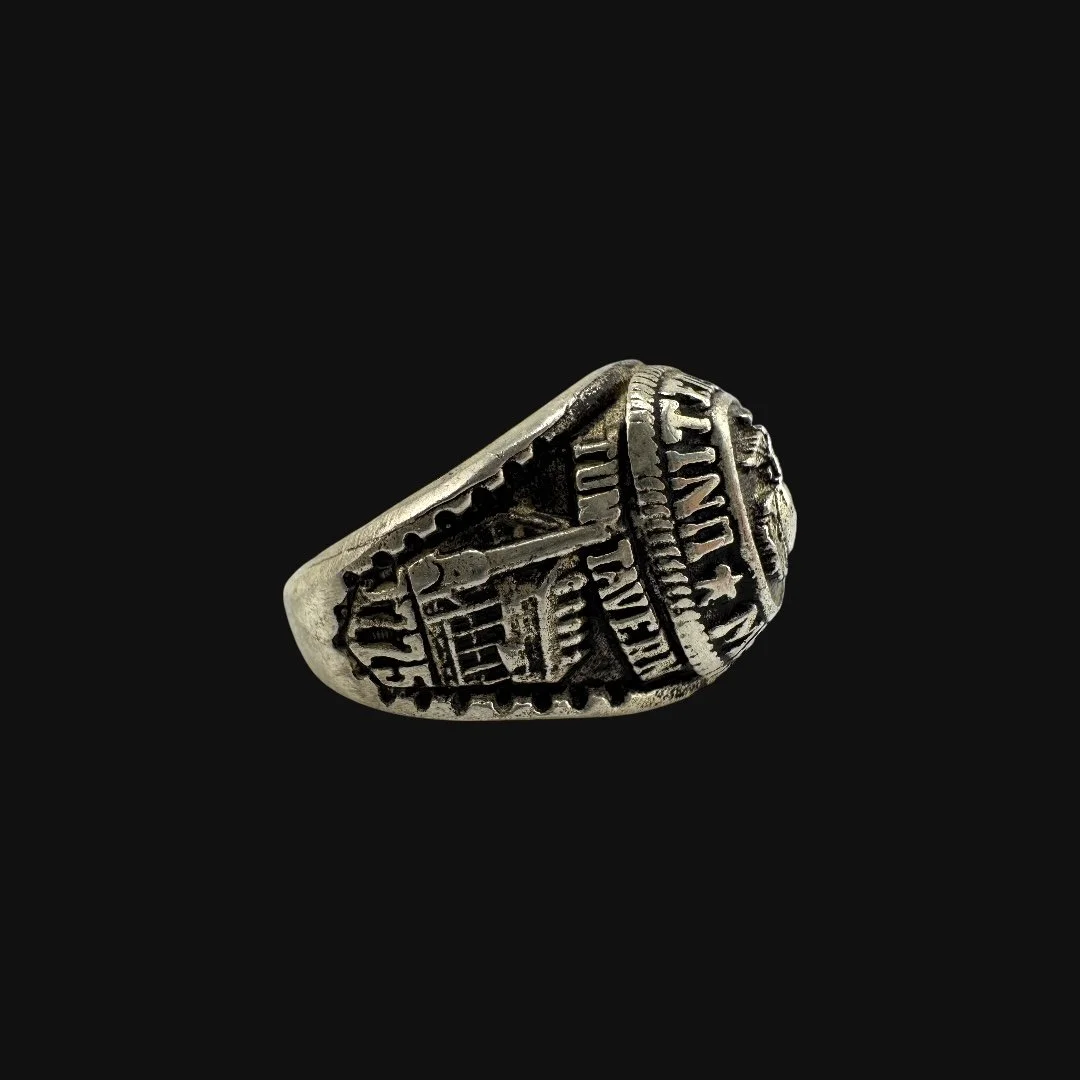 Image 2 of 16
Image 2 of 16

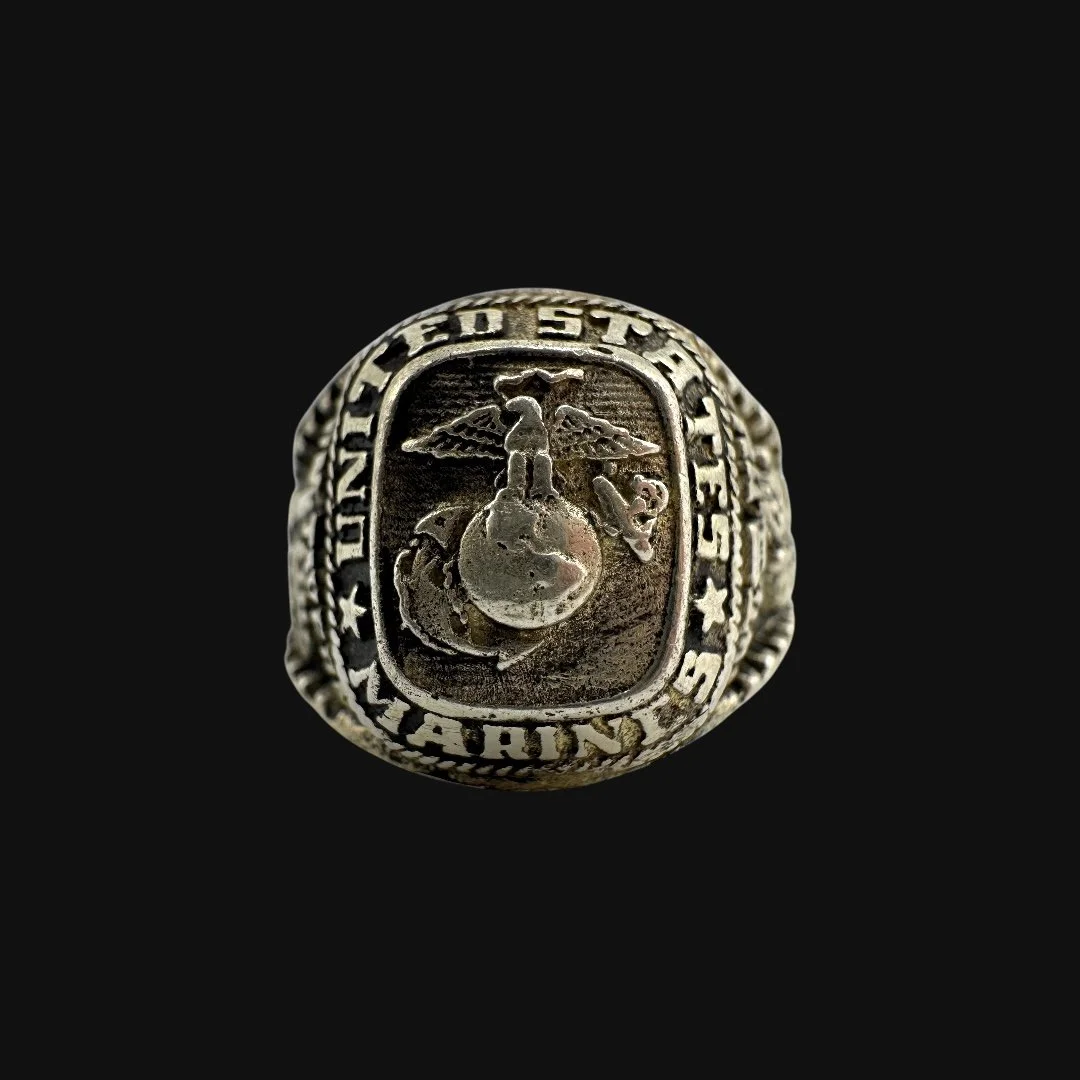 Image 3 of 16
Image 3 of 16

 Image 4 of 16
Image 4 of 16

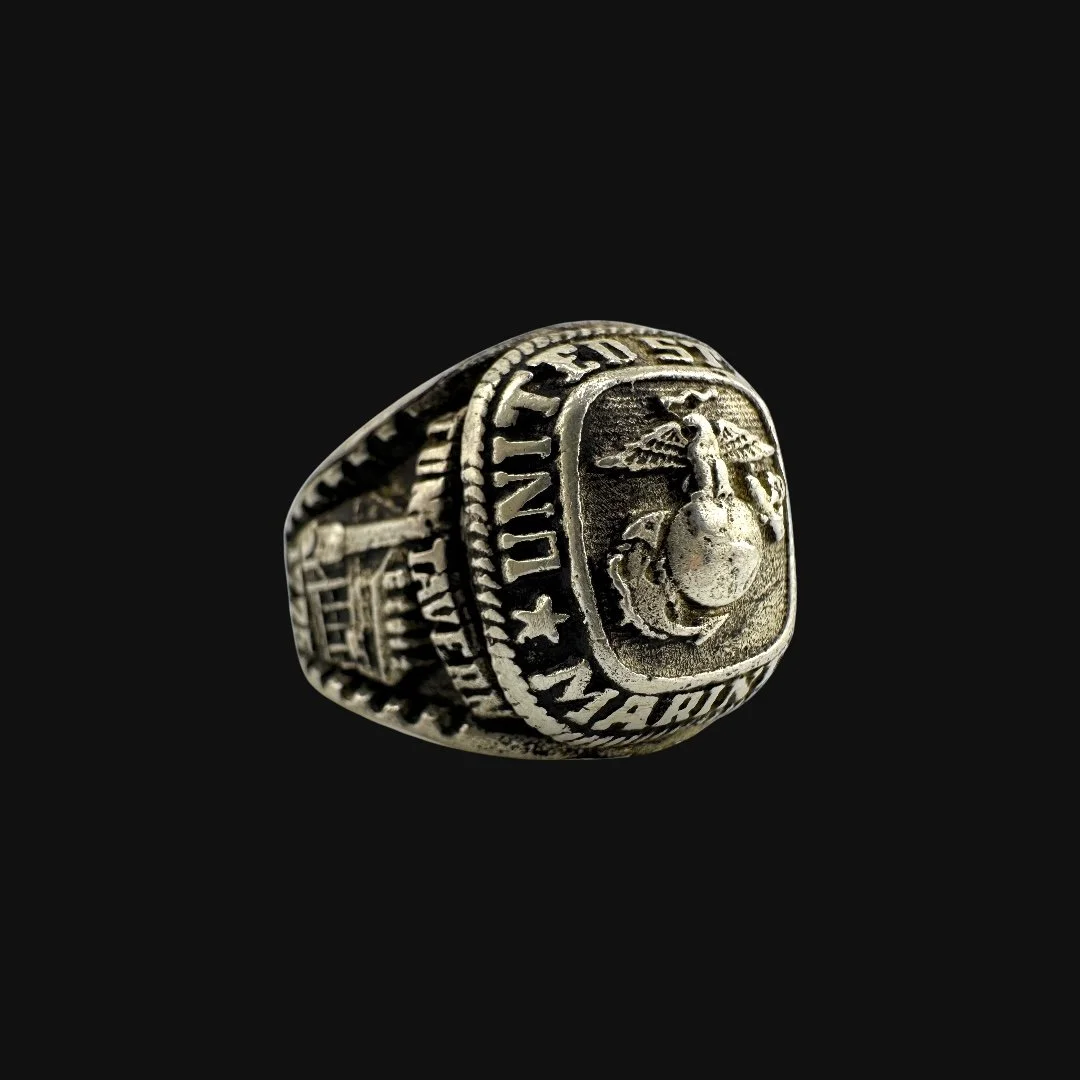 Image 5 of 16
Image 5 of 16

 Image 6 of 16
Image 6 of 16

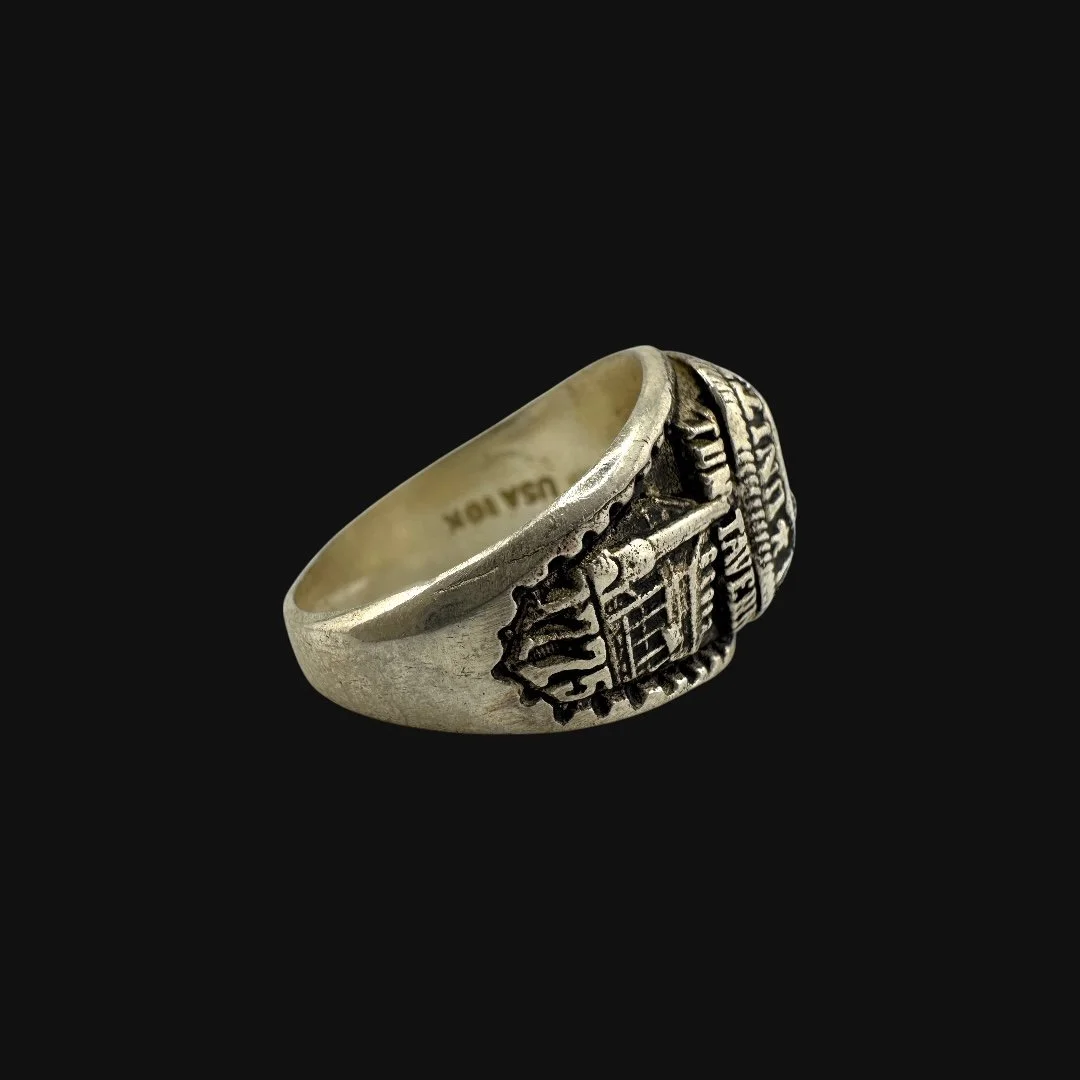 Image 7 of 16
Image 7 of 16

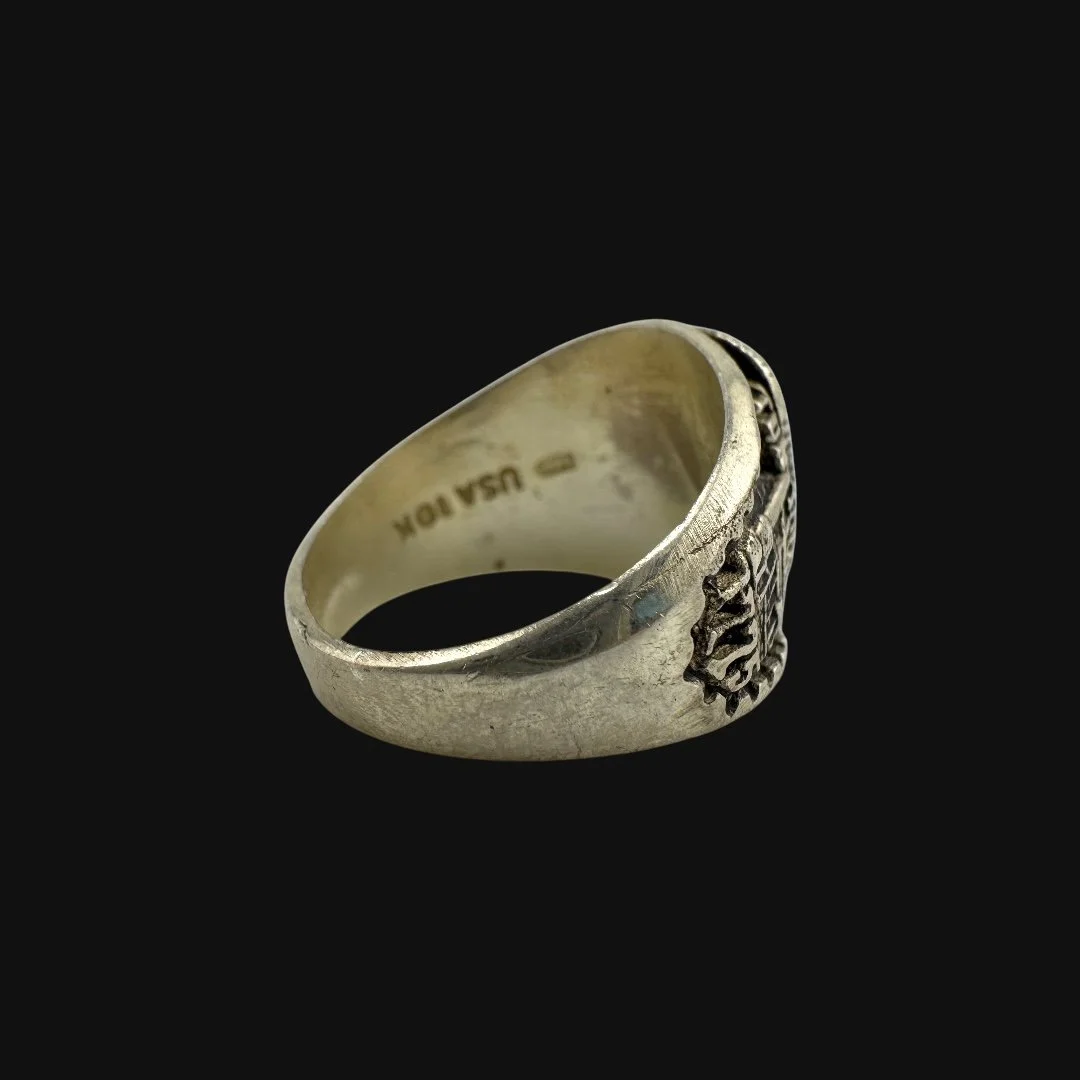 Image 8 of 16
Image 8 of 16

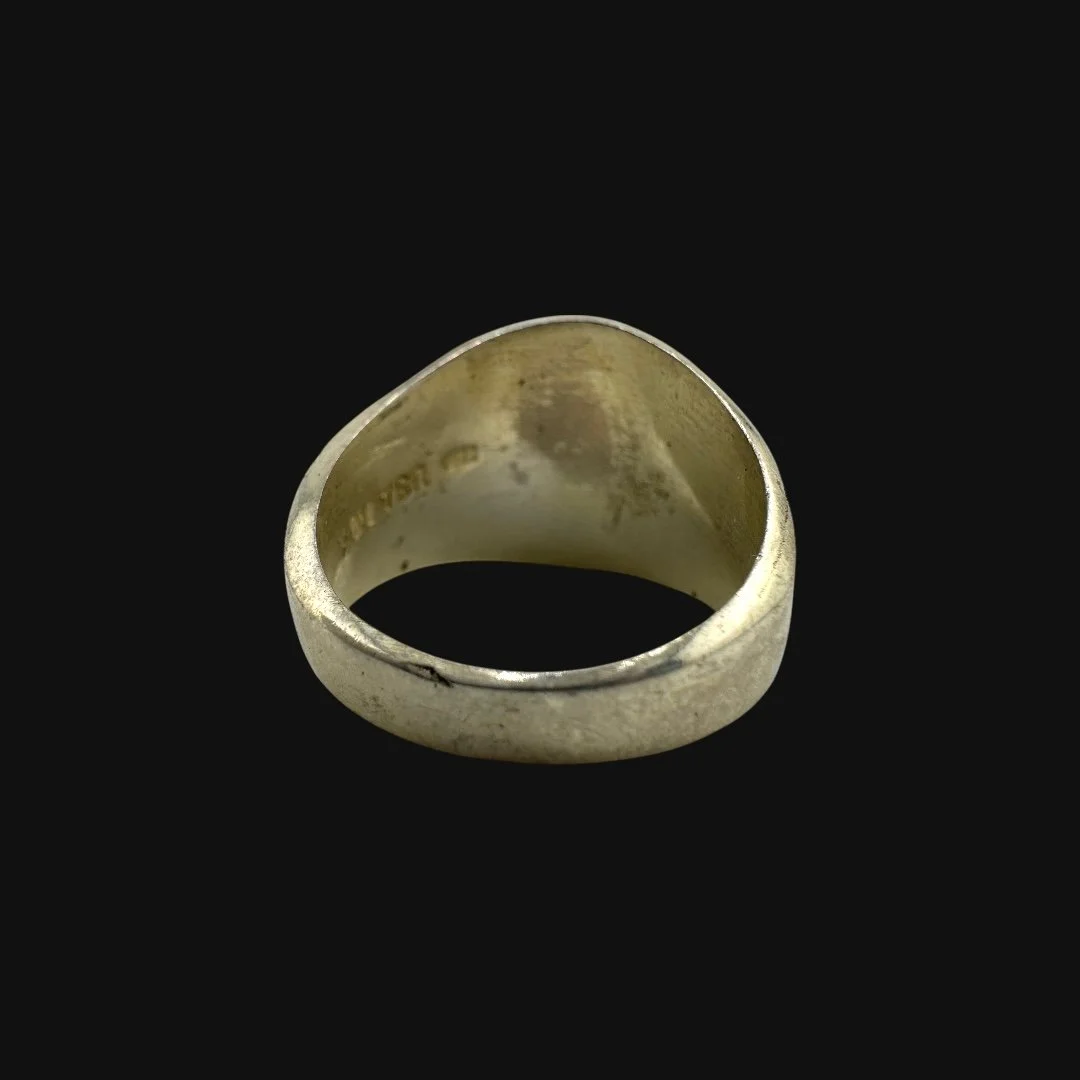 Image 9 of 16
Image 9 of 16

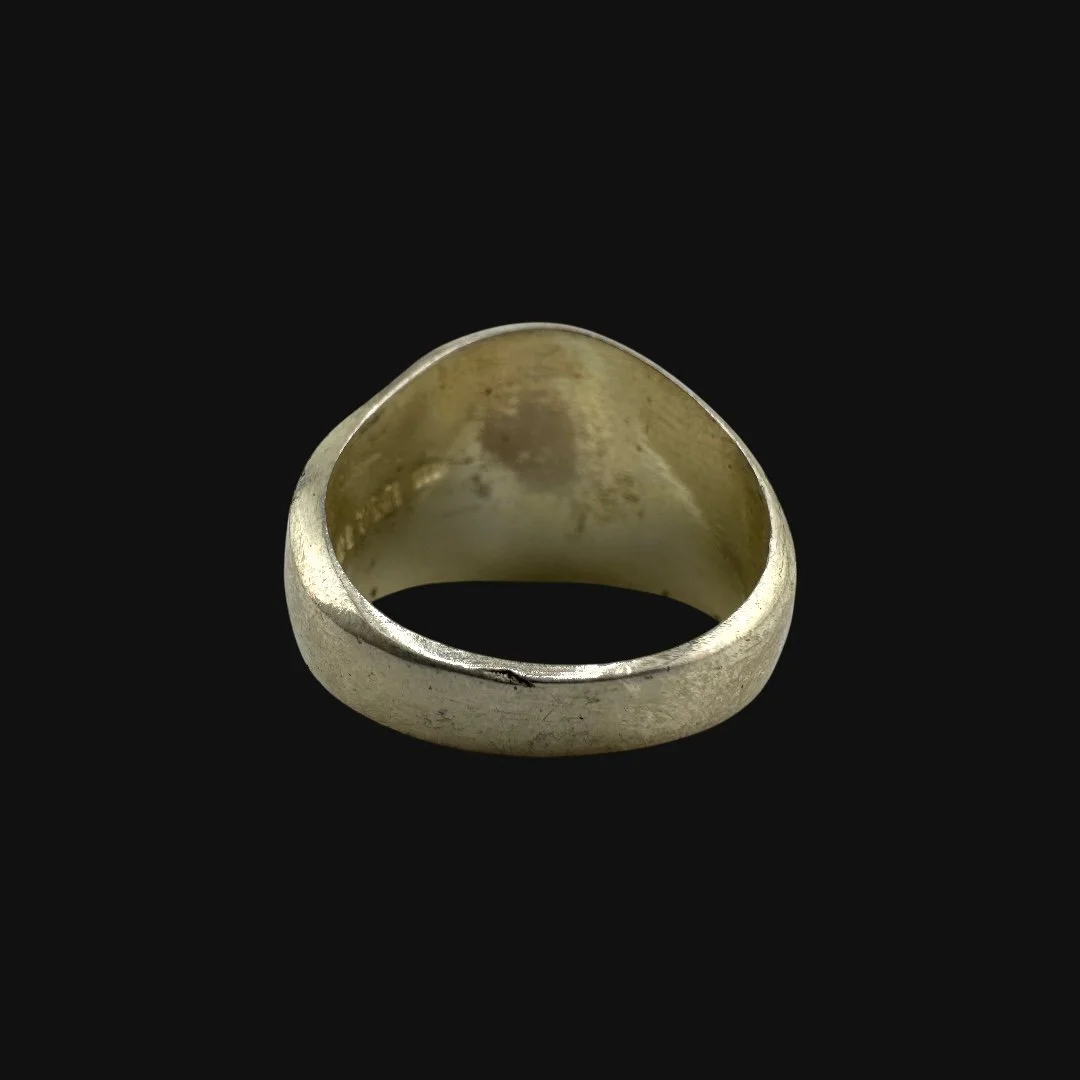 Image 10 of 16
Image 10 of 16

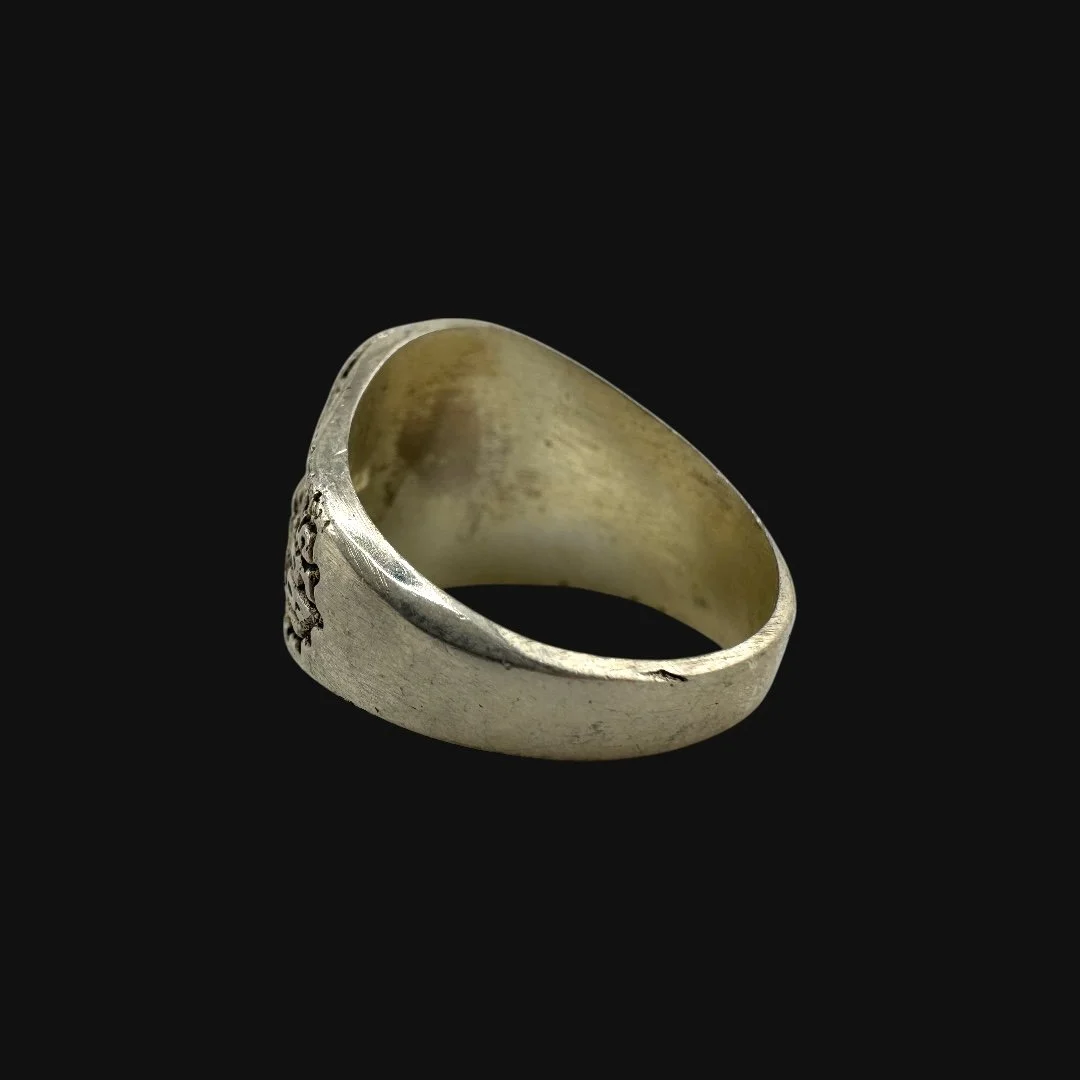 Image 11 of 16
Image 11 of 16

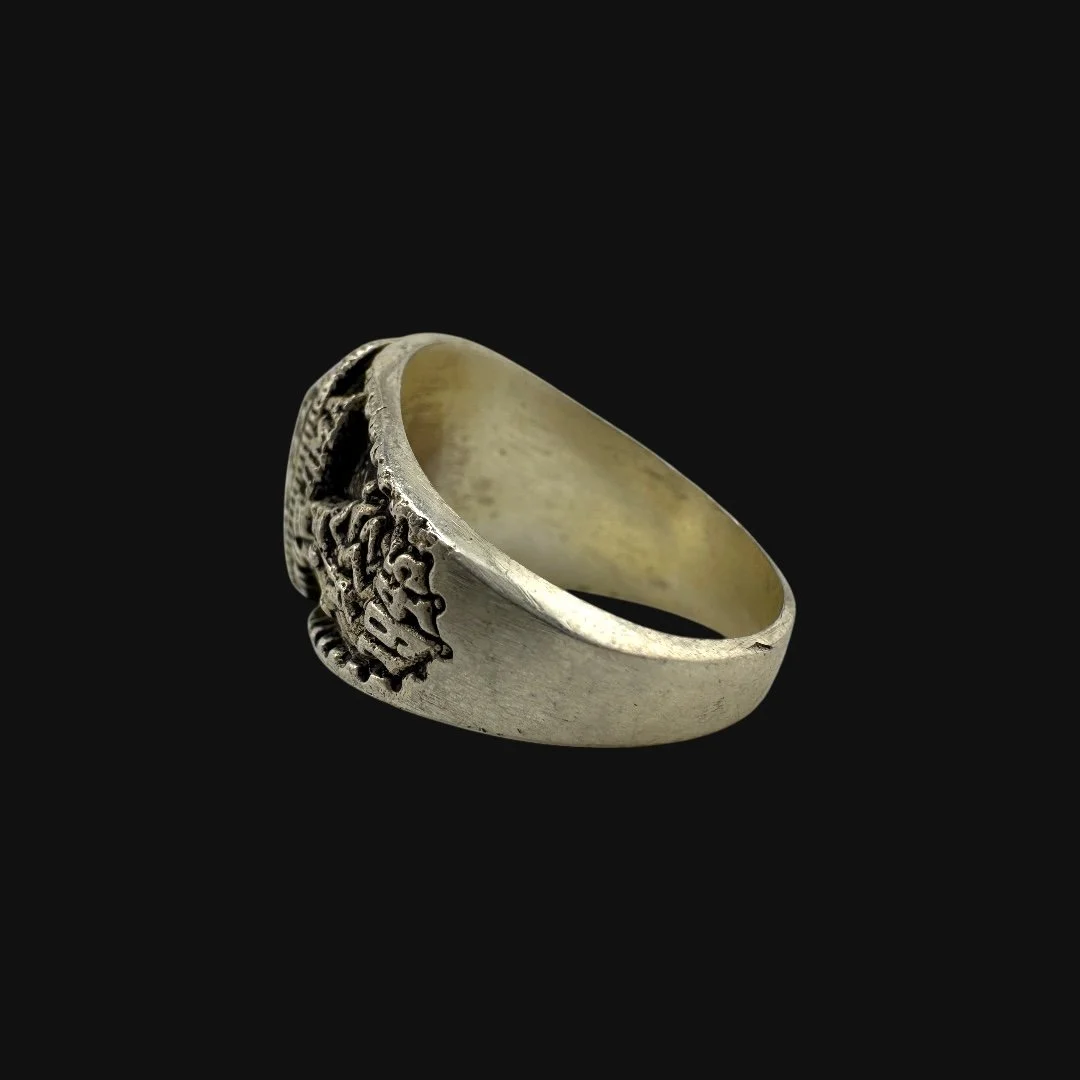 Image 12 of 16
Image 12 of 16

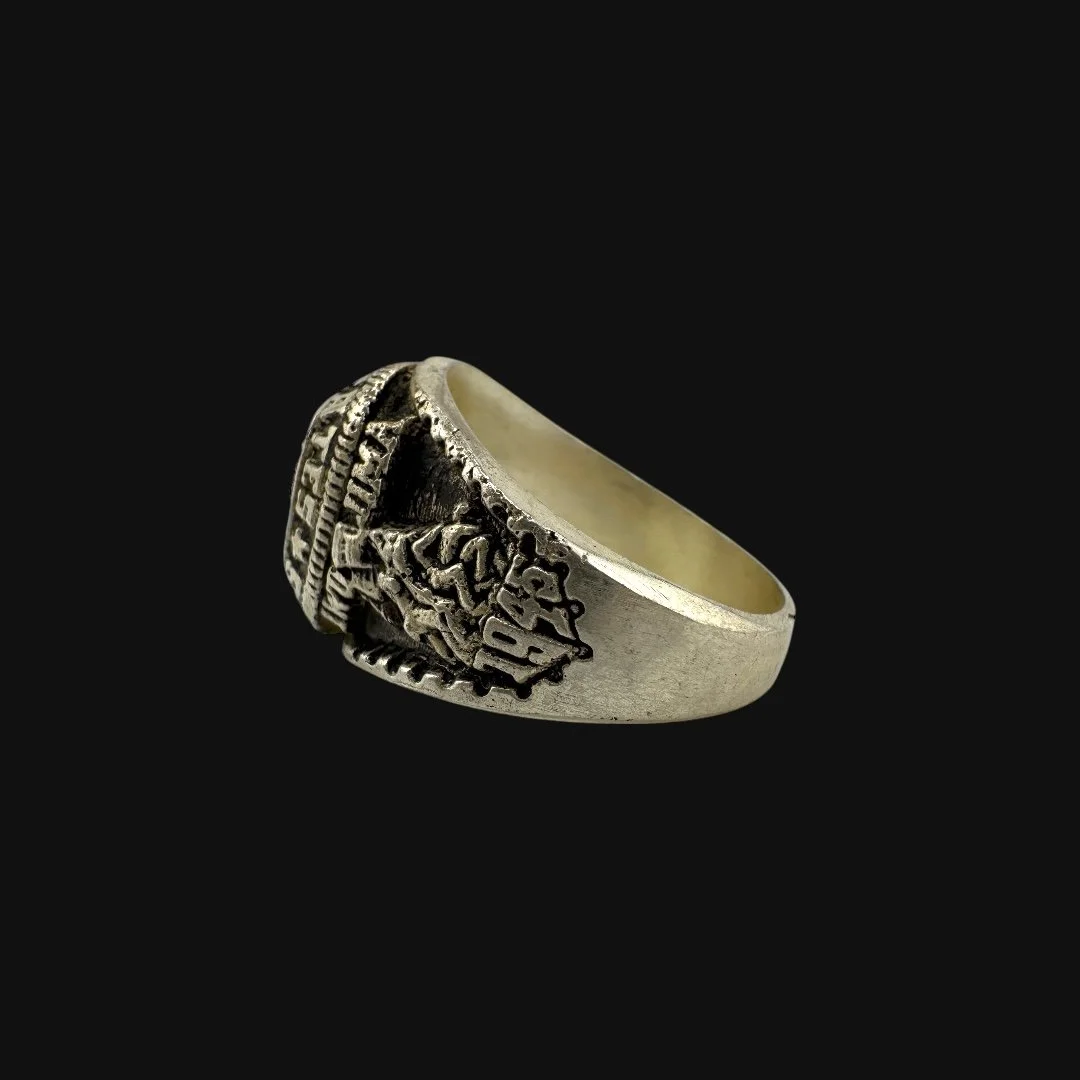 Image 13 of 16
Image 13 of 16

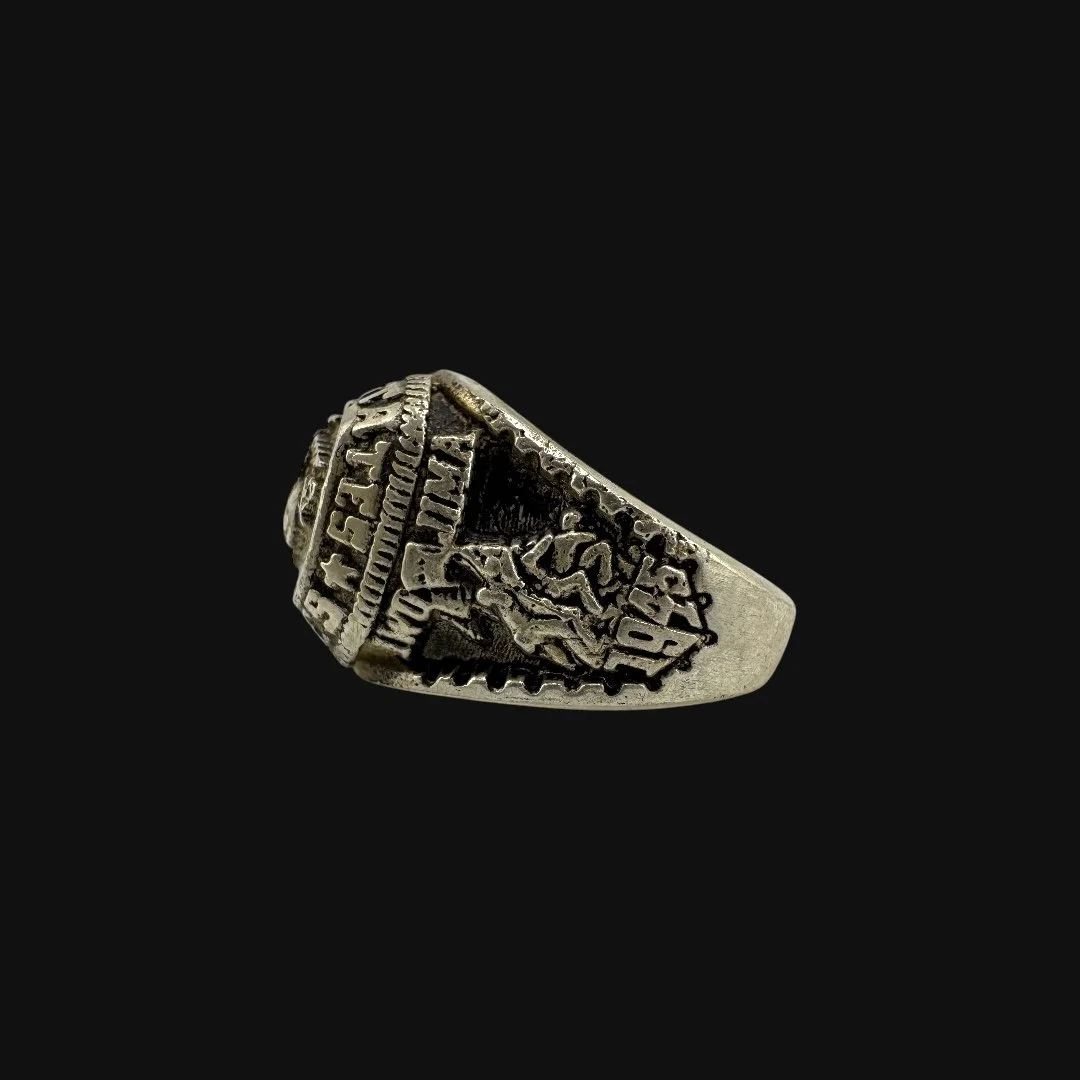 Image 14 of 16
Image 14 of 16

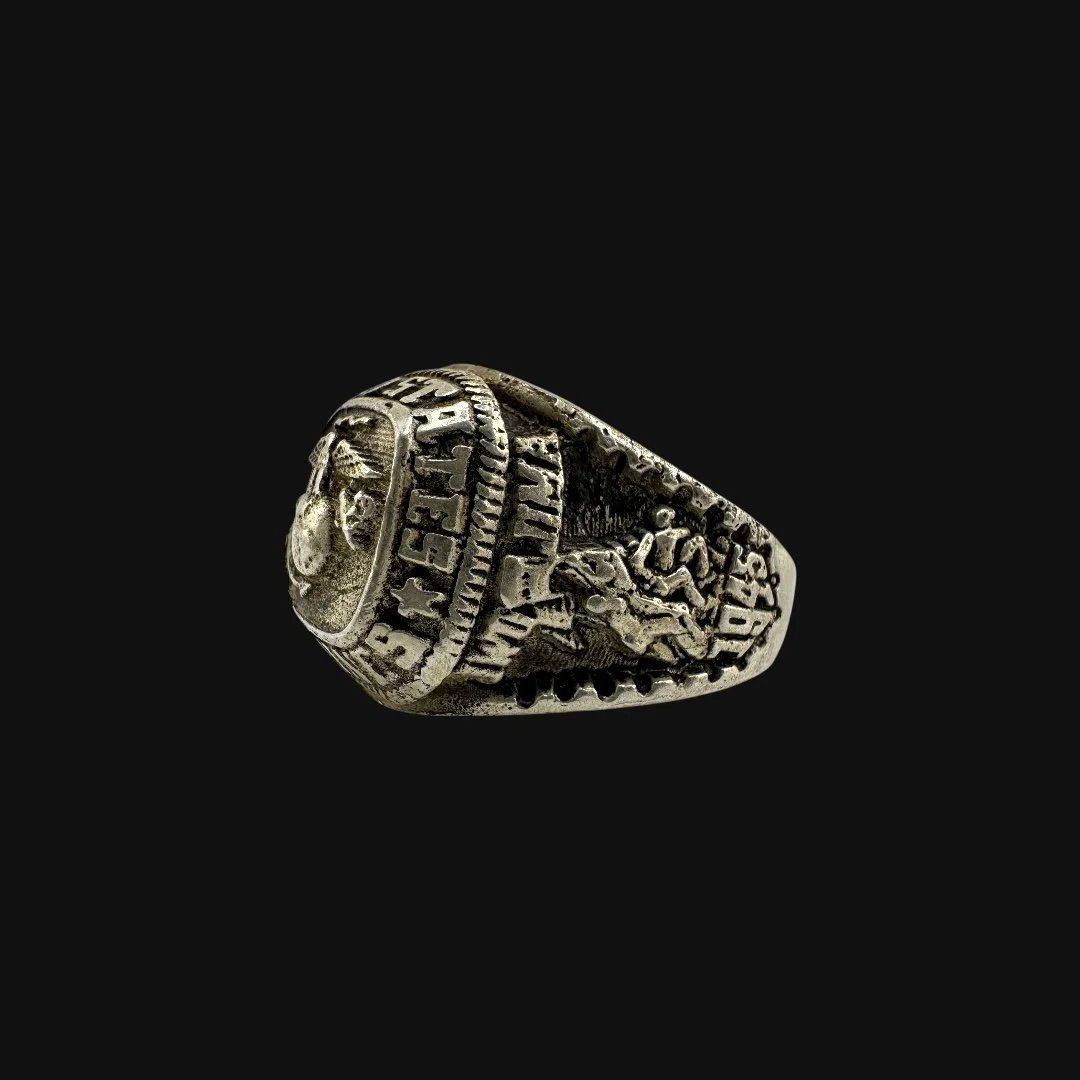 Image 15 of 16
Image 15 of 16

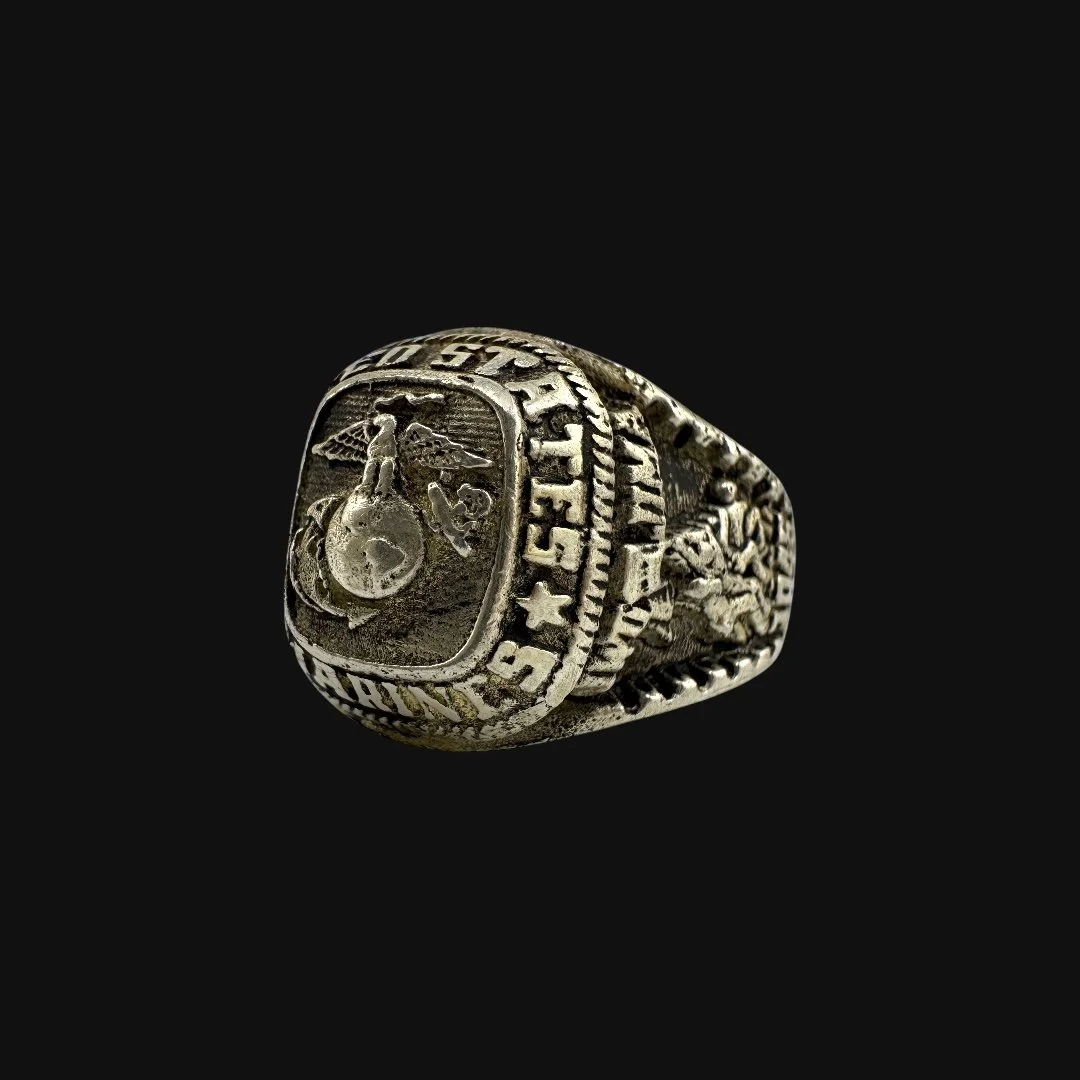 Image 16 of 16
Image 16 of 16

















Original Vietnam War United States Marine Corps “EGA Emblem” Sterling Silver & 10K Gold Military Ring (Size 9.75)
Comes with a hand-signed C.O.A. and a full historical research write-up
From: Vietnam War
Branch: United States Marine Corps
Dated: 1960’s-1970’s
Ring Size: 9.75 (US)
Material: Sterling Silver & 10K Gold
Wearable History Collection:
This authentic Vietnam War–era ring, preserved in its original and unaltered condition, reflects the craftsmanship and resilience of a generation that served in one of America’s most challenging conflicts. Forged during the turbulent years of the 1960s and 1970s, it carries the weight of history while remaining fully suitable for modern wear today. As part of our exclusive Vietnam War “Wearable History Ring Collection,” it offers a rare chance to own and wear a genuine artifact of the era. Both a timeless accessory and a direct link to the men who endured the jungles, firebases, and patrols of Vietnam, this one-of-a-kind ring stands as a wearable tribute to their courage, sacrifice, and brotherhood.
Historical Significance to the U.S. Marine Corps in Vietnam:
The United States Marine Corps was at the forefront of the Vietnam War, playing a decisive role from the first large-scale U.S. combat deployment in 1965 until their withdrawal in the early 1970s. Marines of the 9th Marine Expeditionary Brigade landed at Da Nang to defend air bases, but their mission quickly expanded into aggressive operations against both Viet Cong guerrillas and the North Vietnamese Army. Early successes, such as Operation Starlite in August 1965, demonstrated the Marines’ ability to coordinate air, sea, and land assaults, delivering a sharp blow to the Viet Cong and proving their combat effectiveness in Vietnam’s difficult terrain.
Some of the war’s most defining battles placed the Marines in the spotlight. The Siege of Khe Sanh in early 1968 became a symbol of U.S. resolve, as Marines endured 77 days of relentless attack from tens of thousands of enemy troops. Supported by one of the most intense aerial bombardments in history, they held the base, preventing what many feared could be another Dien Bien Phu. That same year, during the Tet Offensive, Marines fought in the bloody battle forHue City, where house-to-house combat tested their adaptability in an urban environment. Although both battles came at a heavy cost, they solidified the Marines’ reputation for resilience under extreme conditions.
Beyond large-scale combat, the Marines implemented innovative counterinsurgency programs, most notably the Combined Action Program, which embedded small Marine units within villages to work alongside local militias. This strategy fostered trust, protected communities, and weakened Viet Cong influence in ways that traditional military campaigns often struggled to achieve. By the time U.S. policy shifted toward “Vietnamization” and the Marines began withdrawing in 1971, they had fought in some of the war’s bloodiest campaigns while also pioneering approaches to irregular warfare.
The Marine Corps left Vietnam with a hard-earned legacy of sacrifice and adaptability. Over 13,000 Marines were killed, and tens of thousands more were wounded. Their service at Da Nang, Khe Sanh, Hue, and across countless outposts reshaped modern Marine doctrine, emphasizing small-unit leadership, flexibility, and the balance between conventional and counterinsurgency operations. Though controversial in its outcome, the Vietnam War demonstrated the tenacity of the Marines and ensured their role as one of the most battle-hardened forces in U.S. military history.
The Legacy Within This Ring:
This Vietnam War ring carries the legacy of a United States Marine who endured the unforgiving battlefields of Southeast Asia. For the Marines, Vietnam demanded constant resilience, whether defending bases at Da Nang, holding the line at Khe Sanh, or fighting house to house in Hue City. Each campaign tested their courage, bound them in brotherhood, and left an indelible mark on all who served. It was a personal emblem of survival and sacrifice, etched with the memory of hardship, camaraderie, and the will to endure. Today, this ring remains a powerful relic. It preserves not only the memory of the Marine who wore it, but also the broader story of the Corps’ sacrifice in Vietnam, where honor and perseverance defined their service.
Comes with a hand-signed C.O.A. and a full historical research write-up
From: Vietnam War
Branch: United States Marine Corps
Dated: 1960’s-1970’s
Ring Size: 9.75 (US)
Material: Sterling Silver & 10K Gold
Wearable History Collection:
This authentic Vietnam War–era ring, preserved in its original and unaltered condition, reflects the craftsmanship and resilience of a generation that served in one of America’s most challenging conflicts. Forged during the turbulent years of the 1960s and 1970s, it carries the weight of history while remaining fully suitable for modern wear today. As part of our exclusive Vietnam War “Wearable History Ring Collection,” it offers a rare chance to own and wear a genuine artifact of the era. Both a timeless accessory and a direct link to the men who endured the jungles, firebases, and patrols of Vietnam, this one-of-a-kind ring stands as a wearable tribute to their courage, sacrifice, and brotherhood.
Historical Significance to the U.S. Marine Corps in Vietnam:
The United States Marine Corps was at the forefront of the Vietnam War, playing a decisive role from the first large-scale U.S. combat deployment in 1965 until their withdrawal in the early 1970s. Marines of the 9th Marine Expeditionary Brigade landed at Da Nang to defend air bases, but their mission quickly expanded into aggressive operations against both Viet Cong guerrillas and the North Vietnamese Army. Early successes, such as Operation Starlite in August 1965, demonstrated the Marines’ ability to coordinate air, sea, and land assaults, delivering a sharp blow to the Viet Cong and proving their combat effectiveness in Vietnam’s difficult terrain.
Some of the war’s most defining battles placed the Marines in the spotlight. The Siege of Khe Sanh in early 1968 became a symbol of U.S. resolve, as Marines endured 77 days of relentless attack from tens of thousands of enemy troops. Supported by one of the most intense aerial bombardments in history, they held the base, preventing what many feared could be another Dien Bien Phu. That same year, during the Tet Offensive, Marines fought in the bloody battle forHue City, where house-to-house combat tested their adaptability in an urban environment. Although both battles came at a heavy cost, they solidified the Marines’ reputation for resilience under extreme conditions.
Beyond large-scale combat, the Marines implemented innovative counterinsurgency programs, most notably the Combined Action Program, which embedded small Marine units within villages to work alongside local militias. This strategy fostered trust, protected communities, and weakened Viet Cong influence in ways that traditional military campaigns often struggled to achieve. By the time U.S. policy shifted toward “Vietnamization” and the Marines began withdrawing in 1971, they had fought in some of the war’s bloodiest campaigns while also pioneering approaches to irregular warfare.
The Marine Corps left Vietnam with a hard-earned legacy of sacrifice and adaptability. Over 13,000 Marines were killed, and tens of thousands more were wounded. Their service at Da Nang, Khe Sanh, Hue, and across countless outposts reshaped modern Marine doctrine, emphasizing small-unit leadership, flexibility, and the balance between conventional and counterinsurgency operations. Though controversial in its outcome, the Vietnam War demonstrated the tenacity of the Marines and ensured their role as one of the most battle-hardened forces in U.S. military history.
The Legacy Within This Ring:
This Vietnam War ring carries the legacy of a United States Marine who endured the unforgiving battlefields of Southeast Asia. For the Marines, Vietnam demanded constant resilience, whether defending bases at Da Nang, holding the line at Khe Sanh, or fighting house to house in Hue City. Each campaign tested their courage, bound them in brotherhood, and left an indelible mark on all who served. It was a personal emblem of survival and sacrifice, etched with the memory of hardship, camaraderie, and the will to endure. Today, this ring remains a powerful relic. It preserves not only the memory of the Marine who wore it, but also the broader story of the Corps’ sacrifice in Vietnam, where honor and perseverance defined their service.
